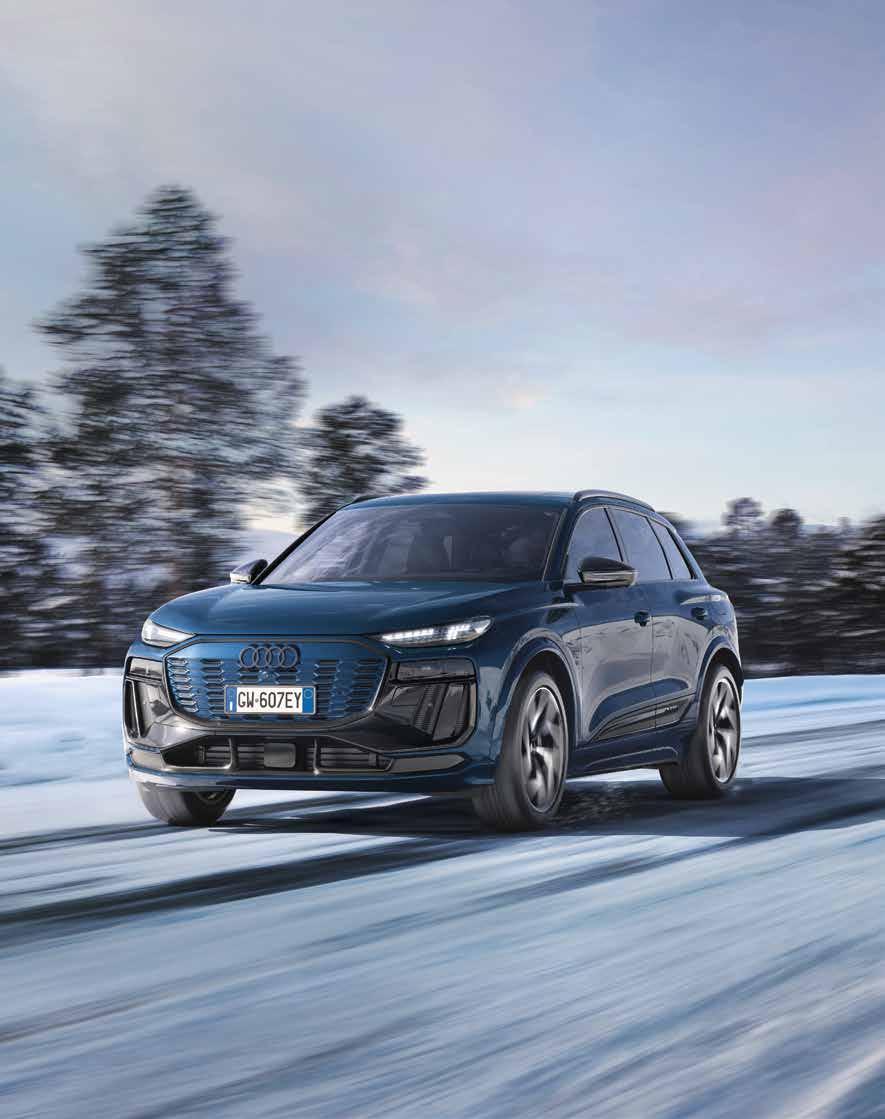
Scopri la storia di Aleksander




Scopri la storia di Aleksander


di/by ALBERTA VOLTOLINI
Aleksander Aamodt Kilde
SCIATORE DI COPPA DEL MONDO

“Sii te stesso, tutto il resto è già stato preso”, scriveva Oscar Wilde.
Che ad ogni persona corrisponda uno stile, unico e irripetibile, ne abbiamo avuto conferma nella ricerca delle storie da raccontare in questo nuovo numero di CampiglIO. Ciascuna originale e, nello stesso tempo, legata all’altra dalla comune appartenenza alle categorie della passione, della determinazione, del coraggio e del talento. Presentiamo Eliseo Franchini, il tatuatore che, seguendo la voce della montagna e della natura, al confine tra arte e artigianato, interpreta la millenaria tradizione del tatuaggio. Raccontiamo Palmira Stedile, la “Signora dei gioielli”, in occasione del cinquantesimo compleanno della sua impresa.
Sveliamo il senso per l’umano che nutre il percorso artistico di Daniela Casoni. Saliamo, poi, sopra i 2.000 metri, a conoscere Martina Marcora, Manuela Viviani e Chiara Scalfi, e la loro vita in rifugio. E poi torniamo giù, alle medie altitudini, per scoprire, con Rita Ghezzi e le figlie Vittoria, Gianna e Matilde Sartori, un modello più lento di ospitalità rurale. A proposito di stili, giochiamo con l’inverno attribuendo alla stagione della neve alcune tendenze - classica, contemporanea, innovativa, futurista, naturale, pittoresca - che restituiscono il presente e anticipano il futuro della destinazione.
CampiglIO16 cambia leggermente, al tatto, preferendo la carta naturale, in linea con l’attenzione di Azienda per il Turismo verso l’ambiente.
L’augurio, care lettrici e cari lettori, è che possiate trovare, nelle prossime pagine, un motivo per riflettere, un’ispirazione per immaginare, un sentimento per ricordare. Buona lettura!
alberta.voltolini@campigliodolomiti.it
“Be
yourself;
everyone
else is already taken”, wrote Oscar Wilde. Everyone has their own style, and it’s one of a kind. This was backed up by the search for stories to be told in this new edition of CampiglIO. Each one is unique, but they’re also connected because they all have something in common: passion, determination, courage and talent.
We meet Eliseo Franchini, the tattoo artist who interprets the ancient tradition of tattooing, following the voice of the mountains and nature, on the borderline between art and craft. We tell the story of Palmira Stedile, the “Lady of Jewellery”, on the occasion of the 50th anniversary of her company.
We’re going to look at the human side of Daniela Casoni’s artistic journey. Then we head up to over 2,000 metres to meet Martina Marcora, Manuela Viviani and Chiara Scalfi and find out more about their life in the mountain hut. Then we head down to medium altitude to meet Rita Ghezzi and her daughters Vittoria, Gianna and Matilde Sartori, who offer a slower style of rural hospitality.
On the topic of style, we can also experiment with winter and assign some different trends to the snowy season. These could be classic, contemporary, innovative, futuristic, natural or picturesque - whatever conveys the present and anticipates the future of the destination.
CampiglIO16 has a slightly different look and feel, with the use of natural paper in line with Azienda per il Turismo’s commitment to sustainability. We hope that these pages will inspire you, encourage you to think in new ways and evoke memories you’ll treasure.
Enjoy your reading!
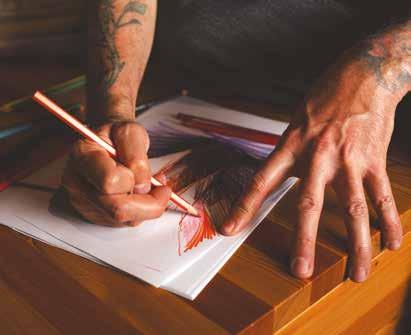
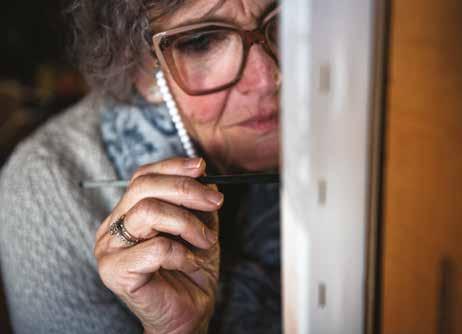

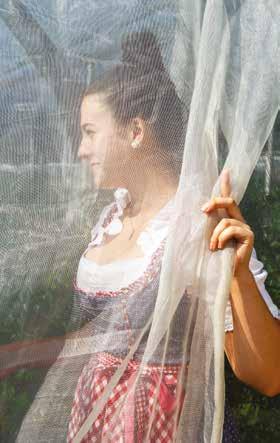

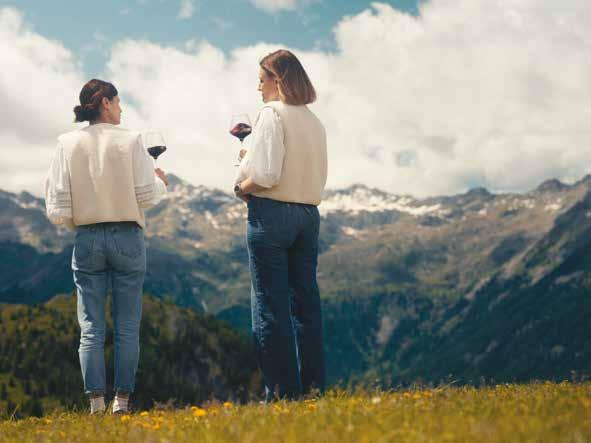
4 PUNTI DI VISTA VIEWPOINTS
LA SFIDA DELLA MOBILITÀ MOBILITY CHALLENGES
6 PUNTI DI VISTA VIEWPOINTS
LUSSO E TERRITORIO: L’ESEMPIO LEFAY WHEN LUXURY ENHANCES THE TERRITORY: LEFAY
10 PUNTI DI VISTA VIEWPOINTS
LE OLIMPIADI TRA SPORT E POLITICA
THE OLYMPICS BETWEEN SPORT AND POLITICAL LEADERSHIP
12 PUNTI DI VISTA VIEWPOINTS
IL TURISMO?
RESPONSABILE E COLLETTIVO THE TOURISM?
RESPONSIBLE AND COLLECTIVE
14 INVERNO WINTER
GLI STILI DEL TUO INVERNO CHOOSE YOUR WINTER STYLE
22 PERSONE PEOPLE
L’ARTIGIANO DEL DISEGNO
SU PELLE
Rivista semestrale edita da The semi-annual publication of Madonna di Campiglio Azienda per il Turismo Spa. Autorizzazione del Tribunale di Trento Authorized by the Trento Tribunal n. 10/2016, 05.05.2016.
Redazione Editorial Staff Amministrazione Administration via Pradalago, 4 38086 Madonna di Campiglio (TN), T. +39 0465 447501 Direttore responsabile Managing Editor Alberta Voltolini Progetto grafico e illustrazioni Graphic design, layout and Illustrations Plus Communications, Trento Foto di copertina Cover photo Foto scattata presso Photo taken at the Panorama Hotel Fontanella di/by Marco Varoli Traduzione Translations Sara Salvatore Traduzioni sarasalvatoretraduzioni.it Stampa Press Esperia Tipografia, Trento
THE ARTISIAN OF SKIN PAINTING
28 MODA FASHION
LA CULTURA DEL SAPERSI VESTIRE
THE CULTURE OF KNOWING HOW TO DRESS
30 PERSONE PEOPLE
STEDILE:
50 ANNI DI STILE
STEDILE:
50 YEARS OF STYLE
38 LIBRI BOOKS
LA MONTAGNA STAMPATA
THE MOUNTAINS IN PRINT
40 PERSONE PEOPLE
L’ARTE DI DANIELA CASONI
È “PRENDERSI CURA”
THE ART OF DANIELA CASONI: “CARING FOR OTHERS”
46 MOBILITÀ MOBILITY
CON AUDI VERSO UNA NUOVA MOBILITÀ
MOVING WITH AUDI TOWARDS A NEW MOBILITY
50 BIODIVERSITÀ BIODIVERSITY
LA VOCE SILENZIOSA DELLE API
THE SILENT VOICE OF BEES
58 ALPINISTI
TOMAS FRANCHINI:
UN ALPINISTA LIBERO
TOMAS FRANCHINI: A FREE MOUNTAINEER
62 PODCAST
LA MONTAGNA ASCOLTATA
THE VOICE OF THE MOUNTAINS
64 PERSONE PEOPLE
PICCOLE DONNE CRESCONO LITTLE WOMEN
70 ARCHITETTURA ARCHITECTURE
LA CASA CHE RISPETTA L’AMBIENTE
TRENTINO:
L’ITALIAN
VALLAZZA,
DALLA CRESCITA DELLA MICROMOBILITÀ AGLI
INVESTIMENTI NELLA GUIDA AUTONOMA, DAI PROGRESSI DELL’ELETTRIFICAZIONE AL POTENZIALE DELL’INTELLIGENZA
ARTIFICIALE GENERATIVA, LA MOBILITÀ CORRE VERSO IL FUTURO.
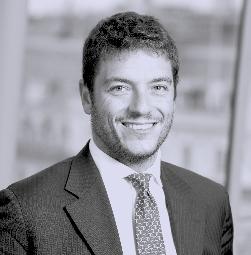
Michele Bertoncello è un Partner
dell’Ufficio di Milano di McKinsey & Company. In McKinsey dal 2007, supporta le imprese che operano nel settore automobilistico su tematiche di strategia, innovazione e M&A. È tra i membri fondatori del McKinsey Center for Future Mobility e guida le attività nell’Automotive per l’area del Mediterraneo.
Prima di iniziare la sua carriera in McKinsey, Michele ha perfezionato suoi studi alla New York University e alla Harvard University, dopo aver conseguito una Laurea in Business Administration presso l’Università Bocconi di Milano.
Michele Bertoncello is a Partner in the Milan office of McKinsey & Company. He joined McKinsey in 2007 and supports companies in the automotive sector on strategy, innovation and M&A.
He is a founding member of the McKinsey Center for Future Mobility and leads McKinsey’s automotive activities in the Mediterranean region.
Before joining McKinsey, Michele studied at New York University and Harvard University after graduating in Business Administration from Bocconi University in Milan.
In un decennio di notevoli sviluppi per la mobilità, il 2024 riesce ancora a distinguersi la crescita della micromobilità, progressi nell’elettrificazione dei veicoli e continui investimenti nella guida autonoma rientrano nel lungo elenco di quelle tendenze che stanno modificando il nostro modo di spostarci in tutto il mondo. Gli attori principali della mobilità hanno inoltre deciso di scommettere in misura maggiore in tecnologie relativamente nuove e stanno esplorando con convinzione il potenziale dell’intelligenza artificiale generativa. Tuttavia, le sfide che il settore è chiamato ad affrontare sono molteplici e complesse. Per esempio, le vendite di veicoli elettrici hanno subito un rallentamento in alcune aree geografiche, problemi tecnologici e la scarsa propensione del pubblico hanno causato l’insuccesso di alcuni progetti pilota in ambito guida autonoma e permangono le preoccupazioni sul livello di autonomia delle batterie. In questo scenario complesso, il McKinsey Center for Future Mobility, think tank globale di ricerca sulla mobilità, ha condotto una ricerca sulle preferenze dei consumatori in 15 Paesi.
Da questa indagine emergono con chiarezza alcuni messaggi relativi all’Italia. Il costo della mobilità rappresenta un fattore critico: fra i consumatori italiani che dichiarano di non considerare un’auto “battery-electric” per il loro prossimo acquisto, il 44% attribuisce la propria scelta agli alti costi d’acquisto.
L’accesso all’infrastruttura di ricarica è cruciale per l’elettrificazione: più del 60% degli attuali possessori di veicoli elettrici in Italia ritiene che la disponibilità di colonnine di ricarica pubbliche non sarà sufficiente per far fronte ai loro bisogni in futuro.
Forme alternative di trasporto sono considerate interessanti, qualora risolvano i problemi più sentiti dai consumatori: monopattini, biciclette
elettriche, ma anche roboshuttle possono contribuire a ridurre il traffico e oltre il 30% dei consumatori italiani intervistati dichiara di essere pronto a rinunciare all’utilizzo del proprio mezzo privato entro 10 anni per la maggior parte dei “casi d’uso” della vettura. La sostenibilità è ritenuta un ambito molto rilevante anche dai consumatori italiani il 38% dei consumatori che si dicono disposti a cambiare abitudini di trasporto dichiarano di volerlo fare per essere più sostenibili. In questo contesto, le sfide per la mobilità nelle località turistiche sono significative, dovendo accomodare significativi flussi di traffico concentrati in finestre temporali limitate. Questo implica che, nei periodi di picco, si presentino complessità simili a quelle di una grande città – congestione, inquinamento, mancanza di parcheggi e di colonnine - a fronte dell’impossibilità di ammortizzare gli investimenti necessari ad affrontare strutturalmente questi problemi lungo tutto l’arco dell’anno.
Diventa pertanto fondamentale definire modelli di mobilità “intelligenti”, in cui l’utilizzo delle vetture per avvicinarsi alle località turistiche sia accompagnato da un’offerta efficace di mobilità di “ultimo miglio”, in grado di far fronte alle esigenze di spostamento dei turisti e al contempo di limitare l’utilizzo delle vetture nelle aree ad alta densità turistica. La combinazione di parcheggi di scambio adeguatamente forniti di colonnine di ricarica, navette, opzioni di micromobilità e taxi può aiutare a ridurre la congestione, ancor più se si prevedono interventi infrastrutturali per regolare i flussi di traffico in modo dinamico.
Per rispondere alle diverse sfide, autorità turistiche, costruttori auto e player nel settore della mobilità dovranno rafforzare la collaborazione con l’obiettivo di rendere l’esperienza turistica ancora più piacevole e sostenibile, con un occhio attento alle nuove generazioni.
From the growth of micro-mobility to investments in autonomous driving, from advances in electrification to the potential of generative artificial intelligence, mobility is racing towards the future.
In a decade of remarkable developments for mobility, 2024 still manages to stand out: the growth of micromobility, advances in vehicle electrification and continued investments in autonomous driving are part of the long list of those trends that are changing the way we move around the world. Major players in mobility have also decided to bet more heavily on relatively new technologies and are exploring the potential of generative artificial intelligence with conviction. However, the sector is facing numerous and complex challenges. For example, sales of electric vehicles have slowed in some geographical areas, technological problems and a
lack of public appetite have led to the failure of some pilot projects in the field of autonomous driving, and concerns remain about the level of battery autonomy.
Against this complex backdrop, the McKinsey Center for Future Mobility, a global mobility research think tank, conducted a survey on consumer preferences in 15 countries. The survey revealed a number of interesting things about Italy. The cost of mobility is a serious factor: among Italian consumers who say they would not consider a battery-electric car for their next purchase, 44% say it’s because of the high purchase costs.
Access to charging infrastructure is crucial for
electrification: more than 60% of current EV owners in Italy believe that the availability of public charging stations will not be sufficient to meet their needs in the future.
Alternative forms of transport are considered attractive if they solve the problems most felt by consumers: electric scooters and bikes, but also robo-shuttles can help reduce traffic, and more than 30% of Italian consumers surveyed say they are ready to give up using their private car in most “use cases” within 10 years. Sustainability is also considered very relevant by Italian consumers: in fact, 38% of those who say they are open to changing their transport habits say they want to do so to be more sustainable. In this context, mobility in tourist resorts is a real challenge. They have to cope with a lot of traffic concentrated in a short time. This means that, during peak periods, problems similar to those of a large city – congestion, pollution, lack of parking spaces and charging stations – arise. It’s difficult to recoup the investments needed to address these problems structurally throughout the year. It is therefore essential to define “smart” mobility models, in which the use of cars to reach tourist destinations is accompanied by an effective “last mile” mobility offer, capable of meeting the travel needs of tourists and at the same time limiting the use of cars in tourist-dense areas. The combination of exchange car parks, adequately equipped with charging points, shuttles, micro-mobility options and taxis can help reduce congestion, even more so if infrastructure measures are planned to regulate traffic flows dynamically. To meet the various challenges, tourism authorities, car manufacturers and mobility stakeholders will need to step up their cooperation to make the tourist experience even more enjoyable and sustainable, with an eye on the new generations.

I RESORT LEFAY SONO IL SIMBOLO DI UN NUOVO LUSSO ASSOCIATO ALLO SPAZIO, AL BENESSERE, AL TEMPO PER SÉ E AL CONTATTO CON LA NATURA.
Sin dalla fondazione , era chiaro per Lefay che la sua identità fosse radicata in un nuovo tipo di lusso. Un lusso lontano dall’opulenza, associato a spazio, benessere, tempo per sé stessi e contatto con la natura. Una filosofia concepita nel 2006 che, negli ultimi anni, è divenuta tendenza.
Se questo, da un lato, è positivo, è pur vero, d’altra parte, che le caratteristiche associate a questa interpretazione del lusso non sono facilmente
riproducibili, non senza adeguati investimenti, una coerente cultura d’impresa e una profonda conoscenza del mondo benessere. I Resort Lefay, infatti, sono situati in location immerse nel paesaggio e costruitI da zero, con centrali tecnologiche per la produzione di energia pulita. Le SPA, a partire da 4.000 mq, offrono ambienti ampi, distribuiti su diversi livelli, con molteplici piscine e aree umide, gestite con avanzati software. Tutto lo Staff è altamente formato, soprattutto il Team Lefay SPA. Fra le meravigliose Dolomiti, questi principi sono stati ulteriormente perseguiti con significativi upgrade nell’esperienza di soggiorno: le ultime stagioni hanno confermato il trend secondo cui l’Ospite è alla ricerca di un servizio eccellente, ma, allo stesso tempo, di esperienze che lo mettano a contatto con la natura e le persone della destinazione. Da sempre Resort Lefay incoraggiano viaggiatori a visitare le
destinazioni in cui sono situate le strutture, tuttavia, negli ultimi mesi a Pinzolo, è stato implementato un programma strutturato per accontentare questo crescente bisogno. Una selezione di escursioni suddivisa in due modalità: attività personalizzabili a pagamento, in grado di andare incontro a qualsiasi richiesta, e proposte gratuite giornaliere. Ogni giorno il Resort offre itinerari accompagnati da guide esperte del posto. In aggiunta, è stato creato il
programma Lefay SPA Active & Balance, che unisce la teoria del mondo energetico al potere terapeutico della natura, con escursioni esterne a tema. Il connubio tra eccellenza indoor e outdoor ci ha permesso di arricchire sempre più l’esperienza di soggiorno, consentendoci di confermare la crescita dei primi cinque anni, sia nel mercato domestico, sia in quello internazionale. Continueremo a lavorare affinché le preferenze degli Ospiti di tutto il mondo
vengano anticipate e soddisfatte. Indubbiamente è necessario trovare supporto da parte del territorio, impersonificato da enti, organizzazioni o piccole realtà. Grandi sforzi sono profusi in questa direzione: il programma di escursioni è portato avanti grazie alla partnership con Mountain Friends, le degustazioni sono effettuate a Pinzolo dalla storica bottega Caola e collaboriamo con Azienda per il Turismo Madonna di Campiglio per
attività di marketing. Il territorio è inoltre promosso tramite materiali dedicati all’interno del Resort e sui nostri canali web. Siamo soddisfatti dei risultati raggiunti, ma ci aspettiamo un’ulteriore crescita e molto c’è ancora da fare. I soggiorni che portano alta occupazione ed elevati ricavi sono nei mesi di alta stagione, tuttavia, come avvenuto sul Lago di Garda, ci stiamo impegnando per destagionalizzare. Grazie ai nostri spazi e alla SPA, crediamo che il nostro Resort
Dopo una laurea in Inghilterra in Hospitality & Licensed Retail Management, ha avuto la grande opportunità di lavorare per alcuni degli hotel più belli di Londra e dell’Oceano Indiano, seguita da un’esperienza come consulente di viaggio e da un’indimenticabile avventura come Country Sales Manager per l’Ente del Turismo di Dubai e l’Ente del Turismo delle Bahamas. Nel 2014 è entrata a far parte di Lefay Resorts & Residences come Sales Manager e nel 2021 è stata nominata Senior Director of Sales & Revenue. Da quando è entrata a far parte del Gruppo, che oggi comprende due gioielli, Lefay Resort & SPA Lago di Garda e Lefay Resort & SPA Dolomiti, si è resa conto che questa collezione privata di ecoresort è la più grande passione della sua vita e che, dopo molti anni di viaggi, ha finalmente trovato il suo posto nel mondo.
Having travelled alone since the age of 6, Manola Fresta decided early on that the tourism sector would be her future. After completing a degree in Hospitality & Licensed Retail Management in England, she had the opportunity to work for some of the most prestigious hotels in London and the Indian Ocean. She then gained experience as a travel consultant and took on the role of Country Sales Manager for the Dubai Tourist Board and the Bahamas Tourist Board, which proved to be an invaluable learning experience. In 2014, she joined Lefay Resorts & Residences as Sales Manager and was appointed Senior Director of Sales & Revenue in 2021. Since joining the group, which now includes two real jewels, Lefay Resort & SPA Lago di Garda and Lefay Resort & SPA Dolomiti, she has realised that this private collection of eco-resorts is the greatest passion of her life. After many years of travelling, she has finally found her place in the world.

possa arrivare a livelli di buona occupazione tutto l’anno. Sul Lago di Garda, a Gargnano, questo processo è avvenuto confermando una richiesta omogenea sull’anno, seppur con picchi di alta stagione.
Ciò ha generato l’effetto di destagionalizzazione anche sulle attività locali limitrofe, garantendo agli Ospiti la possibilità di vivere il Garda anche all’esterno della struttura.
Ci auguriamo che questo possa avvenire gradualmente anche a Pinzolo: essendo un centro
contraddistinto da una vivace comunità, riteniamo che abbia la possibilità di sviluppare la propria attrattiva in ogni mese dell’anno. Parallelamente, ci auguriamo che le realtà turistico-commerciali locali possano percorrere questa strada. Una menzione finale va infine dedicata al tema della viabilità nel paese di Pinzolo: auspichiamo che la nuova circonvallazione e la successiva sistemazione della zona di arrivo della funivia siano avviate al più presto.
Lefay resorts are the symbol of a new kind of luxury that gives you space, well-being, time for yourself and contact with nature.
Right from the start, Lefay knew its brand was based on a new idea of luxury. This luxury was distinct from traditional opulence and was instead associated with spaciousness, well-being, personal time and contact with nature. This philosophy was first conceived in 2006 and has since become a prominent trend in the market.
While this is a good thing, it’s also important to remember that the qualities associated with this idea of luxury aren’t easy to copy. This requires a significant investment in terms of resources, a consistent corporate culture, and a deep understanding of the wellness industry. Lefay Resorts are built into the landscape and constructed from scratch, with technological power plants for the production of clean energy. The spas range in size from 4,000 to 10,000 square metres and offer spacious environments
on different levels, with multiple swimming pools and wet areas, all of which are managed with advanced software. All staff undergo rigorous training, with particular emphasis on the Lefay SPA team.
In the beautiful Dolomites, these principles have been taken to the next level with significant improvements to the holiday experience: recent seasons have confirmed the trend that guests are looking for excellent service, but also for experiences that bring them into contact with the nature and people of the destination. Lefay Resorts have always encouraged travellers to visit the places where the facilities are located, but in recent months we’ve put together a structured programme in Pinzolo to meet this growing need. There is a choice of excursions, split into two types: customisable paid activities, which can be tailored to your needs, and free daily suggestions. The resort offers daily tours with experienced local guides.
Plus, the Lefay SPA Active & Balance programme has been developed, combining the theory of the energetic world
“PINZOLO, ESSENDO UN CENTRO CONTRADDISTINTO DA UNA VIVACE COMUNITÀ, RITENIAMO CHE ABBIA LA POSSIBILITÀ DI SVILUPPARE LA PROPRIA ATTRATTIVA IN OGNI MESE DELL’ANNO”.
“WE BELIEVE THAT PINZOLO, AS A CENTRE WITH A LIVELY COMMUNITY, HAS THE POSSIBILITY TO DEVELOP ITS ATTRACTIVENESS IN EVERY MONTH OF THE YEAR”.
with the therapeutic power of nature, with themed outdoor activities.
Our unique combination of indoor and outdoor excellence allows us to continually enhance the guest experience. This has enabled us to achieve even greater growth than we did in the first five years, both in our domestic and international markets.
We are committed to continuing our efforts to anticipate and meet the preferences of our guests from all over the world. Undoubtedly, it is necessary to find support from the local area, embodied by entities, organisations or small realities.
Significant efforts are being made in this area: the excursion programme is delivered in collaboration with Mountain Friends, tastings are organised in Pinzolo by the historic Caola shop, and we collaborate with Azienda per il Turismo Madonna di Campiglio for marketing activities. The area is also promoted through specific material in our resort and on our web channels.
We are pleased with the results achieved to date, but expect further growth and recognise there is still much to be done.
The stays that generate the highest occupancy and revenue are during the high season. However, as with Lake Garda, our goal is to reduce seasonality. Our resort is well-positioned to achieve good occupancy levels all year round, thanks to our spaces and the SPA. At Lake Garda, in Gargnano, this process has already taken place, confirming a homogeneous demand throughout the year, albeit with peaks in the high season. This has generated a deseasonalisation effect on neighbouring local activities, ensuring that guests can also experience Garda outside the resort.
We’re hoping that this can also happen gradually in Pinzolo. As a lively community, we believe it has the opportunity to develop its attractiveness in every month of the year. At the same time, we’d love to see the local tourist and commercial businesses follow suit. Finally, we’d like to mention the road system in Pinzolo: we’re really hoping the new ring road and the subsequent development of the cable car arrival area will get started as soon as possible.
DOPO PARIGI VERSO MILANO CORTINA 2026. SE L’EUROPA AVESSE PARTECIPATO CON UNA SUA SQUADRA SAREBBE STATA LA PIÙ MEDAGLIATA.
Sono passati appena un paio di mesi dalla celebrazione dei Giochi
Olimpici estivi di Parigi e già il conto alla rovescia è iniziato per quelli invernali di Milano Cortina 2026. È naturale allora porsi la domanda del valore – sportivo, innanzitutto, ma anche politico ed economico – che ha un avvenimento che suscita grandi entusiasmi ma attira anche critiche e sospetti.
Le Olimpiadi sono innanzitutto una grande festa dello sport ed è giusto e naturale che ogni edizione abbia suoi eroi tra coloro che vanno citius, altius, fortius. La nostra cinquina di stelle olimpiche è composta da Novak Djokovic, Paola Egonu, Armand Duplantis, Luc Marchand e Mijaín López. Il più grande tennista di tutti i tempi aggiunge l’unico titolo che mancava al suo palmarès; la fuoriclasse che trascina l’Italvolley; il saltatore con l’asta che realizza il suo ottavo record del mondo; il nuotatore capace di vincere due ori a distanza di meno di due ore; e l’unico atleta nella storia ad aver vinto cinque medaglie d’oro olimpiche consecutive in una disciplina individuale. Ma Giochi sono anche un
tassello nell’articolato sistema delle relazioni internazionali e allora nessuna medaglia vale di più di quella conquistata da Cindy Ngamba. La pugile – originaria del Camerun ma costretta all’esilio in Gran Bretagna fin da piccina – è stata infatti la prima concorrente della squadra dei rifugiati, alla sua terza partecipazione, a salire sul podio. Un bronzo per un contingente di 37 atleti, di cui 15 nati in Iran, oltre che Afghanistan, Siria, Etiopia, Venezuela ed altre nazioni in preda a conflitti. Il CIO, che ha insignito dell’Alloro olimpico Filippo Grandi, Alto Commissario delle Nazioni Unite per Rifugiati, ha dimostrato lungimiranza politica, oltre che solidarietà sincera. La stessa Ngamba deve ancora vincere una gara ancora più sfidante di quella combattuta sul ring, quella della cittadinanza britannica. Se lo sport è però anche la più importante tenzone in cui derimere senza spargimento di sangue la questione della leadership globale, allora difficile sottovalutare l’exploit del Team USA nel superare cinesi nel computo delle medaglie d’oro, il metodo più
diffuso per decidere chi è il più forte. Ma non l’unico, dato che proprio gli americani utilizzano quello delle medaglie totali, in cui dominano dal 1996, tranne che a Pechino 2008. Guidare il medagliere serve da sempre per accumulare soft power, anche grazie al frequente ricambio di role models e influencers, e prestigio del Sistema Paese. Come leggere allora la performance delle nazionali europee? Un ipotetico Team EU avrebbe
fatto una gran bella figura, conquistando 97 ori, a fronte di 80 per USA+Cina. In realtà le cose sono più complicate, dato che a Parigi in ogni gara c’erano molti più atleti europei – 19 rispetto a 6 americani e cinesi nella maratona maschile, 10 a 4 nei 100 metri stile libero femminili – con una conseguente moltiplicazione delle opportunità di vittoria. Il che non toglie lustro al dominio europeo negli sport a squadra e in particolare in quelli a palla.
From Paris to Milano Cortina 2026. If Europe had taken part with its own team, it would have come out on top in the medal table.
It’s only been a couple of months since the Summer Olympics in Paris, and already we are counting down to the Winter Olympics in Milano Cortina 2026. It is natural, then, to question the value - primarily sporting, but also political and economic - of an event that generates so much
enthusiasm, but also criticism and suspicion.
The Olympics are first and foremost a great celebration of sport. It’s only right and natural that each edition has its heroes among those who go the fastest, the highest, and the strongest. Our five Olympic stars are Novak Djokovic, Paola Egonu, Armand Duplantis, Luc Marchand and Mijaín López. The greatest tennis player of all time has now won the one title that was missing from his palmarès; the star athlete has led Italvolley to victory; the pole vaulter has set his eighth world record; the swimmer has won two gold medals in less than two hours; and the only athlete in history to have won five consecutive Olympic gold medals in an individual discipline. But the Games are also a key part of the bigger picture of international relations, so no medal is more valuable than the one Cindy Ngamba won. The
boxer, originally from Cameroon but forced into exile in Great Britain since childhood, was the first competitor from the refugee team, in its third participation, to stand on the podium. A bronze for a contingent of 37 athletes, 15 of whom were born in Iran, as well as Afghanistan, Syria, Ethiopia, Venezuela and other countries affected by conflict.
The IOC, which awarded the Olympic Laurel to Filippo Grandi, UN High Commissioner for Refugees, showed real political foresight as well as sincere solidarity. Ngamba still has to win an even more challenging contest than the one she fought in the ring, which is for British citizenship.
If sport is the best way to settle the question of global leadership without bloodshed, then Team USA’s success in overtaking China in the gold medal tally is impressive. Gold medals are a popular way of deciding who is the strongest. But it’s not
the only measure, since the Americans also use the total medals won, in which they have dominated since 1996, except for Beijing 2008. Leading the medal count has always been a great way to build soft power.
This is also thanks to the frequent turnover of role models and influencers, as well as the prestige of the country system. So, what’s the best way to assess how the European national teams performed? A hypothetical Team EU would have done really well, taking 97 golds compared to 80 for USA+China. In reality, things are more complicated because there were more European athletes in each race in Paris - 19 to 6 Americans and Chinese in the men’s marathon, and 10 to 4 in the women’s 100 metres freestyle. This meant there were more opportunities for victory. That doesn’t detract from the fact that Europe is still dominant in team and ball sports.
Andrea Goldstein è autore di Quando l’importante è vincere – politica ed economia delle Olimpiadi (il Mulino 2024) presentato il 17 agosto 2024 a Madonna di Campiglio.
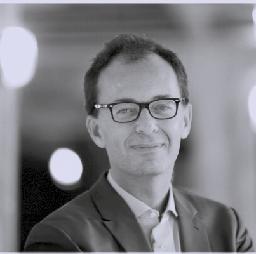
Andrea Goldstein è un economista che lavora presso l’OECD/ OCSE (Organizzazione per la Cooperazione e lo Sviluppo Economico) a Parigi, socio fondatore di M&M Idee per un paese migliore, editorialista associato de “Il Sole 24 Ore”, collabora regolarmente con Aspen Institute Italia ed è Past President della Bocconi Alumni Association di Parigi.
Con il Mulino ha pubblicato, tra gli altri, “BRIC” (2011), “L’economia del Brasile” (2012), “Il miracolo coreano” (2013), “Agenda Italia 2023” (2018), “Il potere del pallone” (2022).
Andrea Goldstein is an economist at the OECD (Organisation for Economic Co-operation and Development) in Paris, a founding member of M&M Idee per un paese migliore, an associate columnist for Il Sole 24 Ore, a regular contributor to the Aspen Institute Italia and a former president of the Bocconi Alumni Association in Paris. His publications for Il Mulino include “BRIC” (2011), “L’economia del Brasile”(2012),“Il miracolo coreano” (2013), “Agenda Italia 2023” (2018), “Il potere del pallone” (2022). di/by ANDREA GOLDSTEIN
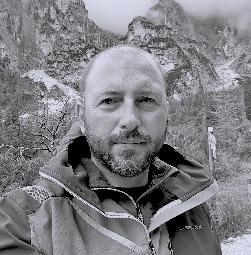
Ingegnere ambientale e socio della sezione SAT di Centa San Nicolò, collabora con la SAT centrale dal 2001 attraverso la Commissione Tam-Tutela ambiente montano di cui è stato presidente prima di assumere, fino al 2024, il medesimo ruolo al vertice della Commissione Glaciologica. Membro del Comitato Glaciologico italiano, da maggio 2024 è presidente della SAT.
An environmental engineer and member of the SAT section in Centa San Nicolò, Christian has been working with the central SAT since 2001 through the Tam Commission for the protection of the mountain environment which he chaired before taking on the same role at the head of the Glaciological Commission until 2024. He is also a member of the Italian Glaciological Committee and has been president of SAT since May 2024.
SULLE TERRE ALTE IL TURISMO HA BISOGNO
DI UN RAPPORTO ARMONIOSO E SOSTENIBILE
CON L’AMBIENTE ALPINO.
La SAT, Società degli Alpinisti Tridentini , fin dalla sua fondazione avvenuta proprio a Madonna di Campiglio nel 1872, ha puntato a promuovere la conoscenza delle montagne del Trentino e lo sviluppo turistico delle vallate attraverso diverse modalità: dalla costruzione di rifugi alla realizzazione di sentieri, da aiuti agli albergatori * alla prima
organizzazione delle guide alpine, fino all’istituzione, nel 1952, del Soccorso Alpino Trentino con la costituzione delle prime stazioni di Pinzolo e Madonna di Campiglio. Da allora molto è cambiato. L’alpinismo e la frequentazione delle montagne si sono fortemente evoluti, passando da un alpinismo di “scoperta” e “conquista” ad una frequentazione che, senza
tralasciare l’attività alpinistica, si è orientata all’attività escursionistica e ricettiva di alta quota. Così, nel tempo, la montagna è diventata via via più accessibile anche nella stagione invernale, con il notevole aumento di scialpinisti o escursionisti con ciaspole. In aggiunta, recenti fenomeni come il Covid hanno portato un nuovo turismo di riscoperta delle terre alte.
Secondo la SAT, guardando al futuro, il turismo ambientale della montagna deve basarsi su un equilibrio delicato tra l’esperienza del visitatore e la protezione dell’ecosistema montano. In un mondo segnato da risorse sempre più limitate e dal riscaldamento globale, immagino un turismo responsabile che riesca a valorizzare la natura senza comprometterla.
I recenti cambiamenti climatici hanno infatti mostrato come la natura sia fragile e mutevole e alcune risorse, una volta considerate potenzialmente illimitate, come l’acqua e la neve, oggi rendono più complessa la gestione delle strutture e la potenziale offerta di ospitalità.
È quindi necessario che l’evoluzione del turismo montano veda crescere sul territorio, di pari passo, iniziative di sensibilizzazione legate all’intero “ecosistema montagna” ed alla sua fragilità, valorizzando il rispetto delle biodiversità e ritmi naturali degli ecosistemi, slegandosi da una fruizione legata esclusivamente al binomio inverno/estate.
Come? Incentivando una fruizione lenta e consapevole dell’ambiente e mettendo
in primo piano la montagna meno nota in altri periodi dell’anno, motivo per il quale molti rifugi della SAT negli anni hanno potuto beneficiare di allungamenti del periodo di apertura oltre il classico estivo o primaverile.
Alla SAT e ad altri operatori turistici il compito di sviluppare offerte ed itinerari che rispettino i limiti di capacità dei luoghi anche a seconda del diverso periodo dell’anno, evitando il sovraffollamento e il conseguente degrado ambientale che potrebbe portare una sensibile riduzione della percezione dell’attrattività di un luogo. Credo che il turismo della montagna del futuro non potrà più essere basato solo su un modello di sviluppo intensivo del territorio, ma debba piuttosto completarsi con un’offerta consapevole che garantisca un rapporto armonioso e sostenibile (anche economicamente) con l’ambiente alpino, evitando tutti fenomeni che recentemente vengono evidenziati come “over”.
Solo attraverso una visione collettiva e responsabile sarà possibile preservare questi ambienti unici per le generazioni future.
* Sia per ottemperare a compiti statutari, sia per spirito irredentista, agli albori della sua storia la SAT cercava di favorire gli albergatori in vari modi come la cessione a basso prezzo di propri terreni a privati intenzionati ad erigere alberghi alpini o finanziandoli a prezzo di favore a patto che esponessero lo stemma SAT. Dal 1889 fu istituito un premio in fiorini per i figli degli albergatori che avessero voluto studiare all’estero per meglio imparare il mestiere. Sempre nel 1889 la SAT è tra i promotori della Società incremento forestieri e per la costruzione di alberghi nel Trentino.
* In the early days of its existence, the SAT tried to help hoteliers in various ways, both to fulfil its legal obligations and out of a spirit of irredentism: for example, it gave away its land at a low price to private individuals who wanted to build hotels in the Alps, or it financed them at a favourable rate, as long as they displayed the SAT coat of arms.
In 1889, a prize in florins was established for the children of hoteliers who wished to study abroad to learn the profession. Also in 1889, the SAT was one of the promoters of the Società incremento forestieri e per la costruzione di alberghi nel Trentino (Society for the promotion of foreigners and hotel construction in Trentino).
Tourism in the mountains requires a harmonious and sustainable relationship with the alpine environment.
Since its foundation in Madonna di Campiglio in 1872, the SAT, Società degli Alpinisti Tridentini (Alpine Society of Trentino), has been promoting the mountains of Trentino and developing tourism in the valleys. It has done this in a variety of ways: from building refuges to constructing paths, from supporting hoteliers* to founding the first organisation of mountain guides, and finally, in 1952, it founded the Soccorso Alpino Trentino (Alpine Rescue of Trentino) with the first stations in Pinzolo and Madonna di Campiglio. A lot has changed since then. Mountaineering and going up into the mountains have changed a lot over time. It’s no longer about discovering and conquering, it’s now about hiking and staying in high-altitude accommodation, without forgetting mountaineering. Over time, the mountains have become more accessible, even in winter, with an increasing number of ski mountaineers and snowshoe trekkers. In addition, the recent pandemic has brought a new wave of tourists to our mountains to discover them anew.
Looking to the future, SAT believes that sustainable mountain tourism must be based on a delicate balance between the visitor’s experience and the protection of the mountain ecosystem. In a world characterised by increasingly limited resources and global warming, I see responsible tourism as a way of enhancing nature without compromising it.
It’s clear that recent climate changes have shown us how
vulnerable and changeable nature is. Some resources that were once thought to be limitless, such as water and snow, are now making it more difficult to manage facilities and plan potential hospitality offerings.
For the development of mountain tourism, it is therefore necessary to increase the number of initiatives aimed at raising awareness of the entire “mountain ecosystem” and its fragility, emphasising respect for biodiversity and the natural rhythms of ecosystems. And we need to move away from an approach tied exclusively to the winter/summer binomial. How? By encouraging a slower, more considered approach to the environment and shining a light on lesser known mountains at other times of the year. This is why many SAT refuges have been able to extend their opening periods beyond the traditional summer and spring. It’s down to SAT and other tour operators to come up with offers and itineraries that respect the capacity limits of places, also according to the different times of the year, in order to avoid overcrowding and the environmental damage that could make a place less attractive.
I believe that the mountain tourism of the future can no longer be based solely on a model of intensive land development, but must be complemented by a conscious offer that guarantees a harmonious and sustainable relationship (also economically) with the Alpine environment, avoiding all the phenomena that have recently been highlighted as “over”.
Only through a collective and responsible vision will it be possible to preserve these unique environments for future generations.
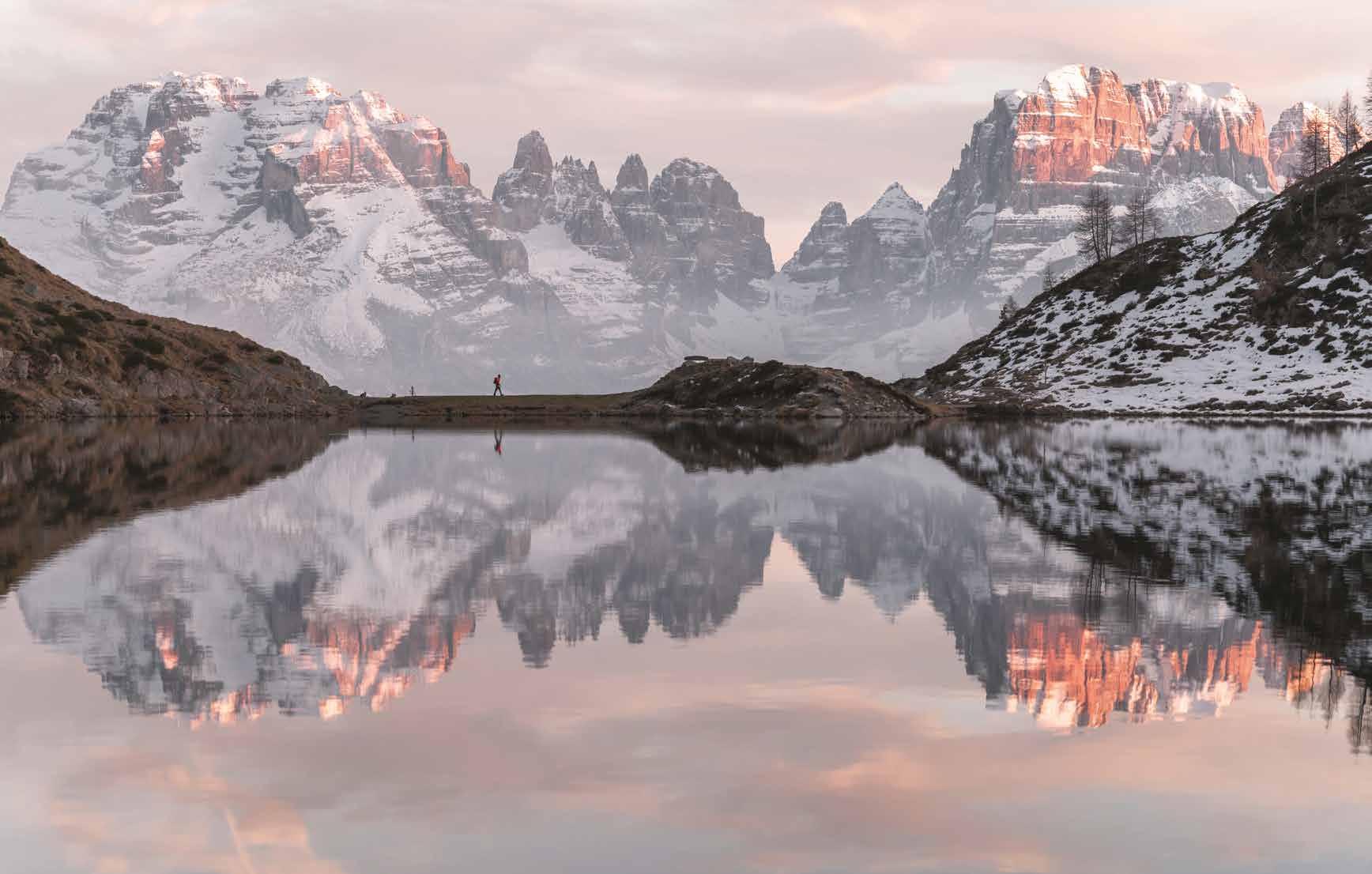
stili per vivere la bellezza dell’inverno a Madonna di Campiglio insieme a Pinzolo e a un suggestivo territorio attorno che può sorprendere il viaggiatore più curioso. Il classico, per chi ama l’intramontabile divertimento sugli sci, il contemporaneo, per chi apprezza progetti architettonici nuovi e di design, l’innovativo per chi coglie vantaggi della digitalizzazione e l’importanza della sostenibilità, il futurista, per chi vive in viaggio e cerca una confortevole postazione per lavorare da remoto, il naturale per chi esplora la via del benessere facendosi coccolare in SPA d’eccezione all’interno di eleganti hotel o affidandosi al potere benefico della natura, anche sotto la neve, infine il pittoresco per chi segue originali rotte lungo itinerari poco conosciuti.

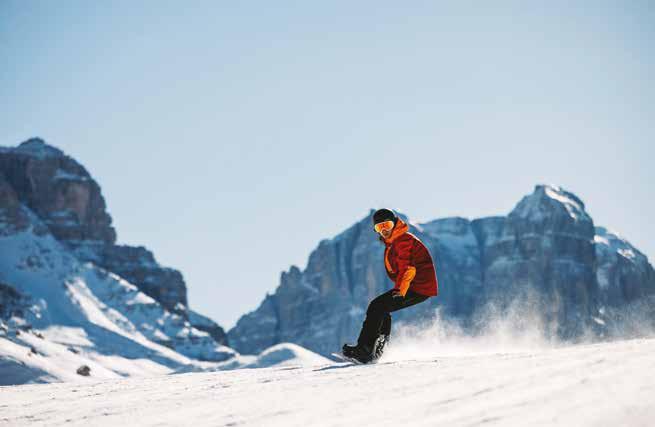
Pre-opening of the ski season in Madonna di Campiglio, on the Grostè slopes, on 23th November, continuous opening from 29th November. Seamless access to the Pinzolo and FolgaridaMarilleva lifts from 5th December.
Six different styles to enjoy the winter beauty of Madonna di Campiglio, Pinzolo and the surrounding area, which is sure to delight even the most curious traveller. The classic, for those who love timeless fun on skis; the contemporary, for those who appreciate new architectural projects and design; the innovative for those who understand the benefits of digitalisation and the importance of sustainability; the futuristic for those who live on the move and are looking for a comfortable place to work remotely; the natural for those who want to explore the path to wellness
by pampering themselves in exceptional spas in elegant hotels or by relying on the beneficial power of nature, even in the snow; and finally the picturesque, for those who follow original routes along little-known itineraries. Six ways to fully experience the mountains in winter.
CLASSICO , destinato agli estimatori dello sci, una passione intramontabile e in grado di motivare, anche negli anni ‘20 del Duemila, una vacanza lunga una settimana. La Skiarea, la più grande del Trentino, quest’anno cambia nome e sposta l’attenzione dal più generale “Campiglio” al più specifico “Madonna di Campiglio”, punto di riferimento tra le destinazioni dell’arco alpino con oltre cento anni di storia nel turismo. Ha 156 km di piste con 100 tracciati e 3 snowpark serviti da 60 moderni impianti di risalita che collegano Madonna di Campiglio, il cuore della Skiarea, con il Doss del Sabion a Pinzolo e Folgarida-Marilleva in Val di Sole. Tutt’attorno è disegnato il suggestivo teatro naturale delle Dolomiti di Brenta, con le guglie di roccia che
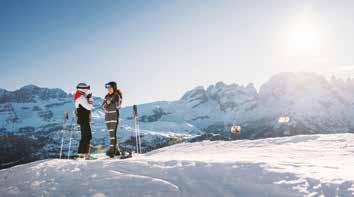
si arrossano al tramonto, e dell’Adamello-Presanella, con i ghiacciai che resistono al tempo. Qua e là completano la Skiarea Madonna di Campiglio i rifugi e i ristoranti sulle piste, luoghi incantevoli per una pausa golosa, tipica o gourmet secondo i gusti. L’inverno sopra 2.000 metri continua da metà novembre ad almeno metà aprile, quando giornate più lunghe e temperature più miti regalano il perfetto equilibrio tra neve e sole.
is perfect for skiing fans who want to indulge their timeless passion and enjoy a week-long holiday, even in the 2020s. The Skiarea, the largest in Trentino, is changing its name this year. It’s shifting its focus from the more general “Campiglio” to the more specific “Madonna di Campiglio”. This is a reference point among Alpine destinations with over one hundred years of history in tourism. It boasts 156 km of slopes with 100 tracks and 3 snowparks, served by 60 modern lifts. These connect Madonna di Campiglio, the heart of the Skiarea, with Doss del Sabion in Pinzolo and Folgarida-Marilleva in Val di Sole. All around, the Brenta Dolomites are a stunning natural theatre, with rocky spires reddening at sunset and glaciers that stand the test of time on the Adamello-Presanella. The Madonna di Campiglio Ski Area is dotted with mountain huts and restaurants on the slopes, offering a great place for a tasty, typical or gourmet break, depending on your taste. The winter season above 2,000 metres lasts from mid-November to at least mid-April, when longer days and milder temperatures provide the perfect balance of snow and sun for skiing and snowboarding.
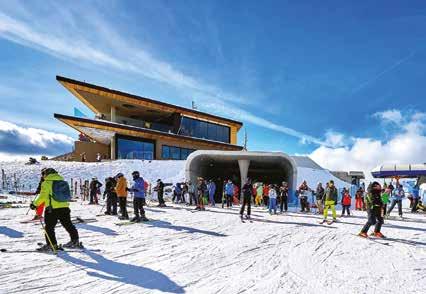
entra in sintonia con chi ama il bello dello stile italiano e un segno di design tra i monti. L’esempio più recente è il nuovo Doss del Sabion il progetto di architettura e tecnologia, attento all’inserimento nell’ambiente, che ha cambiato il volto del punto più alto e panoramico delle piste di Pinzolo. Dopo l’entrata in scena, lo scorso inverno, della nuova telecabina di collegamento Prà RodontDoss del Sabion, con partenza a arrivo ipogei, e dei due nuovi ristoranti, uno dei quali, l’Attic, ha sposato la filosofia del fine
dining, si prosegue con gli ultimi particolari. Così il Doss migliora ancora e si presenta al debutto stagionale con un impianto di risalita (PinzoloPrà Rodont-Doss del Sabion) completamente senza barriere e un nuovo belvedere che si apre da dentro la montagna verso l’esterno affacciandosi su un sorprendente panorama di valli e paesaggi tra più suggestivi delle Alpi. Ci sono anche un nuovo lounge bar accanto al ristorante Attic e il Panoramic cafè al piano inferiore.
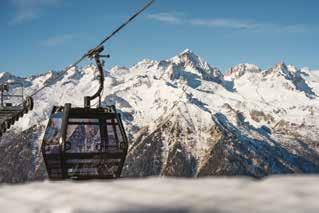
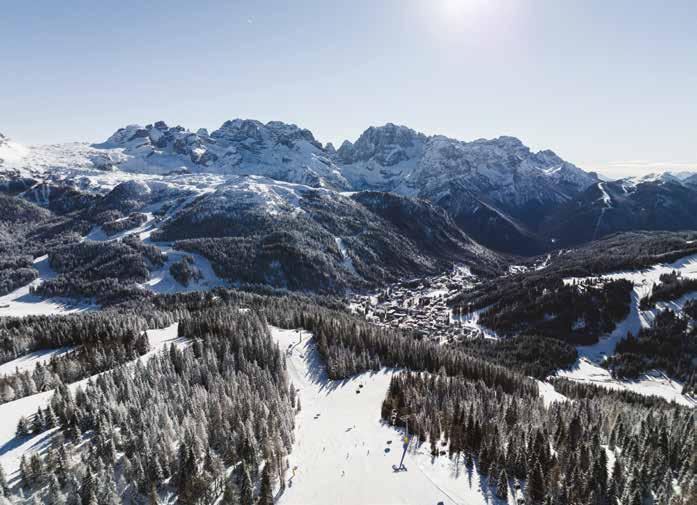
is in tune with those who love the beauty of Italian style and a sign of design in the mountains. The latest example of this is the new Doss del Sabion, an architectural and technological project that has been designed to blend in with its surroundings and has changed the face of the highest and most panoramic point on the Pinzolo slopes. After last winter’s inauguration of the new Prà Rodont-Doss del Sabion cableway, with departure and arrival underground, and the two new restaurants, one of which, the Attic, has adopted
the philosophy of fine dining, the latest details are now being added. Thus the Doss is being improved again and is now open for the season with a completely barrier-free lift (Pinzolo-Prà Rodont-Doss del Sabion) and a new viewing platform that opens up from the inside of the mountain to the outside, overlooking an amazing panorama of valleys and landscapes that are among the most evocative in the Alps. There is also a new lounge bar next to the Attic Restaurant and the Panoramic Café on the ground floor.
Il nuovo Doss del Sabion è un progetto di architettura e tecnologia attento all’inserimento nel paesaggio.
The new Doss del Sabion is an architectural and technological project that has been designed to blend in with its surroundings.
è rivolto a chi accoglie le novità con fiducia. A Madonna di Campiglio riguarda più progetti, in particolare la digitalizzazione e la sostenibilità. Dall’inverno 2021/’22 il percorso di digitalizzazione dei servizi legati allo sci - che fa risparmiare tempo e denaro agli sciatori - è inarrestabile. Le tessere giornaliere e plurigiornaliere hanno un prezzo dinamico. Si possono acquistare online e in anticipo, scegliendo giorni con meno affluenza prevista e prezzo migliore. Al posto dello stagionale c’è lo skipass Starpass pay per use: residenti, e chi torna a sciare più volte nella Skiarea, entrano direttamente in pista e pagano il tempo effettivamente sciato, con addebito, a fine giornata, della migliore tariffa sulla carta di credito. Inoltre, superata una prima soglia di spesa, sulle sciate successive è
applicato uno sconto dell’80%, raggiunto il secondo traguardo si può sciare gratis. A Madonna di Campiglio l’innovazione incontra la sostenibilità e, dopo il debutto estivo, prosegue il progetto Mountain Progress Lab (MPL) che vede coinvolte Audi, Azienda per il Turismo Madonna di Campiglio, Università degli Studi di Trento, H-Farm e numerosi enti territoriali nel monitoraggio dello stato di salute dell’ambiente e nella raccolta di dati importanti per indirizzare scelte future. Una flotta BEV (Battery Electric Vehicles) di Audi Q4 e-tron, vera e propria “sentinella del territorio”, registra, lungo definite eco-routes, informazioni sulla qualità dell’aria: dalla presenza di biossido di azoto alla concentrazione di polveri sottili passando per la temperatura. Un laboratorio a cielo aperto per un futuro migliore, anche nella mobilità.
is for those who welcome new things with confidence At Madonna di Campiglio, this applies to several projects, in particular digitalisation and sustainability. From winter 2021/’22, the digitalisation of ski services has been unstoppable, saving skiers time and money. Daily and multi-day passes are dynamically priced. They can be purchased online and in advance, choosing the days with the lowest expected use and the best price. Instead of a season pass, there is the Starpass pay-per-use ski pass: residents and those who return to the resort more than once can go straight to the slopes and pay for the time they actually ski, with the best rate being charged to their credit card at the end of the day. In addition, once you have exceeded the first spending threshold, you will receive an 80% discount on subsequent skis, and once you have reached the second threshold, you can ski for free. Innovation meets sustainability in Madonna di Campiglio, where the Mountain Progress Lab (MPL) project continues after its summer debut.
The project brings together Audi, Azienda per il Turismo Madonna di Campiglio, the University of Trento, H-Farm and numerous local authorities to monitor the state of the environment and gather important data to guide future decisions. A BEV (Battery Electric Vehicle) fleet of Audi Q4 e-tron vehicles, a veritable “sentinel of the territory”, records information on air quality, from the presence of nitrogen dioxide to the concentration of particulate matter and temperature, along defined eco-routes. An open-air laboratory for a better future in mobility.
dialoga con chi ha adottato un nuovo stile di vita e desidera lavorare in una dimensione rilassante ricercando il giusto equilibrio tra produttività e benessere personale. Ai piedi delle Dolomiti di Brenta è possibile immergersi nella bellezza dell’ambiente alpino e, allo stesso tempo, fruire di luoghi accoglienti, piacevoli e silenziosi per lavorare da remoto, tenere incontri in presenza, sviluppare progetti. Lo si può fare nello Smart Hub area di rigenerazione urbana firmata Audi, sulla riva sud del laghetto di Madonna di Campiglio, presso Refyouge, casetta-ufficio con vista sul Crozzon di Brenta a pochi passi dal centro, e nello spazio di co-working allestito in Casa Demadonna a Storo. Anche la montagna diventa luogo d’approdo per i nomadi digitali e contesto favorevole di workation combinando l’impegno del lavoro (work) al piacere della vacanza (vacation)

is suitable for those who have adopted a new lifestyle and wish to work in a relaxed dimension, seeking the right balance between productivity and personal well-being. Right at the foot of the stunning Brenta Dolomites, you can soak up the beauty of the Alpine environment while also enjoying some lovely, quiet places to work remotely, hold face-to-face meetings and get on with your projects. This can be done at the Smart Hub, an urban regeneration area signed by Audi, on the southern shore of the Madonna di Campiglio lake, at Refyouge a small house office overlooking the Crozzon di Brenta mountain a few steps from the centre, and
at the co-working space set up at Casa Demadonna in Storo. Even the mountains become a landing place for digital nomads and a favourable context for workation, that combines the commitment of work with the pleasure of vacation.
IL NATURALE , fonte di ispirazione per chi è alla ricerca del proprio benessere alleandosi con la natura Può essere un benessere fisico, trovato attraverso la pratica di uno dei numerosi sport outdoor invernali (passeggiate, escursioni, sci di fondo, sci alpinismo), oppure un benessere interiore evocato da un’esperienza in natura capace di rigenerare il fisico, la mente, lo spirito. Sotto la neve, la natura vive: i discreti rumori del bosco, il mormorio dei ruscelli, gli aromi delle aghifoglie, la morbidezza dei muschi e dei licheni, le forme insolite degli alberi innevati e il candore delle radure calmano i pensieri. Il tempo si dilata e il sé si connette al battito della Terra.
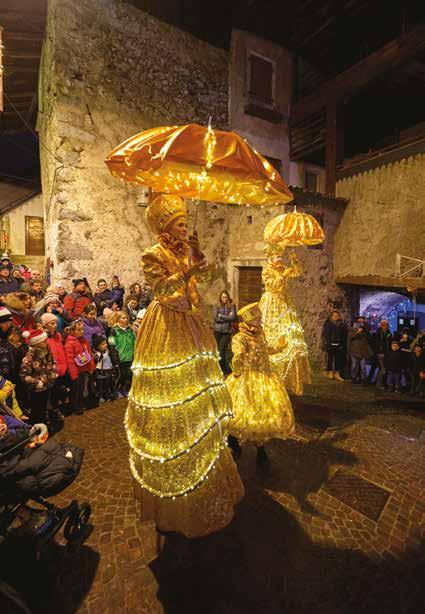
Da scoprire partecipando agli appuntamenti settimanali di Dolomiti Natural Wellness Winter Edition, un programma di attività immersive nell’ambiente invernale del Parco Naturale Adamello Brenta Geopark condotto da un tutor del benessere e da una guida alpina.
is a great source of inspiration for anyone looking to improve their wellbeing by getting back to nature It can be physical wellbeing, found through practising one of the many winter outdoor sports (like walking, hiking, cross-country skiing or ski mountaineering), or it can be inner wellbeing, which is evoked by an experience in
nature that can regenerate your body, mind and soul. Beneath the snow, nature thrives. The gentle sounds of the forest, the soft trickle of streams, the subtle aromas of pine leaves, the softness of mosses and lichens, the unusual shapes of snow-capped trees and the purity of the snow-covered clearings, all have a soothing effect on the mind. Time seems to slow down and you feel connected to the Earth’s rhythm. You can experience this for yourself by taking part in the weekly sessions of the Dolomiti Natural Wellness Winter Edition This is a programme of activities in the winter environment of the Adamello Brenta Geopark, led by a wellness tutor and an alpine guide.
Tra dicembre e gennaio i mercatini portano un’atmosfera di festa nelle storiche piazze. From December to January the markets bring a festive glow to historic squares.
IL PITTORESCO , indirizzato a chi si mette sulle tracce del non ancora visto sulla porta di casa Nell’ambito turistico da Campo Carlo Magno al lago d’Idro c’è molto da conoscere: paesi alpini dall’architettura caratteristica, antichi castelli, piccoli musei, collezioni permanenti, tesori nascosti dell’arte, della storia e della cultura. In inverno, lungo la Valle del Chiese, si presentano, all’occhio curioso del turista Bondone, il paese dei
“Carbonai” e uno de “I Borghi più belli d’Italia”, poi Baitoni, entrambi sulle sponde del lago, quindi Cimego. Tra dicembre e gennaio in occasione dei mercatini che accendono dell’intima luce del Natale storiche piazze, silenziosi vicoli, antichi avvolti. Qui il tempo si è fermato e lo spazio restituisce un’atmosfera raccolta dove apprezzare i prodotti tipici e l’artigianato locale.
is aimed at those who are interested in exploring the unseen right on their doorstep . There’s plenty to see and do in the tourist area between Campo Carlo Magno and Lake Idro. There are some lovely alpine villages with traditional architecture, ancient castles, small museums with permanent collections, and some hidden treasures of art, history and culture. In winter, Valle del Chiese is a great place to explore. You will find Bondone, the village of charcoal burners and one of The Most Beautiful Villages in Italy as well as Baitoni, both on the shores of the lake, and Cimego. All of these are well worth a visit. From December to January, the markets bring a festive glow to historic squares, quiet alleys and ancient, winding streets. Here, time seems to stand still, and the space is filled with a cozy atmosphere where you can appreciate the region’s typical products and local handicrafts.
di/by SARA DEFRANCESCO
ELISEO FRANCHINI, SI RACCONTA TRA PASSIONI, ARTE E ARTIGIANALITÀ. UN RITUALE TRA ESTETICA ED ESPERIENZA CHE SI “IMPRIME” ED ESPRIME NELLA BELLEZZA DI UN TRATTO INDELEBILE E PERFETTO.
Dove nascono la tua arte e la tua passione per il tattoo?
Ho la passione del disegno fin da piccolo, ho fatto l’Istituto d’arte a Trento e lavorato come illustratore in un’agenzia di pubblicità. La passione per il tatuaggio è nata un pò per curiosità, iniziando ad illustrare immagini per alcune riviste di tatuaggi. Era la fine degli anni ’90, inizi del 2000. All’inizio l’ho presa un po’ come una sperimentazione, una materia nuova su cui lavorare, la pelle. Ai tempi, in effetti, non ero un appassionato di tatuaggi, è stata la pura curiosità di provare questo nuovo tipo di “tessuto”.
Face to face with Eliseo
Eliseo Franchini, talks about his journey combining passions, art and craftsmanship. It’s a ritual that blends aesthetics and experience, ‘imprinted’ and expressed in the beauty of an indelible and perfect line.
Where does your art and passion for tattooing come from?
I’ve been passionate about drawing since I was a child. I went to art school in Trento and worked as an illustrator for an advertising agency. My interest in tattoos was kind of born out of curiosity. I started illustrating images for some tattoo
magazines and that’s when got really into it. This was back in the late 1990s or early 2000s. At first I took it as a bit of an experiment, a new material to work with, the skin. At the time, I wasn’t really into tattoos. was just curious to try this new type of “material”.
Eliseo Franchini, creatore ed ideatore di HIRSCH, marchio che rappresenta più un concept che uno store. Eliseo Franchini, the creator of HIRSCH, a brand that is more a concept than a store.
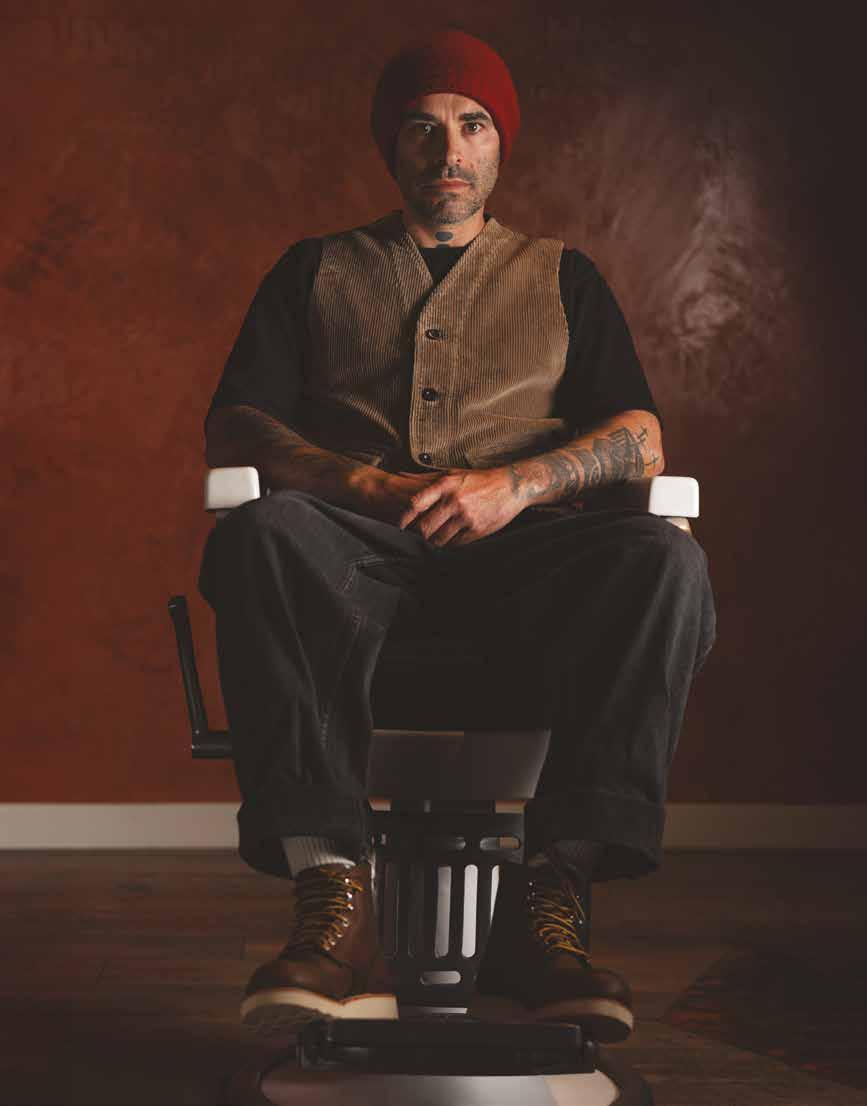
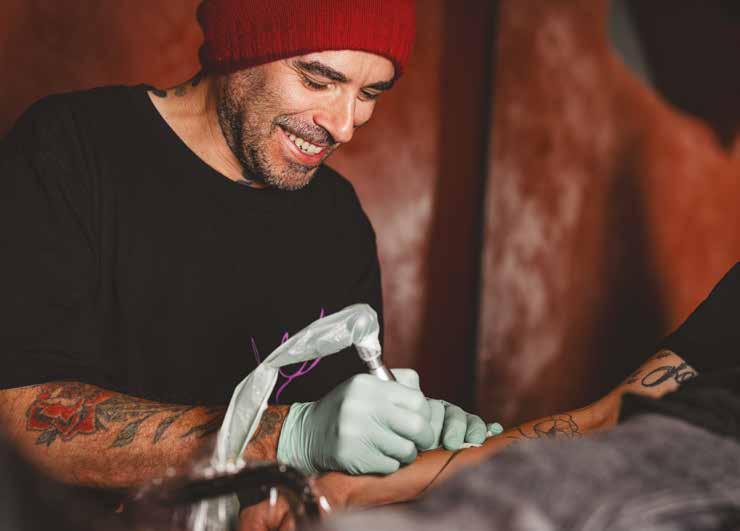
Cos’è per te l’arte e cosa significa essere un tatuatore?
Se penso al tatuaggio, ho una visione, più che di arte, di artigiano. Il tatuatore per me è una forma di artigianato, vai ad imprimere su pelle quello che il cliente cerca di spiegarti e di trasmetterti. L’arte per me è nel disegno libero, nei quadri che realizzo, dove mi lascio trasportare. Mi piace confrontarmi con la persona, ascoltare la sua storia, capire dove nasce l’idea e perché.
È qualcosa di emozionale, una sorta di collaborazione.
Da dove prendi l’ispirazione per la tua arte?
Dal legame che ho con le montagne. Questo aspetto lo ritrovo poi anche nel mondo del tatuaggio.
C’è una crescente tendenza a farsi tatuare elementi della natura, perchè forse non c’è nient’altro di così bello e perfetto. Cosa ne pensi?
Oggigiorno abbiamo tantissimi impulsi. Penso a quante immagini scorrono su tablet e cellulari, immagini molto simili tra loro, che formano poi una tendenza, un trend che è creato dal marketing. Penso che questo stile che si ispira alla natura nasca più da un’influenza generalizzata.
Ti sei mai rifiutato di fare un tatuaggio?
Sì, il rifiuto è stato però a livello tecnico. Mi sono rifiutato di disegnare un’immagine che non sarebbe venuta bene. Non mi capita di dire di no a soggetti richiesti, ma piuttosto alle dimensioni.
Quanti profili delle Dolomiti di Brenta hai tatuato?
Più o meno 50.
Un tempo tatuaggi facevano paura ed erano indicatori di uno stile di vita underground e contestatore, erano un tabù o rappresentavano una sfida
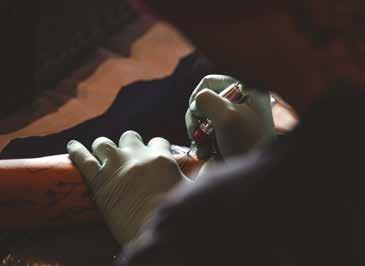

generazionale. Tu sei cresciuto un pò a cavallo di questa era, come l’hai interpretata?
Un fenomeno sociologico secondo te?
A dire il vero io mi sento un pò anacronistico e ad oggi non mi ritrovo fino in fondo in questo mondo del tattoo. Continuo a portare avanti il mio modo di pensare, però faccio fatica. Questo essere così sdoganato ha reso il tatuaggio molto commerciale. Sono un pò nostalgico. I primi anni della mia carriera ho fatto esperienze in vari studi dove chi entrava era l’eclettico, quello ai bordi della società, che però andava alla ricerca dell’esperienza e non dell’estetica. Era un approccio diverso. Oggi è meno umano.
Ai tempi era una sorta di conservazione di una professione boarderline. Oggi questo atteggiamento non c’è più, è sì un fenomeno sociologico che ha un pò snaturato l’origine del tatuaggio.
What does art mean to you and what does it mean to be a tattoo artist?
When I think about tattooing, I see it as more of a craft than art. Tattooing for me is a form of craftsmanship. You go and imprint on the skin what the client is trying to explain and convey to you. Art for me is in the free drawing, in the pictures I make, where let myself be carried away. I like to engage with the person, listen to their story, understand where the idea comes from and why. It is something emotional, a kind of collaboration.
Where do you find the inspiration for your art?
From the connection I have with the mountains. I also find this aspect in the world of tattooing.
There is a growing tendency to have elements of nature tattooed, because perhaps there is nothing else as beautiful and perfect. What do you think about this?
Today we have so many impulses. I think about how many images are scrolling through tablets and mobile phones, images that are very similar to each other, which then form a trend, a trend that is created by marketing. I think this nature-inspired style is more of a general influence.
Have you ever refused to draw a tattoo?
Yes, the refusal was on a technical level. I refused to draw an image that would not come out well. I don’t refuse because of the subject, but because of the dimensions.
How many profiles of the Brenta Dolomites have you tattooed?
More or less 50.
There was a time when tattoos were scary and indicative of an underground, protesting lifestyle, they were taboo or represented a generational challenge. You grew up in the middle of that era, how did you interpret it?
Quando tatua, Eliseo crea una collaborazione con il cliente e la sua idea.
When he tattoos, Eliseo creates a close collaboration with the client and his or her idea.
Is it a sociological phenomenon in your opinion?
To be honest, I feel a bit out of place and to this day I don’t really fit into this tattoo world. I’m still exploring my own way of thinking, but it’s challenging. The fact that tattoos are now so widely accepted has made them a very commercial phenomenon.
I have to say, I’m a bit nostalgic. In the early years of my career, I had experience in different studios where the people who came in were the eclectic, the fringe, who were looking for experience, not aesthetics. It was a different approach. Today it is less human. Back then, tattooing was a kind of preservation of a borderline profession. These days, this attitude is no longer there. It’s become a sociological phenomenon that has somewhat distorted the origin of tattooing.

Un disegno per la vita. Raccontacelo… Oggi per me è più un quadro che un tatuaggio. Il quadro è per sempre, viaggia e viene conservato nel tempo, rimane anche dopo la morte. Il tatuaggio se ne va con la persona: a volte il tattoo viene coperto perché ricorda un momento della vita che non si vuole più ricordare, e poi muore con la persona. Di tutto ciò che ho creato - in 18 anni ho disegnato più di 10.000 tatuaggi - non resterà nulla. Sopravvive al tempo più un disegno su tela, una pubblicazione. Non è un caso che io sia pieno di libroni con tutti i disegni e bozzetti dei tatuaggi.
A drawing for a lifetime. Tell us about it...
These days, it’s more like a painting than a tattoo for me. A painting is a permanent thing. It travels with you and is preserved in time. It remains even after death. A tattoo is something you take with you forever. Sometimes, though, it can be covered up because it reminds you of a moment in your life you’d rather forget. Then it dies with you.
Of everything I have created - in 18 years I have drawn more than 10,000 tattoosnothing will remain. The most that survives is a drawing on canvas, a publication. It is no coincidence that I am full of big books with all the drawings and sketches of the tattoos.
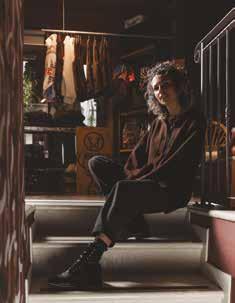
Com’è nato HIRSCH?
Era una passione un po’ nascosta, che poi ho trovato in comune con mia sorella Eva: l’idea di un marchio che rappresentasse la visione che avevo in testa.
Prima c’era solo il tatuaggio, poi con Eva abbiamo iniziato ad allargare il progetto e a stampare i tatuaggi sulle magliette. A volte le mie creazioni sono appositamente pensate per la nostra linea di abbigliamento per la quale disegno e creo in modo libero.
Hirsch vuol dire “cervo” [in tedesco]: il logo che ho creato però è un insieme di elementi, è nato d’impulso, c’è un legame con le rune, c’è un pò tutto il mio mondo.
Il cervo mi ha sempre affascinato: è un animale dei boschi maestoso, c’è, ma lo vedi di rado, è elegante e silenzioso.

How was HIRSCH born?
It was a somewhat hidden passion that I later shared with my sister Eva: the idea of a brand that represented the vision I had in my head.
At first it was just tattooing, then with Eva we started to expand the project and print tattoos on T-shirts. Sometimes my creations are specially designed for our clothing line, for which design and create freely.
Hirsch means ‘deer’ [in German]: the logo I created, however, is a combination of elements, it was born on impulse, there is a link with the runes, there is a bit of my whole world. The deer has always fascinated me: it’s a majestic forest animal, it’s there, but you rarely see it, it’s elegant and silent.
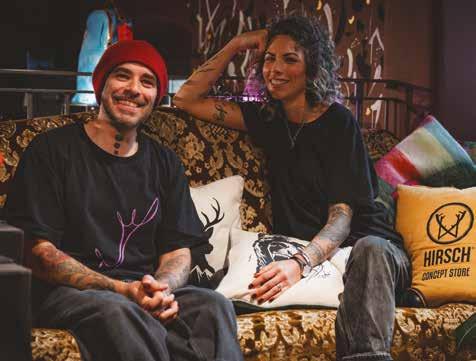
Eva ed Eliseo
Oltre 10.000 i tatuaggi disegnati fino ad oggi. Eliseo has drawn over 10,000 tattoos to date.
HIRSCH
CONCEPT STORE
Ideato da Eliseo ed Eva Franchini (classe 1981 lui e 1987 lei, di Zuclo), Hirsch Concept Store è uno spazio dove arte e artigianalità si mescolano, in una contaminazione di sguardi, forme, creazioni, tessuti e tratti che raccontano storie e passioni. Nel cuore di Pinzolo.
Conceived by Eliseo and Eva Franchini (he was born in 1981 and she in 1987, from Zuclo), Hirsch Concept Store is a space where art and craftsmanship mingle, in a contamination of looks, shapes, creations, fabrics and lines that tell stories and passions. In the heart of Pinzolo.
HIRSCH CONCEPT STORE
Piazza A. Collini, Pinzolo www.hirschconceptstore.com
di/by SARA DEFRANCESCO, EVA FRANCHINI
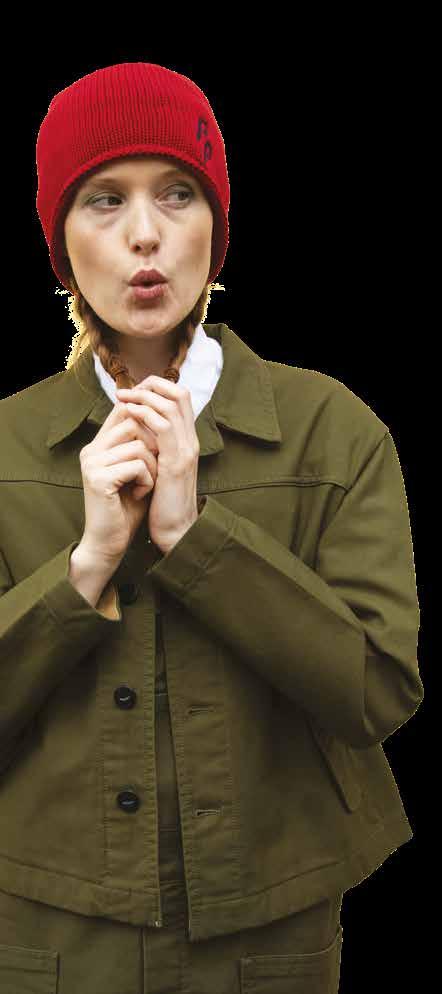
C’è chi dice che hai stile o gusto. Alcuni che vesti alla moda. Altri ancora che segui trend e sei sempre elegante o fashionista. Ma cosa vuol dire in fondo “sapersi vestire”?
C’è una sorta di cambiamento nel mondo del fashion. Il fast fashion è cosa di trend generazionale, giovane e non consapevole, da educare e formare.
Ora, forse, è più questione di cultura, del saper fare e del sapersi vestire: non serve più avere l’outfit come espressione del trend del momento, ma si va alla ricerca del capo che dura, quello bello sì, ma perché fatto bene. C’è un ritorno al toccare con mano, alla sartorialità (unicità), alla ricerca del tessuto, del materiale di qualità e della cura nella lavorazione. La doppia cucitura, la fodera interna in seta sono le differenze che rendono un capo unico e “per la vita”. Si torna nell’armadio delle nonne, dove abiti e accessori non sono “etichettati”.
C’è un ritorno al fatto a mano e al Made in Italy e questo ritorno non è solo una tendenza, è un cambiamento. Il cliente che frequenta botteghe e boutique
D’altronde “la moda ha a che fare con le idee, il modo in cui viviamo, e ciò che accade.”
After all, “Fashion has to do with ideas, the way we live, what is happening.”
[cit. quoting Coco Chanel].
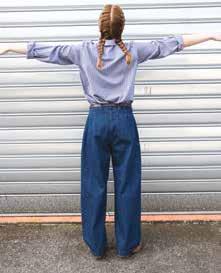

A sinistra e sotto on the left and below: 2025 FW outfit Peppino Peppino.
A destra on the right: Giacca Manifatture
Ceccarelli 100% cotone paraffinato idrorepellente e traspirante, interni in lana, imbottiture in pura lana vergine.
100% paraffincoated cotton, water-repellent and breathable jacket. Wool interior, padding in pure virgin wool.
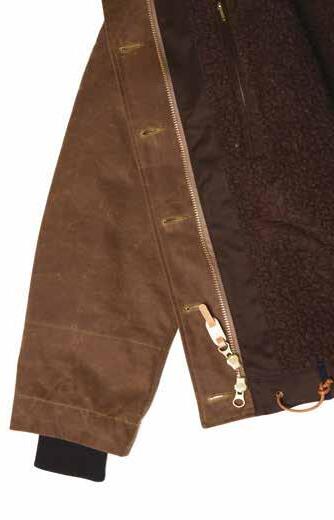
va alla ricerca di un’identità, del suo stile e del suo io traslato in un taglio sartoriale che ha una storia da raccontare, in un tessuto o in una lavorazione del passato (il panno casentino, il pizzo, il broccato veneto, la maglia), o del futuro, dove il riciclo e il riuso danno vita ad un capo che, però, non ha copie.
Le regole del buongusto e di uno charme senza tempo le fa il cliente, che ha il proprio stile e acquista con consapevolezza. Il gusto non è tendenza, ma parla di qualcosa che dura nel tempo e rappresenta valori della persona, le sue aspirazioni e, magari, perché no, il mondo di domani.
È una cultura che si contamina, che viaggia e crea rete, collaborazioni, una sorta di salotto e laboratorio di idee dove l’artigiano, il marchio di nicchia, la piccola bottega, sarti e artisti si interpretano, flirtano, e si distinguono.
It is no longer just about fashion, styles and trends. It is about building bridges between great comebacks and conscious innovation.
Some people say you have style or taste. Others say you dress fashionably. Some even say you follow trends and are always stylish or a fashionista. But what does it really mean to ‘know how to dress’? There is a kind of change in the fashion world. Fast fashion is a thing of the moment, a young and somewhat unconscious trend. It is something that needs to be educated and trained. Nowadays, it is more about culture and knowing how to make and how to dress. It’s no longer about wearing the latest trend, but about finding a garment that lasts, a beautiful one, yes, but one that’s well made. There is a move back towards touching, tailoring (uniqueness), searching for
the right fabric and quality materials, and taking care in the workmanship. Things like double stitching and silk linings are what make this garment stand out and make it a unique item that will last a lifetime. We are going back to grandmothers’ wardrobes, where clothes and accessories aren’t “labelled”. There is a shift back towards handmade and Made in Italy, and this is not just a trend. It is a change. The customers who go to shops and boutiques are looking for something that reflects their own style and identity. They want a piece that has a story behind it, made from a fabric or using a technique from the past (like Casentino cloth, lace, Venetian brocade or knitwear) or from the future,
where recycling and reuse give life to a unique garment that has no copies. The rules of good taste and timeless charm are up to the customers, who have their own style and make conscious purchasing decisions. Taste is not a trend; it is about things that last and represent a person’s values, aspirations and maybe even the world of tomorrow.
It’s a culture that spreads that travels and builds networks, partnerships and a kind of salon and laboratory of ideas where artisans, niche brands, small workshops, tailors and artists interact, connect and stand out.
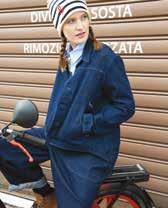
FONTE SOURCE: TRECCANI
MODA FASHION
Si dice di ciò che risponde pienamente al gusto attuale, che incontra il consenso generale.
Said of which fully responds to current taste and is widely accepted.
Genericamente, modo abituale di comportarsi, di agire, di parlare; costume, consuetudine. Signorilità di modi, discrezione e correttezza nel comportarsi, sobrietà.
In a general sense, habitual way of behaving, acting and speaking; custom or habit. Signorility of manners, discretion and propriety in one’s conduct, sobriety.
Per estensione il termine è adoperato in etica e in estetica per designare la sensibilità del buono e del bello.
In an extension of its meaning, the term is used in ethics and aesthetics to signify a sensitivity to the concepts of good and beautiful.
Tendenza, orientamento, indirizzo.
A prevailing orientation or direction in style.

“AH
CHE SENSAZIONE TI DÀ TENERE IN MANO UN DIAMANTE!
È COME STRINGERE UN PEZZO DI LUNA”.
Adichiararlo è l’iconica attrice italiana Anna Magnani mentre descrive l’emozione eterea, quasi onirica, che prova indossando il più ricercato tra i gioielli. Esiste una dichiarazione d’amore per le lussuose gemme bella quanto questa? Se le pietre e i metalli preziosi esprimono indiscutibile fascino, eleganza e lusso, è anche vero che nei più sensibili evocano una qualità sottile, una bellezza speciale riconducibile alla cifra del sogno e di ciò che sta “oltre”. Tradizionalmente il diamante è il simbolo della perfezione, l’oro della luce, il rubino della felicità, l’argento della purezza, lo zaffiro della speranza.
Da cinquant’anni, a Madonna di Campiglio, l’interpretazione più elegante del mondo del gioiello si chiama “Stedile gioielleria”, risultato di un progetto di vita e di una visione imprenditoriale firmati da Giuliano e Palmira Stedile. La boutique dà lustro al crocevia tra viale Dolomiti di Brenta e piazza Sissi, nel cuore della località amata, a fine Ottocento, da una delle regine più famose di tutti tempi, l’imperatrice d’Austria Elisabetta di Baviera. Giuliano, con ascendenza austriaca da parte di madre e arrivato a Campiglio da Vipiteno, ricordava, nell’aspetto e nei modi, un nobile asburgo del passato.
“There’s nothing quite like holding a diamond! It’s like holding a piece of the moon”.
This was said by the famous Italian actress Anna Magnani, who described the magical, almost dreamlike feeling she had when wearing the most sought-after jewels. Is there a more romantic way to show your love for these gorgeous gems? Precious stones and metals are undeniably charming, elegant, and luxurious. But they also have a subtle quality and a special beauty that can be traced back to the figure of the dream and what lies ‘beyond’. Traditionally, diamonds symbolise perfection, gold represents light, rubies bring happiness, silver stands for purity and sapphires for hope.
La vita, si dice, è un diamante grezzo, per splendere va lavorata e perfezionata. L’avventura campigliana di Palmira e Giuliano lo conferma.
Life, they say, is a diamond in the rough that needs to be worked and perfected in order to shine. Palmira and Giuliano’s adventure in Campiglio confirms this.
Palmira, originaria di Rovereto e legata a una dimensione cittadina, per amore ha imparato a vivere in alta quota. Giuliano manca da tempo, ma la sua eredità di pensiero e di lavoro continua a ispirare l’impresa che ha fondato, ora guidata con determinazione da Palmira. Nel 2024, con passione e dedizione, la gioielleria ha raggiunto il traguardo del mezzo secolo di attività.
Incontriamo la “Signora dei gioielli” in un insolitamente caldo pomeriggio di fine estate. Varcata la soglia della gioielleria è immediata la conferma di essere in un luogo di stile assoluto: il luccichio dei preziosi, che sembra una pioggia di stelle, introduce ad uno spazio interno di prestigio ed esclusività dedicato agli orologi Rolex. Stedile, ad un certo punto della sua storia, riconosciuto nel settore per l’alta qualità delle proposte, è diventato uno degli esclusivi shop Rolex & Tudor presenti nel mondo. Lussuosi pezzi che appartengono a grandi marchi - Vhernier e Pasquale Bruni per fare due nomi - si esaltano accanto ad aziende storiche e ai grandi brand dell’arte orafa italiana: Annamaria Cammilli, Raiteri, Dada Arrigoni, Buccellati…
Dietro ogni gioiello c’è una storia, dentro Stedile gioielleria un crogiolo di incontri, legami, ricordi, conoscenza e innovazione. Palmira, insieme a Chiara, in azienda dal 1991 e oggi braccio destro della proprietaria nella conduzione e gestione della boutique, ci guidano alla scoperta di un’azienda in continuo cambiamento e alla costante ricerca del bello. Un po’ come Madonna di Campiglio che “non dorme mai” e si reinventa senza sosta.

For fifty years, the most elegant interpretation of the world of jewellery in Madonna di Campiglio has been called ‘Stedile Gioielleria’. It’s the result of Giuliano and Palmira Stedile’s life project and entrepreneurial vision. The boutique is located at the crossroads of Viale Dolomiti di Brenta and Piazza Sissi, right in the heart of the resort that was a favourite of Empress Elisabeth of Bavaria of Austria - one of the most famous queens of all time - back in the late 19th century.
Giuliano, who had Austrian roots on his mother’s side and came to Campiglio from Vipiteno, looked and acted like a Habsburg nobleman from the past. Palmira, originally from Rovereto and used to living in cities, learned to live at high altitude out of love. Giuliano is long gone, but his ideas and work live on in the company he set up, which is now being resolutely led by Palmira. By 2024, the jewellery store had reached its 50-year milestone, thanks to the passion and dedication of its staff. We meet the “Lady of Jewellery” on a surprisingly warm late summer afternoon.
As soon as we cross the threshold of the jewellery store, we know we’re in a
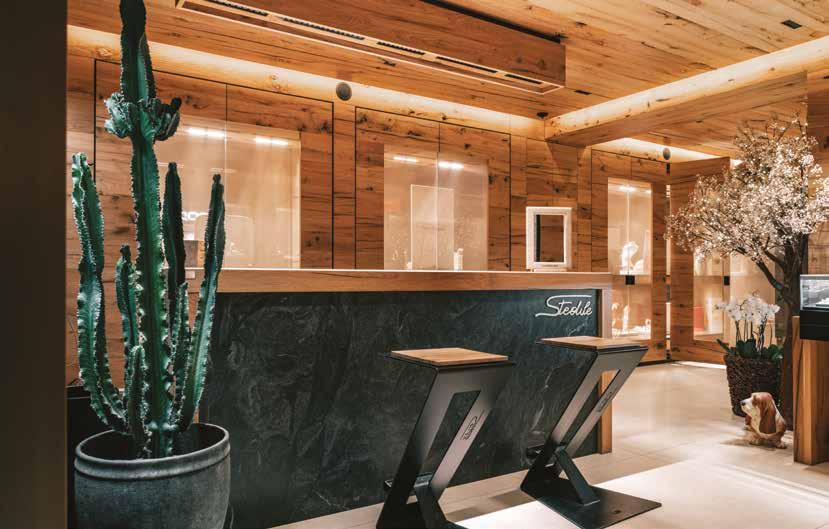
place of absolute style. The sparkling jewellery, which looks like a shower of stars, introduces us to an interior space of prestige and exclusivity dedicated to Rolex watches. At some point of its history, Stedile got noticed for the high quality of its offerings and became one of the top Rolex & Tudor shops in the world. Luxurious pieces by major brandsVhernier and Pasquale Bruni, to name but two - are displayed alongside historic companies and the great names of Italian goldsmithing: Annamaria Cammilli, Raiteri, Dada Arrigoni, Buccellati... There’s a story behind every piece of jewellery, and at Stedile Gioielleria, we’ve got a great mix of people, connections, memories, know-how and fresh ideas. Palmira, together with Chiara, who has been with the company since 1991 and is now the owner’s right hand in the management and running of the boutique, takes us on a discovery of a company that is constantly changing and searching for beauty. It’s a bit like Madonna di Campiglio, which is always on the go and reinventing itself all the time.
P: “Il nostro arrivo a Madonna di Campiglio coincide con la costruzione del Centro Rainalter (nel 1972 lo storico albergo Rainalter fu demolito per lasciare il posto all’attuale centro residenziale e commerciale). Ricordo Giuliano mentre camminava lungo le impalcature del grande edificio osservando il cantiere insieme ad Ippolito Papa, l’allora maresciallo dei carabinieri. Il primo negozio lo abbiamo aperto proprio lì. L’ufficio delle Poste alimentava un continuo via vai e non c’era persona che non passasse da quel nuovo luogo di attrazione. Sono stati gli anni della gavetta. Abbiamo iniziato vendendo catene d’oro e Giuliano si accontentava di dormire nel retrobottega. In quel primo negozio abbiamo compiuto più grandi sacrifici. Lui si era prefissato una meta e con impegno e determinazione l’ha raggiunta. Era innamorato del lavoro”.
Anni ‘90, i cambiamenti.
C: “La gioielleria ha attraversato grandi cambiamenti. Giuliano lo ricordo estroso. Per presentare al meglio un gioiello e trattarlo con la massima cura lo appoggiava su un fazzoletto bianco. C’erano sempre nuove idee. Alcuni manager raccontano ancora oggi un Natale insieme in boutique o il “Gran Ballo” in occasione del Carnevale Asburgico”.
In viale Dolomiti.
P: “C’è stato un tempo durante il quale si andava dai Ruppert per farsi barba e capelli (il padre di Fritz Ruppert già dal 1923 lavorava in Villa Maria, al tempo dependance dell’hotel Des Alpes, come barbiere chiamato dal proprietario Oesterreicher), in una tra le più vecchie case del paese che abbiamo acquistato da Fritz, demolito e ricostruito. Questo è stato il preludio all’arrivo in viale Dolomiti di Brenta”.
Gli eventi e le iniziative.
C: “Alcuni anni sono stati un fermento di iniziative alle quali abbiamo collaborato con entusiasmo: congressi, le presentazioni di autori importanti, gli spettacoli di Claudio Bisio al Salone Hofer, le varie edizioni di Wrooom con la nostra vetrina vestita di bianco e rosso come tutto il paese. Una volta abbiamo ospitato la corona di Miss Italia e c’è stata una fase durante la quale il negozio aveva tre piani, con un singolare ascensore rotondo che nessuno aveva mai visto prima”.
I turisti cambiano.
P: “I primi anni furono quelli dei tedeschi, in estate, con un gusto tutto loro, poi russi di prima battuta che passeggiavano per Campiglio con lunghi visoni e il colbacco, e veneziani che stavano al Rainalter, simpaticissimi, diventati ricchissimi con le bancarelle per turisti”.
La qualità e il cliente, prima di tutto.
C: “Ad un certo punto siamo arrivati ad avere tutti marchi di orologi, le quindici aziende più costose e desiderate erano esposte nelle nostre vetrine. La scoperta più recente è stata invece Vhernier che ha portato l’arte nel mondo del gioiello creando una linea in alluminio di grande raffinatezza accostata a collezioni più tradizionali. Questa unione di tradizione, architettura e innovazione rimanda all’evoluzione del nostro negozio. Un aspetto, tra tutti, che ci distingue, è la relazione con il cliente al quale riserviamo una grande attenzione”.
I gioielli sono senza tempo?
P: “In parte vero, quando esprimono un legame che si tramanda. Ognuno ha il suo gioiello, io, ad esempio, trovo di grande bellezza la spilla. Di recente ho capito che non avrei più venduto un numero importante di preziosi che custodivo da tempo. Ho così deciso di smontare le pietre e incastonarle in nuove forme e di fondere metalli preziosi dandogli nuova vita. È nata la linea Stedile, di valore inestimabile. Alcuni pezzi hanno suscitato l’interesse del mercato asiatico”.
Un lavoro, una vita.
P: “Dal punto di vista lavorativo stare al fianco di Giuliano non è stato solo imparare un lavoro, ma imparare a vivere. Se il lavoro diventa la tua vita, le relazioni che la tua attività ti porta a stringere hanno un valore aggiunto”.
1970s, where it all began.
P: “We got to Madonna di Campiglio just as they were building the Rainalter Centre (the old Rainalter hotel was knocked down in 1972 to make way for the current residential and commercial centre). I remember Giuliano walking along the scaffolding of the large building, taking a look at the construction site with Ippolito Papa, who was the marshal of the Carabinieri at the time. That’s where we opened the first shop. The Post Office was a hive of activity, with people coming and going all the time. It was a popular spot, and everyone who passed by stopped to check it out. That was a time when we were really starting from the ground up. We started out selling gold chains, and Giuliano was content to sleep in the back room. We made some big sacrifices in that first shop. He set himself a goal and got it done with commitment and determination. He was really passionate about his work.”
The 1990s, a time of significant change.
C: “Jewellery went through some big changes. I remember Giuliano had a very creative flair. To show off a piece of jewellery and treat it with the utmost care, he used to place it on a white handkerchief. There were always new ideas being brought in. Some managers still chat about the Christmas party they used to have in the boutique or the ‘Grand Ball’ at the Hapsburg Carnival.”
Viale Dolomiti.
P: “There was a time when people used to go to the Rupperts’ to get their beards and hair done (Fritz Ruppert’s father had already been working since 1923 in Villa Maria, which was then an annex of the Des Alpes Hotel, as a barber called in by the owner Oesterreicher). The house we bought from Fritz was one of the oldest in the village and we demolished it and rebuilt it. This was the prelude to arriving at Viale Dolomiti di Brenta.

ENTRARE IN GIOIELLERIA DIVENTA ESPERIENZA
Nella suggestiva cornice di Madonna di Campiglio, la gioielleria Stedile è molto più di un luogo di lusso: è un palcoscenico di iniziative uniche create in collaborazione con i brand più prestigiosi. Lo scorso inverno sono state
proposte ai clienti esclusive esperienze in collaborazione con Pasquale Bruni, marchio di gioielli di lusso che realizza vere e proprie opere d’arte a mano nell’atelier piemontese di Valenza; Annamaria Cammilli che crea pezzi unici e originali con oro e colori a Firenze; infine con Vhernier che, sempre a Valenza, è specializzato in gioielli totalmente nuovi e contemporanei.
C: “Some years have been a ferment of initiatives in which we have enthusiastically collaborated: congresses, presentations of important authors, Claudio Bisio’s shows at Salone Hofer, the various editions of Wrooom with our showcase dressed in white and red like the whole town. Once we even hosted the Miss Italia crown. There was a phase when the shop had three floors, with a unique round lift in the middle of the wood and a sliding shop window that no one had ever seen.”
P: “The first tourists were the Germans, who came in the summer and brought their own style. Then there were the Russians, who used to stroll around Campiglio in their long minks and colbacs. And then there were the Venetians, who used to stay at Rainalter. They were very nice and made a lot of money with their stalls for tourists.”
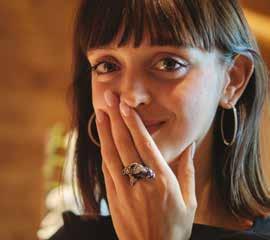
BECOMES AN EXPERIENCE
In the picturesque setting of Madonna di Campiglio, the Stedile jewellery store is much more than a place of luxury: it is the stage for unique initiatives created in collaboration with the most prestigious brands. Last winter, customers
were offered exclusive experiences in collaboration with Pasquale Bruni, a luxury jewellery brand that creates true works of art by hand in its Piedmontese workshop in Valenza; Annamaria Cammilli, who creates unique and original pieces with gold and colours in Florence; and Vhernier, that specialises in completely new and contemporary jewellery, also in Valenza.
Se la “perla” ai piedi delle Dolomiti di Brenta si distingue anche per la ricercatezza e la qualità dello shopping, lo deve a commercianti come Stedile che periodicamente investono, innovano, migliorano, cambiano.
If the “pearl” at the foot of the Brenta Dolomites also stands out for the sophistication and quality of its shopping, it is thanks to retailers like Stedile who regularly invest, innovate, improve and change.
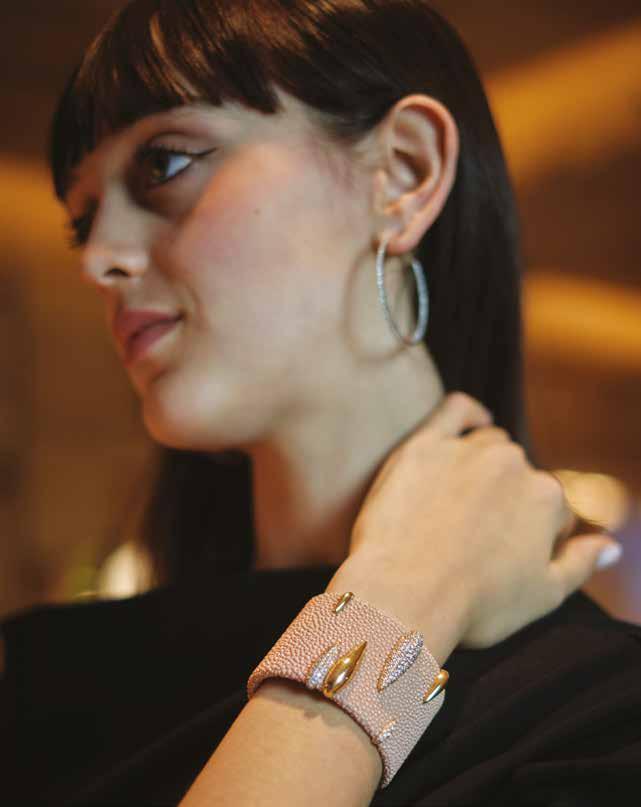
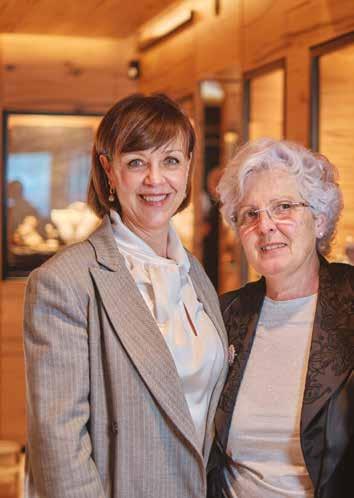

and customers come first.
C: “At one point, we had all the top watch brands, the fifteen most expensive and desirable companies, on display in our windows. The most recent discovery was Vhernier, who brought art into the world of jewellery by creating a highly refined aluminium line alongside more traditional collections. This combination of tradition, architecture and innovation shows how our shop has evolved. What really sets us apart is our relationship with our customers. We really care about them.”
P: “To some extent, yes, when they symbolise a connection that’s passed on. Everyone has their own piece of jewellery. I think the brooch is a really beautiful piece. I recently realised that I would no longer be selling a number of pieces of jewellery that I had kept for a long time. decided to take the stones apart and put them in new shapes, and melted down the precious metals and made them into something new. And so the Stedile line was born, with an invaluable heritage. Some of our pieces have caught the eye of the Asian market.”
A job, a whole life.
P: “From a professional point of view, working with Giuliano was not just learning a job, but learning how to live. When your work becomes your life, the relationships that your activity brings you have an added value”.
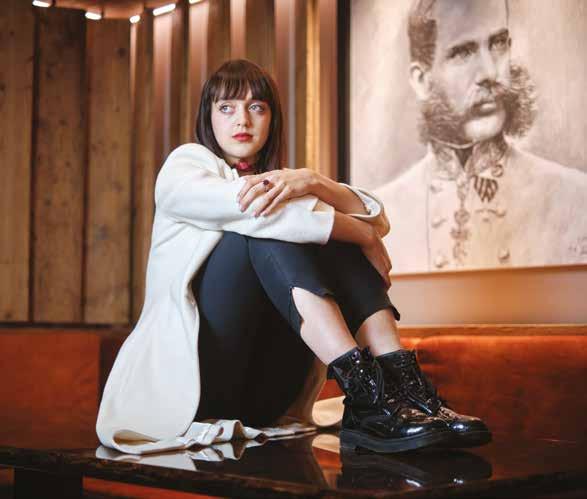
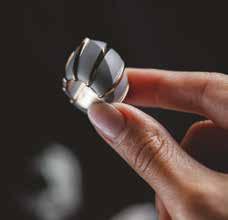
Vhernier si svelerà nuovamente ai clienti di Stedile e agli ospiti di Madonna di Campiglio in occasione di uno speciale evento previsto il 7 dicembre 2024. Vhernier è conosciuto per il suo stile unico e contemporaneo, che combina linee moderne e design innovativi con un’eleganza senza tempo. Il brand si distingue per l’uso di materiali

preziosi e insoliti, come il titanio, combinato con pietre colorate, madreperla, ebano e diamanti, creando gioielli dal carattere artistico e scultoreo. Tra i suoi valori “la bellezza della semplicità”, “l’audacia dell’innovazione”, “il saper fare”, “la bellezza sostenibile”. Con boutique esclusive nelle principali città del mondo, tra cui Milano, Parigi, e New York, Vhernier rappresenta l’eccellenza italiana nella gioielleria di design. Stedile è esclusivista per il Trentino Alto Adige.
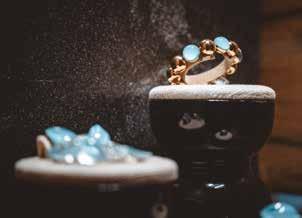
Vhernier will be reintroduced to Stedile clients and guests of Madonna di Campiglio at a special event planned for December 7, 2024. Vhernier is known for its unique and contemporary style, combining modern lines and innovative designs with timeless elegance. The brand stands out for its use of precious and unusual materials, such as titanium,
combined with coloured stones, mother-of-pearl, ebony and diamonds, to create jewellery with an artistic and sculptural character. Its values include “the beauty of simplicity”, “innovating with boldness”, “know-how” and “sustainable beauty”. With exclusive boutiques in major cities around the world, including Milan, Paris and New York, Vhernier represents Italian excellence in designer jewellery. Stedile is the exclusive retailer for Trentino Alto Adige.
di/by MARCO BENEDETTI
LE PROPOSE DI QUESTO
NUMERO: UN NUOVO
RITRATTO DI JOHN
BALL, UNA NUOVA
STORIA DI FONDAZIONE
DELL’ALPINISMO
E LA SCOPERTA DEL SINGOLARE
ARRAMPICATORE
SOLITARIO CLAUDE BARBIER.
IN THIS ISSUE: A NEW PORTRAIT OF JOHN BALL, A NEW HISTORY ON THE ORIGINS OF MOUNTAINEERING AND THE DISCOVERY OF THE UNIQUE SOLO CLIMBER CLAUDE BARBIER.
Nel periodo dell’alpinismo pionieristico, tra le personalità più attive, va sicuramente annoverato John Ball. Nelle Dolomiti di Brenta è stato il primo a compiere l’attraversata da Molveno a Pinzolo passando dalla Bocca di Brenta con la guida Bonifacio Nicolussi, nel luglio del 1864. È anche famoso per essere stato il primo salitore del Pelmo, nel 1857, impresa che ha inaugurato la Golden Age dell’alpinismo nelle Dolomiti. In realtà non fu il primo, perché si è appurato che i cacciatori locali erano saliti fino in cima prima di lui in almeno tre occasioni, ma sicuramente fu il primo a raccontare questa ascensione. Tuttavia il primo presidente dell’Alpine Club di Londra, pur essendo un grande alpinista, non fu mai un collezionista di cime. La sua ricerca era soprattutto volta alle vie di comunicazioni tra le vallate, all’esplorazione dei ghiacciai, alla botanica, privilegiando l’interesse ad andare, vedere, esplorare, conoscere e poi raccontare, regalando infine alla neonata comunità alpinistica una descrizione esaustiva dell’arco alpino e dei suoi percorsi, suddivisa in tre volumi (guida alle Alpi Occidentali, Centrali e Orientali). Fabrizio Torchio, in questo libro, per la prima volta ne racconta la vita con dovizia di particolari: il suo legame con l’Italia, la sua attività politica, la sua passione per la botanica e il suo amore per l’esplorazione.
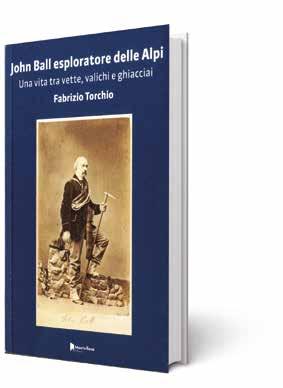
Andrea Zannini CONTROSTORIA DELL’ALPINISMO
Collana I Robinson
Letture Tracce
CAI - Laterza, 2024
P. 208
€ 18,00
During the era of pioneering mountaineering, one of the most prominent figures was undoubtedly John Ball. In the Brenta Dolomites, he was the first to traverse the route from Molveno to Pinzolo via Bocca di Brenta with guide Bonifacio Nicolussi, in July 1864. He is also famous for being the first to climb Mount Pelmo in 1857, marking the advent of the Golden Age of mountaineering in the Dolomites. He was not actually the first, as it has been established that local hunters had reached the summit at least three times before him, but he was certainly the first to document this event. However, the first president of the Alpine Club of London, although a great mountaineer, was never a collector of summits. His research was primarily focused on identifying optimal communication routes between the valleys, glacier exploration and botany. He fostered an interest in exploration, observation, knowledge acquisition and dissemination, finally providing the newly-born mountaineering community with an exhaustive description of the Alpine arc and its routes, divided into three volumes (Guide to the Western, Central and Eastern Alps). In this book, Fabrizio Torchio recounts for the first time the details of his life: his attachment to Italy, his political activities, his passion for botany and his love of exploring.
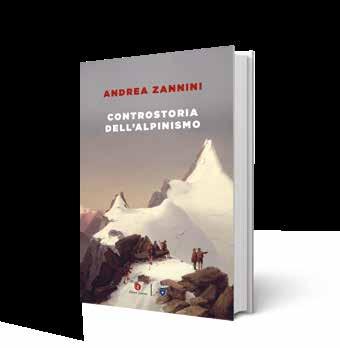
Davvero è cominciato tutto con la salita di Francesco Petrarca al Mont Ventoux nel lontano 1336? Oppure il merito è degli illuministi del Settecento? O, ancora, dei viaggiatori ed esploratori inglesi dell’Ottocento? E se invece fossero stati gli uomini e le donne che da sempre abitano le Alpi a diffondere la passione per le vette? Lo storico Andrea Zannini prova a rovesciare la tradizionale narrazione sulla nascita dell’alpinismo ponendo al centro veri protagonisti finora dimenticati: montanari. Ricostruendo decine di salite compiute tra Sei e Ottocento da cacciatori, raccoglitori di cristalli, artigiani, garzoni di monasteri, notabili di villaggi e religiosi, Zannini documenta come l’alpinismo trovi le sue radici nella cultura e nella società alpina e suoi ‘inventori’ nelle popolazioni che hanno abitato le Alpi. Riscritti dalle basi, gli eventi fondatori di questa storia assumono così una luce completamente diversa.
Have we been told the history of mountaineering correctly?
Did it all really begin with Francesco Petrarca’s ascent of Mont Ventoux in 1336?
Or does the credit go to the Enlightenment of the 18th century? Or again, could it be the English travellers and explorers of the 19th century? What if it was actually the people who have always lived in the Alps who got people excited about climbing mountains?
Historian Andrea Zannini is challenging the traditional view of how mountaineering began by focusing on the real, previously overlooked heroes: the mountaineers. By looking at lots of different ascents made between the 17th and 19th centuries by hunters, crystal collectors, artisans, monastery boys, village leaders and religious people, Zannini shows how mountaineering has its roots in Alpine culture and society and how it was “invented” by the people who lived in the Alps. When you look at this history in a new way, the founding events take on a completely different light.
Tra gli anni ’60 e ’70 il belga Claude Barbier è stato uno dei più grandi arrampicatori solitari che le Dolomiti abbiano conosciuto. Nel suo modo di scalare, solo e veloce, ha condensato vent’anni di profondi cambiamenti nello stile e nella storia dell’arrampicata moderna. Scontroso ma non arrogante, caratterizzato da una veemenza incompresa e da una gentilezza inespressa, Barbier possedeva un’etica ferma, ma talmente garbata da evitare ogni scontro pubblico. Durante le sue estati in Dolomiti ha inanellato imprese visionarie: il primo concatenamento in velocità nella storia dell’arrampicata sulle cinque pareti nord delle Tre Cime di Lavaredo, l’apertura dell’indomita Via del drago in Lagazuoi, la Via degli strapiombi alla Cima d’Ambièz. Il libro di Monica Malfatti rende finalmente giustizia alla sua impressionante attività scongiurando il rischio, oltre che l’errore, di relegare questa figura così decisiva all’oblio
Between the 1960s and 1970s, the Belgian Claude Barbier was one of the best solo climbers the Dolomites have ever seen. His approach to climbing – solo and fast – reflected twenty years of significant changes in the style and history of modern climbing. Grumpy but not arrogant, Barbier had a misunderstood vehemence and an unspoken kindness. He had a firm but polite ethic that avoided public confrontation. During his summers spent in the Dolomites, he achieved some incredible feats: the first speed chaining in climbing history on the five north faces of the Three Peaks of Lavaredo, the opening of the formidable Via del Drago on Mount Lagazuoi, and of Via degli Strapiombi on Cima d’Ambièz. Monica Malfatti’s book is the first to give due credit to his impressive work and avoids this important figure being forgotten.
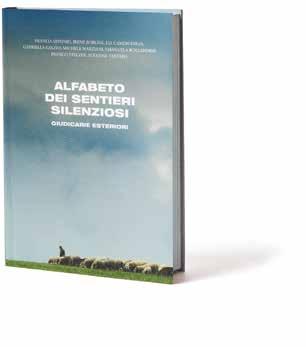
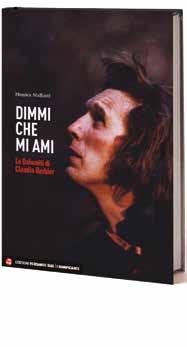
DAGLI STUDI DI SCENOGRAFIA ALLA PITTURA, DANIELA CASONI È INTERPRETE DI UN’ARTE CHE, TRA LE LUCI, LE OMBRE E I COLORI DELL’ESISTENZA, COGLIE IL SENSO DELLA TENEREZZA E L’ATTENZIONE PER GLI ALTRI.

Daniela Casoni nasce a Milano e muove primi passi verso l’arte frequentando il liceo artistico e, successivamente, appassionandosi agli studi della famosa Accademia di Brera, in particolar modo dedicandosi alla scuola di scenografia. Ogni grande passione nasce o viene alimentata da qualcuno che ce la trasmette, da un mentore, per Daniela il professor Varisco che contamina e impreziosisce la sua arte insegnandole la regola fondamentale che chi lavora nel mondo dell’arte conosce bene: guardare il mondo da un’altra prospettiva, scoprendo l’infinito e diversamente interpretabile universo di luci, ombre e colori.
In un’interessante chiacchierata con Daniela, le ho posto alcune domande sulle mie curiosità - sperando siano anche le vostre - che riguardano la sua più grande passione: la pittura.
CREATING ART IS “CARING FOR OTHERS”
From scenography studies to painting, Daniela Casoni is the interpreter of a kind of art that, amidst the lights, shadows and colours of existence, is able to grasp the sense of tenderness and care for others.
Casoni was born in Milan and took her first steps towards art by attending the art school and later became passionate about studying at the famous Brera Academy, devoting herself in particular to the school of scenography.
Quali sono le ragioni che ti hanno spinta a fare arte?
Mi sono sempre trovata a mio agio tra colori. Il benessere che provo e la concentrazione che ottengo mentre dipingo sono sensazioni irrinunciabili che mi hanno accompagnata nel mio percorso artistico, fin dalla giovane età. Per me dipingere è rispondere ad un bisogno primario e vitale come il mangiare o il dormire ed è anche uno strumento che utilizzo per approfondire la conoscenza degli altri e soprattutto di me stessa. Ogni quadro, ogni tela esprimono una parte di me a volte sconosciuta.
Qual è il soggetto che preferisci dipingere, se c’è?
Tutto quello che mi suscita tenerezza diventa il mio soggetto preferito, ogni cosa che ha un lato nascosto, inosservato e pieno di affettuosità e dolcezza.
Quali sentimenti provi quando dipingi?
Dipingere, oltre a darmi piacere e a collegarmi in modo intimo alle persone, è un modo per prendermi cura degli altri catturando i loro gusti e le loro emozioni e anche per ascoltare me stessa.
Quale corrente artistica ti attrae di più e perché?
Le correnti artistiche sono tutte un riflesso del loro tempo, per questo ognuna ha particolarità proprie e specificità affascinanti, per questo mi attraggono tutte. Allo stesso modo non c’è uno stile che preferisco rispetto agli altri, mi incuriosisce sperimentarne diversi cercando sempre di personalizzarlo e di aggiungere qualcosa di mio.

Come descriveresti la tua tecnica?
Equilibrata, meticolosa, morbida. Seguendo il flusso del momento e delle esigenze presenti, negli anni mi sono sbizzarrita con diverse tecniche, ognuna delle quali mi ha insegnato e lasciato qualcosa.
Poi, in tempi recenti, ho affinato una tecnica che mi permette di dipingere le tele riconoscendo gli oggetti attraverso le loro ombre, le luci, i cambi di colore e le sfumature. I miei occhi “macchiati” mi hanno richiesto uno sforzo in più, mettendomi di fronte alla sfida di modificare il mio modo di operare, ma anche questa volta ho scoperto qualcosa di inaspettato e nuovo di me stessa e di ciò che l’arte e la creatività possono offrire.
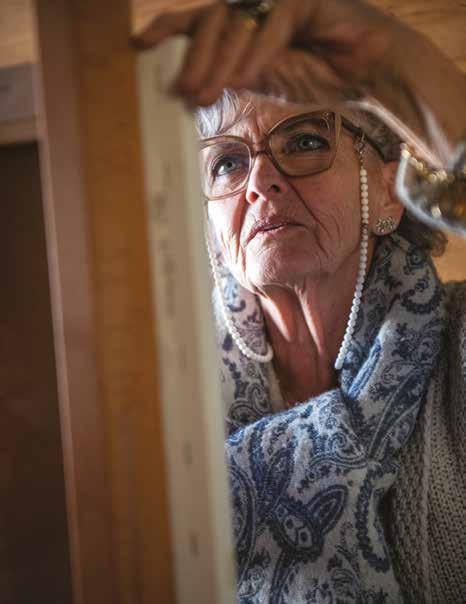
Cosa stimola la tua creatività e qual è la tua maggior fonte di ispirazione?
Gli altri, loro desideri, la loro emotività. Il dipinto è l’incontro del mio sguardo con il mondo, i suoi dettagli, compresi quelli invisibili e preziosi che a volte riesco a cogliere.
Un artista del passato che apprezzi particolarmente e perché?
Caravaggio, perché dipinge “ciò che vede”, le parti luminose di ogni soggetto, ma anche suoi difetti, senza timore. Mi piace “l’arte del vero”.
Una tua riflessione su Campiglio di ieri, di oggi e su come te la immagini in futuro… Campiglio è una vera perla, dalle origini semplici e per certi versi umili. Certo, il
tempo e il turismo hanno portato novità, cambiamenti e miglioramenti, ma non sempre… A volte sembra un po’ dimenticarsi della sua anima originaria. naturale e tipica.
Quanta importanza, dovrebbero avere la cultura e l’arte nella promozione turistica del nostro territorio?
L’arte e la cultura sono sempre state sinonimo di libertà d’espressione, di ascolto e di accoglienza di tutto ciò con cui si viene a contatto: dalle persone alle esperienze. Anche l’arte, dunque, come le altre attività turistiche, consiste in uno dei possibili modi attraverso il quale accogliere chi ci sceglie, in estate o in inverno, per trascorrere il proprio momento di riposo e di stacco dalle attività frenetiche quotidiane.
A

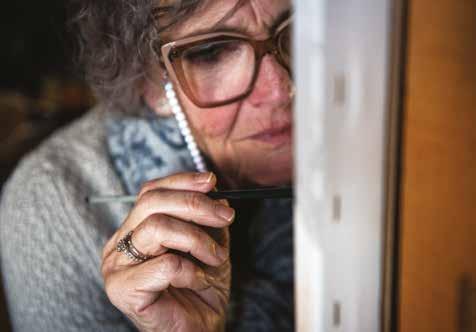
“A sera quando quest’orologio si spegne e tutto riposa, possiamo chiederci se le nostre ombre sono servite a qualcosa o a qualcuno. Per questo il dipinto che ho immaginato ad incorniciare la meridiana vuole essere una lode a Dio per tutto ciò che ha messo a nostra disposizione. Una lode per averci dato il tempo e la vita per crescere.”
“As the day winds down and everything slows down, we can ask ourselves if our shadows have been useful to anyone or anything. That’s why I imagined a painting to frame the sundial. It’s a tribute to God for all he’s given us. Praise to him for giving us the time and life to grow.”
Daniela Casoni

Every great passion is born or nourished by someone who transmits it to us, a mentor. For Daniela, that mentor is Professor Varisco, who both contaminates and enriches her art, teaching her the fundamental rule that those who work in the art world know so well: to look at the world from a different perspective, to discover the infinite and differently interpretable universe of light, shadows and colours.
In an interesting conversation with Daniela, I asked her a few questions to satisfy my curiosity - and I hope yours as well - about her greatest passion: painting.
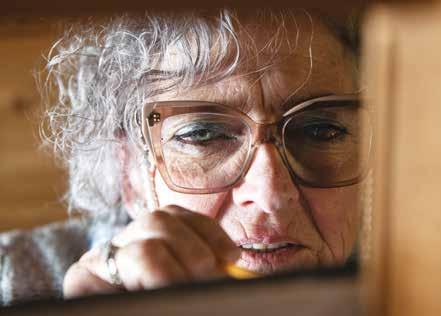
What inspired you to pursue a career in art?
I’ve always been comfortable with colours. The sense of well-being and concentration I get from painting are two sensations that have accompanied me on my artistic journey since was young. For me, painting is as essential as eating or sleeping. It’s also a way for me to gain deeper insights into others and, most importantly, myself. Each painting, each canvas expresses a part of me that I’m not even fully aware of.
What’s your favourite subject for painting, if you have one?
Anything that makes me feel tender becomes my favourite subject, anything that has a hidden, unnoticed side full of affection and sweetness.
How would you describe your technique? I’d say balanced, meticulous, gentle. Over the years, following the flow of the moment and the needs of the present, I’ve tried different techniques, and each one has taught me something and left me with something. More recently, I’ve been developing a technique that allows me to paint canvases by recognising objects through their shadows, light, colour changes and shading. My ‘stained’ eyes required extra effort, challenging me to change the way I work, but again I discovered something unexpected and new about myself and what art and creativity can offer.
What gets your creative juices flowing and what do you find most inspiring? For me, it’s other people, their desires and their emotions. Painting is where connect with the world around me, its details, including the invisible and precious things that I sometimes manage to capture.
Which artist from the past do you particularly admire and why?
I admire Caravaggio because he captures what he sees on canvas. He captures the highlights of each subject, but also shows its flaws, without holding back. like art that captures reality.
What are your feelings when you’re painting?
Painting is not only a source of great enjoyment for me, but it also allows me to connect with people on a deeper level. It’s also a way of looking out for others by getting to know their tastes and emotions, and listening to myself.
Which art movement do you find most appealing and why?
Art movements reflect the times in which they emerge, and each one has its own distinctive features and fascinating characteristics, which is why I find them all so appealing. Similarly, I don’t have a preference when it comes to style. I’m always up for trying out different styles and putting my own spin on them.
We’d love to hear your thoughts on Campiglio, from the past to today and even how you see it in the future... Campiglio is a hidden gem with a simple and humble history. Needless to say, the passage of time and the advent of tourism have brought about a number of changes and improvements, but not always... Sometimes it seems to have lost its original, natural, typical character.
What do you think about the importance of using culture and art to promote tourism in our region?
Art and culture have always been about freedom of expression, listening and welcoming everything you come into contact with, whether it’s people or experiences. Art, therefore, like other tourist activities, is just one of the possible ways in which we can welcome those who choose us, in summer or in winter, to spend their time relaxing and taking a break from the hustle and bustle of everyday life.
Il Suv compatto Q4 e-tron full electric è dotato di appositi sensori che rilevano lo stato di salute dell’ambiente.
di/by MATTEO BONAPACE
MOUNTAIN PROGRESS LAB RACCOGLIE IMPORTANTI DATI SULLA QUALITÀ DELL’AMBIENTE E GLI SPOSTAMENTI IN AUTOMOBILE. OBIETTIVO? FARE BENE ALL’AMBIENTE E ATTUARE LA MOBILITÀ DEL FUTURO.
Immaginare e realizzare una mobilità del tutto nuova per il territorio di Madonna di Campiglio, che sia a basso impatto ambientale, ordinata, pulita e in grado di migliorare la vivibilità della località a beneficio delle persone, sia ospiti che residenti, e dell’ambiente, è un obiettivo prioritario da anni. Tra cambiamenti temporanei e progressi definitivi che si sono avvicendati nel tempo, un nuovo progetto ha debuttato di recente, grazie alla proficua collaborazione che lega Campiglio e Audi dal 2013. Stiamo parlando di MPL-Mountain Progress Lab presentato a Madonna di Campiglio nel mese di gennaio 2024, durante la seconda edizione di “Campioni in pista” e l’ufficializzazione dei team Ducati (premium brand di Audi AG) per la nuova stagione dei motori. L’iniziativa, nel segno di un rinnovato impegno supportato dalla ricerca, dalla conoscenza e
dall’innovazione, incoraggia l’idea di una località all’avanguardia nella mobilità e sempre più “e-destination”. Un luogo, in altre parole, che diventi da un lato modello virtuoso nella gestione degli spostamenti veicolari e, dall’altro, esempio di destinazione guidata da un approccio digitale e innovativo per migliorare l’offerta turistica, gestire i flussi e rendere la vacanza un’esperienza più interattiva, personalizzata e accessibile.
L’iniziativa, supportata da Audi, è condotta in collaborazione con Azienda per il Turismo, gli Enti Territoriali (Comune di Pinzolo, Comune di Tre Ville, Comune di Bocenago, Comunità delle Regole Spinale e Manez, Parco Naturale Adamello Brenta) e Trentino Marketing che assumono insieme ogni decisione relativa al progetto. In più ci sono il contributo scientifico dell’Università degli Studi di Trento e di H-Farm, uno
The Q4 e-tron all-electric compact SUV is equipped with special sensors that detect the health of the environment.
P. Bisti
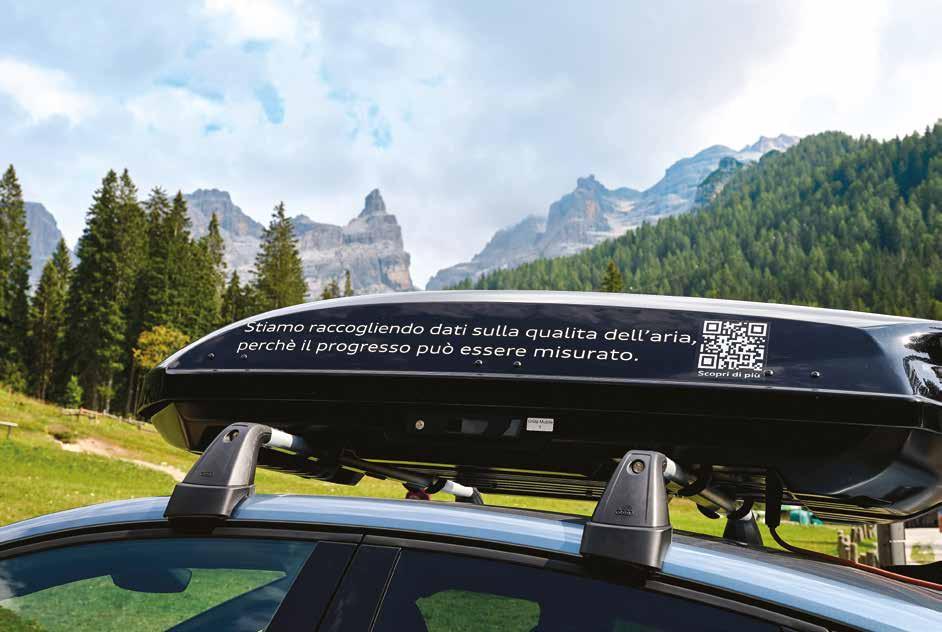
Mountain Progress Lab is collecting important data on environmental quality and car use. The goal? To do good for the environment and create the mobility of the future.
It has been a priority objective for many years to conceive and implement a completely new form of mobility for Madonna di Campiglio, one that is environmentally friendly, orderly, clean and capable of improving the quality of

Madonna di Campiglio si propone anche come luogo ideale per lavorare, incentivando gli smart worker e offrendo una vivibilità aumentata in tutta la località.
Campiglio is also an ideal place to work, encouraging smart workers and improving the quality of life throughout the resort.
Il computer a bordo di un’Audi “sentinella” dotata di intelligenza artificiale che chiede ai passeggeri informazioni sulle abitudini negli spostamenti, sui comportamenti e sulle opinioni relative alla mobilità sostenibile ed elettrica.
The computer on board an Audi ‘sentinel’, equipped with artificial intelligence, asks passengers about their travel habits, behaviour and opinions on sustainable and electric mobility.


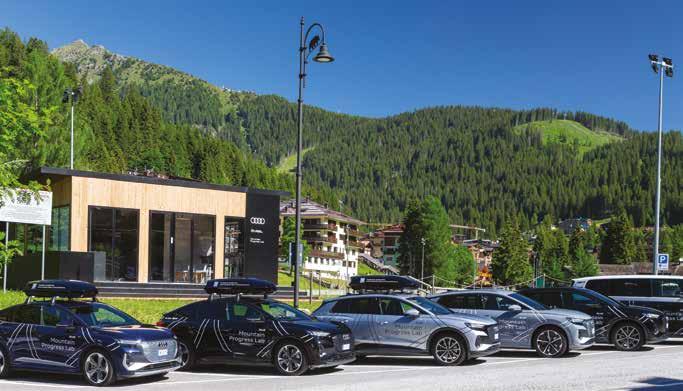
and PM10), in addition to vehicle flows. This data was added to the info collected by fixed sensors along the eco-routes. The monitoring, which began in the summer season, will continue in winter 2024/’25 along the accessible areas even in the cold season, while the data, once processed, will be made available to everyone at the end of autumn. Guests and residents were really involved and helped make the project a success by taking part in the interactive experience related to the electric car journey. On board the ‘Audi-sentinels’, passengers were invited to interact with the artificial intelligence, which not only provided general information about environmental points of interest but also asked questions about habits, lifestyles and perceptions of sustainability.
The e-mobility experience kicked off at the new Audi Smart Hub near Laghetto di Campiglio. Equipped with an Ewiva charging station, it’s the starting point for the experience. It’s also a multifunctional, elegant and comfortable space for smart working in the mountains.
dei principali hub europei di innovazione che, nel suo campus situato tra Treviso e Venezia, integra startup, imprenditoria, tecnologia e formazione.
Nel corso dell’estate 2024, Madonna di Campiglio si è così trasformata in un laboratorio a cielo aperto dotato di tecnologia diffusa per la raccolta di dati sulla qualità ambientale e i flussi delle automobili. Cardine della proposta una flotta BEV (Battery Electric Vehicles) di Audi Q4 e-tron equipaggiate con rilevatori mobili in grado di registrare dati lungo quattro Eco-routes scelte per questa funzione e individuate nelle direzioni Vallesinella, Malghette, Patascoss, piana di Nambino.
Il SUV compatto full electric dei quattro anelli è diventato una “sentinella del territorio” e, attraverso specifici sensori posizionati in un cruscotto sopra il tettuccio, ha rilevato indicatori cruciali dello stato di salute dell’ambiente. Tra questi: l’evoluzione della temperatura, l’andamento barometrico, l’umidità dell’aria, la presenza di biossido di azoto, la concentrazione di polveri sottili (PM2.5 e PM10). Questi dati hanno integrato altre informazioni raccolte da sensori
fissi posizionati lungo le Eco-routes. Il monitoraggio, iniziato nella stagione estiva, proseguirà nell’inverno 2024/’25 lungo le aree accessibili anche nella stagione fredda mentre dati, una volta elaborati, saranno condivisi con appositi canali.
Ospiti e residenti hanno avuto un ruolo attivo e contribuito alla riuscita del progetto partecipando all’esperienza interattiva contestuale al percorso in auto elettrica. A bordo delle “Audisentinella” passeggeri sono stati invitati ad interagire con l’intelligenza artificiale che, oltre a fornire informazioni generali sui punti d’interesse ambientale, poneva alcune domande su abitudini, stili di vita e percezione della sostenibilità.
L’esperienza di mobilità elettrica ha avuto come punto di partenza il nuovo Smart Hub targato Audi allestito nei pressi del Laghetto di Campiglio che, oltre ad essere una stazione di ricarica Ewiva e un punto di partenza per l’esperienza, è spazio polifunzionale, elegante e confortevole, per lo smart working in montagna.
Flussi veicolari e ambiente sono in antitesi? MPL vuole fornire dati su base
scientifica per indirizzare le scelte, migliorare la mobilità, implementare la vivibilità e assumere decisioni di tutela per il territorio che superino questo dualismo. Intanto, nel percorso di progetto, si studia e si fa crescere la consapevolezza ambientale nell’ampio pubblico di ospiti e residenti.
I dati rilevati saranno divulgati e saranno impiegati per prendere decisioni più consapevoli ed efficienti nella gestione dei flussi turistici e sviluppare, in seconda battuta, un turismo diffuso nel tempo e nello spazio, ovvero un turismo che valorizzi periodi più lunghi rispetto alle stagioni consuete e luoghi diversi dai percorsi abituali.
In sintesi per Azienda per il Turismo Madonna di Campiglio, MPL-Mountain Progress Lab rappresenta un passo importanto verso il miglioramento della vivibilità, tema prioritario nel Piano strategico pluriennale, per Audi, invece, l’approfondimento di un modello finalizzato a creare un ecosistema di mobilità sostenibile potenzialmente esportabile.
Il dado è tratto, ora è importante proseguire con convinzione e fiducia.
life in the resort for the benefit of the people, both guests and residents, as well as the environment. Thanks to the fruitful collaboration between Campiglio and Audi that began in 2013, a new project has recently made its debut amidst temporary changes and definitive progress that have taken place over time. We’re talking about MPL-Mountain Progress Lab, which was presented in Madonna di Campiglio in January 2024. This was during the second edition of ‘Campioni in pista’ (Champions on the track) and the official launch of the Ducati teams (a premium brand of Audi AG) for the new motorsport season. The initiative is a sign of a renewed commitment, supported by research, knowledge and innovation. It encourages the idea of a location at the forefront of mobility and increasingly an e-destination. In other words, it’s a place that serves as a great example of how to manage traffic, and it’s also a destination that is using digital and innovative approaches to improve the tourist experience, manage flows and make holidays more interactive, personalised and accessible.
The initiative, supported by Audi, is being carried out in collaboration with Azienda
per il Turismo, the local authorities and Trentino Marketing, that jointly take all decisions relating to the project. In addition, there is the scientific contribution of the University of Trento and H-Farm, one of the most important European innovation centres, which integrates start-ups, business, technology and training on its campus located between Treviso and Venice.
During the summer of 2024, Madonna di Campiglio was transformed into an openair laboratory with widespread technology for collecting data on environmental quality and car flows. At the heart of the proposal is a fleet of Audi Q4 e-tron BEVs (Battery Electric Vehicles) with mobile detectors that can record data along four eco-routes chosen for this purpose, namely Vallesinella, Malghette, Patascoss and Piana di Nambino. Audi’s full electric compact SUV became a kind of ‘sentinel of the territory’, detecting key indicators of the health of the environment through special sensors located in a dashboard above the roof. These include temperature trends, barometric pressure, air humidity, nitrogen dioxide levels, and the concentration of particulate matter (PM2.5
Is there a contradiction between vehicle flows and the environment? MPL is working to provide data based on science to help guide choices, improve mobility, implement liveability and make decisions that protect the area, overcoming this dualism. Meanwhile, the project is researching and raising environmental awareness among the wider community of guests and residents.
The data collected will be widely disseminated and used to make more conscious and efficient decisions in the management of tourist flows. Secondly, the data will be used to develop tourism that is spread out in time and space, i.e. tourism that emphasises longer periods than the usual seasons and places far from the usual routes.
To conclude, for Azienda per il Turismo Madonna di Campiglio, MPL-Mountain Progress Lab represents a significant step towards enhancing liveability, a core objective within the multi-year strategic plan; for Audi, conversely, the expansion of a model focused on developing a sustainable mobility ecosystem across the Alpine arc as a key goal for the coming years.
The die has been cast. Now it is a matter of continuing with conviction and confidence.

UNO SGUARDO, APPROFONDITO, AMOREVOLE E AFFASCINATO, SUL MONDO DELLE API E I PROGETTI IN CORSO IN VAL RENDENA PER PROTEGGERLE.
Era il 1962 quando la biologa e zoologa statunitense Rachel Carson scrisse il libro Silent Spring (Primavera silenziosa), pietra miliare dell’ambientalismo internazionale. Da allora, nonostante fiumi di parole e di buoni propositi abbiano inondato il mondo, quel silenzio, anziché riempirsi di magici trilli di usignolo e frinire di grilli, è diventato ancora più assordante e cupo.
Oggi, a qualche decennio di distanza, il progressivo e inarrestabile declino nella varietà e moltitudine di insetti, volatili e infinite creature d’ogni specie che un tempo popolavano prati e boschi ad ogni latitudine, e che la Carson aveva con grande intuito colto già allora, è evidente a tutti.
Forse, distratti e incantati dalle lusinghe e dalle meraviglie del progresso, abbiamo scelto di vivere nell’illusione che l’uomo potesse emanciparsi dalla natura, permettendo alla chimica di eliminare tutto ciò che era considerato d’intralcio o dannoso alla gloriosa e inarrestabile marcia trionfale della nostra specie.
Ora che le inevitabili conseguenze di tutto ciò cominciano a sfiorare le nostre belle tavole imbandite, all’improvviso, svanite le vane promesse, percepiamo il silenzio della natura non più con indifferente sufficienza, ma come incombente ed inquietante minaccia alla nostra sopravvivenza. Ed iniziamo a preoccuparci. Giustamente.
An in-depth, loving and fascinated glance at the world of bees and the projects carried out in Val Rendena to protect them.
Back in 1962, American biologist and zoologist Rachel Carson wrote the book Silent Spring, which was a real gamechanger in the world of international environmentalism. Since then, although rivers of words and good intentions have flooded the world, that silence, instead of being filled with the magical trills of nightingales and the chirping of crickets, has become more deafening and gloomy. Today, a few decades later, it’s clear to everyone that the diversity and abundance of insects, birds and other creatures that once populated the meadows and forests of every latitude is in decline. Carson was already aware of this even back then.
Perhaps, being distracted and enchanted by the flatteries and wonders of progress, we have chosen to live under the illusion that man can emancipate himself from nature. We thought that chemistry could be used to get rid of anything that stood in our way or was seen as harmful to the success of our species.
The inevitable consequences of all this are now touching our beautifully laid tables. The vain promises have vanished, and we see the silence of nature no longer with indifferent complacency, but as a looming and disturbing threat to our survival. We are right to worry.

Gli insetti impollinatori, in particolare le api, svolgono un ruolo fondamentale ed insostituibile non solo nel mantenimento della biodiversità floreale, ma anche e soprattutto nella produzione alimentare. Grazie alle api la terra produce circa l’80% del cibo che mantiene in vita 8 miliardi di persone. Ma cosa sta succedendo alle api? Perché il loro numero si sta riducendo a vista d’occhio e perché gli studiosi avvertono di una loro possibile, anzi probabile, rapida estinzione?
Le cause sono molte, ma tutte riconducibili ad un “peccato originale” dell’uomo: l’aver pesantemente interferito nei processi naturali che regolano gli ecosistemi con l’impiego massiccio e spesso indiscriminato di pesticidi, la riduzione del territorio non antropizzato, le interferenze sul clima, l’importazione, attraverso il commercio internazionale di api, di un terribile parassita asiatico chiamato Varroa Destructor, la presenza di campi elettromagnetici sempre più invasivi e chissà quante altre ragioni ancora sconosciute. E così le api non riescono più a vivere allo stato selvatico o perlomeno solo poche ci riescono, come dimostrato da uno studio condotto nella Schwarzwald (Foresta nera, Germania) e pubblicato su PubMed.
Ciò significa che il destino delle api è indissolubilmente legato a doppio filo con il destino degli apicoltori. L’estinzione delle api sarà quindi l’inevitabile conseguenza di un’eventuale estinzione degli apicoltori.

Il buon miele è un prezioso alimento.
E allora cosa possiamo fare per contribuire alla salvezza delle nostre api italiane? In primis salvare dall’estinzione gli apicoltori, sostenendoli nel loro paziente ed impegnativo lavoro quotidiano. L’Italia, pur essendo, purtroppo, fanalino di coda europeo nel consumo di miele, incredibilmente ne importa dall’estero decine di migliaia di tonnellate all’anno. Miele spesso sofisticato e di scarso valore nutrizionale che, con una sleale concorrenza, sta mettendo in ginocchio il comparto apistico italiano costringendo migliaia di aziende alla chiusura. Il buon miele, espressione del territorio sul quale viene prodotto, è un prezioso alimento e non un semplice edulcorante. Contiene minerali, proteine, vitamine, è batteriostatico e potenzia il sistema immunitario, il suo intrinseco valore non può essere sminuito.
Possiamo poi aiutare le api diventando apicoltori o adottando un’arnia, piantando e seminando nei nostri giardini piante e fiori melliferi e nettariferi. Possiamo dire no ai fitofarmaci, all’aumento dei limiti di tolleranza dell’inquinamento elettromagnetico. Possiamo anche solo imparare ad amare le api per quel che sono e per tutto ciò che fanno.
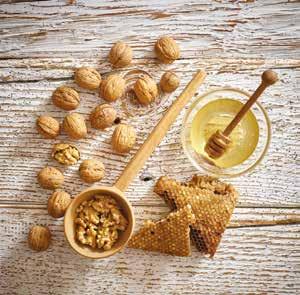
Pollinating insects, especially bees, play a fundamental and irreplaceable role not only in maintaining floral biodiversity, but also and above all in food production. In fact, bees help the Earth produce about 80% of the food that keeps 8 billion people alive. But what is happening to bees? Why are their numbers dwindling by the day and why are scientists warning of their possible, even probable, rapid extinction?
There are many reasons, but they all boil down to one thing: humanity’s “original sin”. We have massively interfered with
the natural processes that regulate ecosystems through the massive and often indiscriminate use of pesticides, the reduction of non-man-made land, the interference with the climate, the importation of a terrible Asian parasite called Varroa Destructor through the international bee trade, the presence of increasingly invasive electromagnetic fields, and who knows how many other as yet unknown reasons. As a result, bees can no longer survive in the wild, or very few can.
This means that the fate of bees and the fate of beekeepers are two sides of the same coin. If we lose the bees, we’ll lose the beekeepers too.
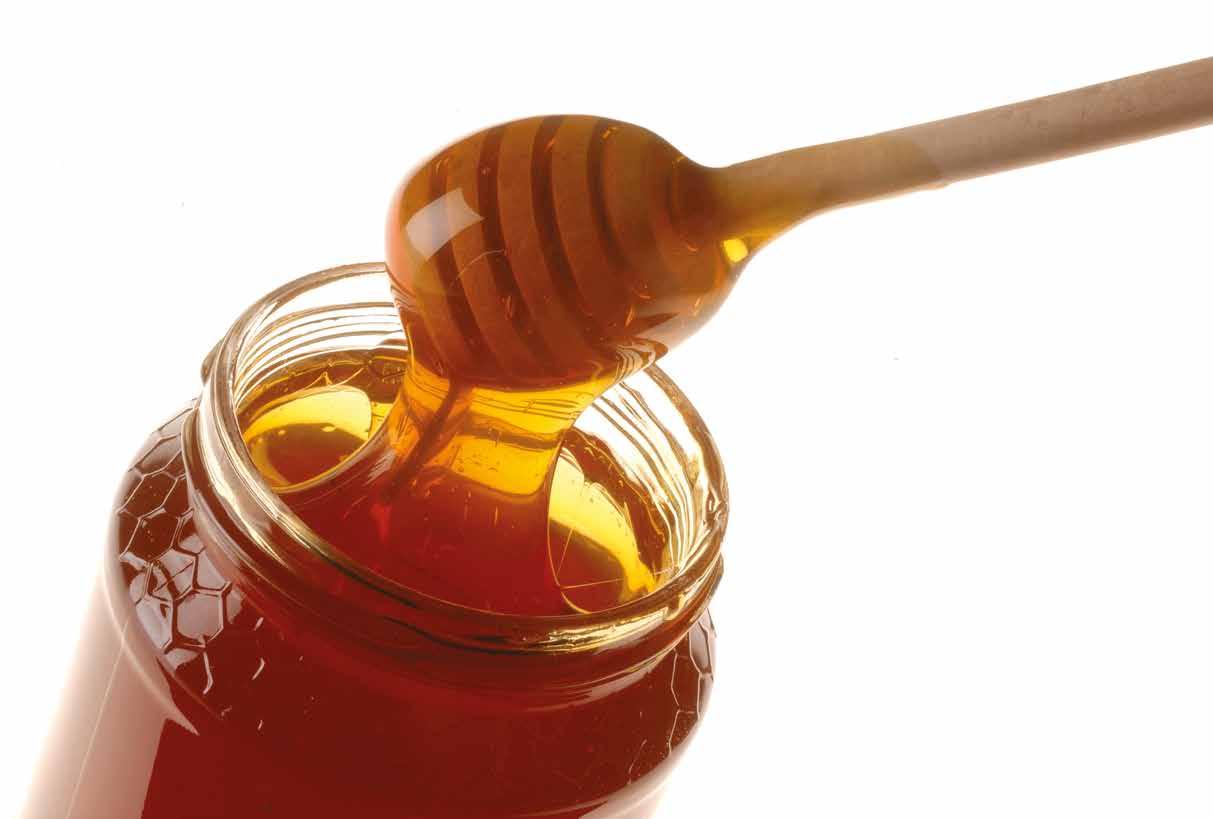
Good honey is a precious food.
What can we do to help save our Italian bees? First and foremost, we need to support beekeepers so they can continue their hard daily work. Italy is actually one of the lowest consumers of honey in Europe, but it still imports tens of thousands of tonnes of honey from abroad every year. The honey on sale is often refined and of little nutritional value and, through unfair competition, is bringing the Italian beekeeping sector under severe pressure, forcing thousands of companies to close. Good honey is a precious food and a true reflection of the land where it’s made. It’s not just a sweetener. It contains minerals, proteins, vitamins, is bacteriostatic and boosts the immune system; it has an intrinsic value that cannot be underestimated. We can then help bees by becoming beekeepers or adopting a hive, planting and sowing melliferous and nectariferous plants and flowers in our gardens. We can say no to pesticides and to increasing the tolerance limits of electromagnetic pollution. We can also just learn to love bees for what they are and for all that they do.
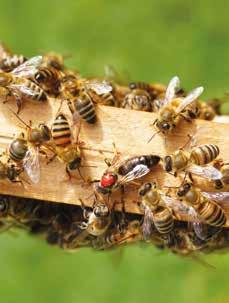
Il mondo degli insetti è minuscolo, laborioso, instancabile e va tutelato. The insect world is tiny, hardworking, tireless and must be protected.
La natura e la scienza ci insegnano che nulla, nel perfetto equilibrio del Creato, è casuale o superfluo, che ogni organismo partecipa attivamente al sistema conservandone al meglio l’integrità e contrastando la sua intrinseca tendenza entropica al disordine.
Chi meglio delle api - esempio paradigmatico di superorganismo nel quale la famiglia, retta da regole inflessibili, risulta perfettamente coesa, solida e solidale - può farci comprendere l’importanza di preservare e tutelare quell’infinito, minuscolo, laborioso e instancabile mondo degli insetti?
Ci insegnano gli antichi latini che “Una apis nulla apis” cioè che un’ape da sola equivale a nessuna ape. Che ne sarà delle api, seppure molte, su di una terra arida, sterile e priva di insetti?
Mentre a noi “rendeneri” contemporanei, ai quali con grande generosità è stato concesso di vivere in un territorio tanto bello quanto delicato e fragile, non resta che provare con coraggio ed entusiasmo a preservare e valorizzare ciò che ci è stato temporaneamente assegnato per tramandarlo, quanto più intatto possibile, alle nuove generazioni.
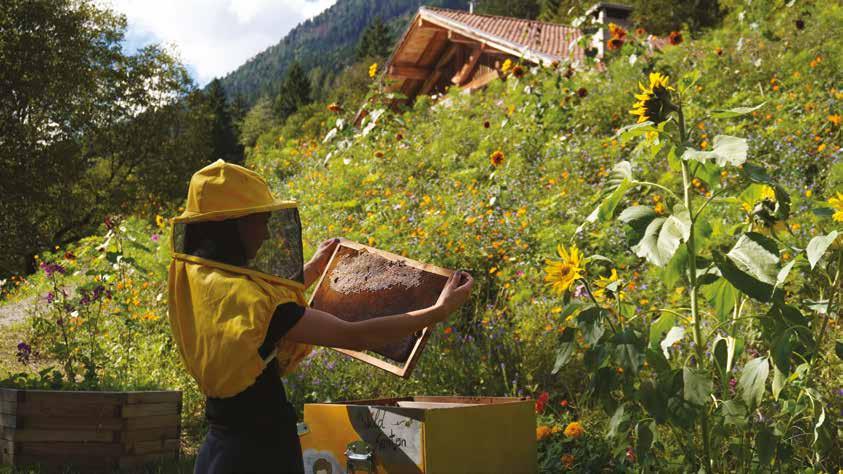
L’ASSOCIAZIONE APICOLTORI VAL RENDENA.
Nel 2021, è stata fondata l’Associazione apicoltori Val Rendena con sede a Strembo. Compresa la necessità di assistere e riunire gli apicoltori già attivi sul territorio e di promuovere ad ogni livello l’apicultura - quella cultura apistica che tanto può aiutarci a comprendere la meraviglia e la complessità del mondo - l’Associazione, nel giro di tre anni, ha superato gli 80 soci attivi e ha contribuito a far crescere, triplicandolo, il patrimonio apistico di valle. La Val Rendena si è dimostrata terreno fertile e generoso per la realizzazione di numerosi progetti e iniziative. Amministrazioni comunali ed enti operanti
sul territorio, insieme a una popolazione sensibile e ricettiva, sono stati l’indispensabile volano per concretizzare idee e trasformare sogni in realtà. Nasce così, ad esempio, nel cuore della Val Genova, la prima Stazione isolata di fecondazione api regine sul territorio provinciale. Essa consente agli apicoltori di fecondare le proprie regine vergini con maschi (fuchi) selezionati, in grado di trasmettere alla regina un patrimonio genetico che sappia rispondere alle peculiari richieste e caratteristiche del nostro ambiente montano. A breve, grazie ad un ambizioso progetto realizzato in collaborazione con l’Istituto tedesco superiore di apicoltura (Neuendorf Hohen Institute) presso l’Università di Berlino e con il patrocinio
di tutti i Bim (Bacini imbriferi montani) del Trentino, prenderà il via un’analisi pluriennale di valutazione genetica delle api regine trentine. L’Associazione sarà così in grado di fornire una certificazione, un pedigree, alle regine fecondate in volo nuziale tra le splendide montagne della Val Genova. Pilastro di riferimento sarà il Centro apistico territoriale che, in collaborazione con il Comune di Strembo, stiamo realizzando in un antico maso. In esso i soci potranno usufruire di una sala dedicata alla smielatura e di un’ampia sala riunioni. L’auspicio è che, in futuro, il Centro stesso possa esprimere appieno le sue potenzialità diventando nucleo di divulgazione scientifico-naturalistica per scuole, residenti e ospiti.
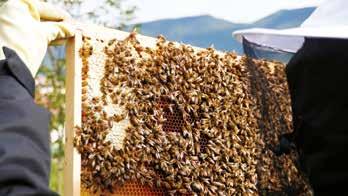
The natural world and the sciences show us that everything in the perfect balance of creation is there for a reason. Each organism plays its part in the system while trying to maintain its own integrity and counteract the natural tendency for things to fall apart. Who better than bees - a paradigmatic example of a superorganism in which the family, governed by inflexible rules, is perfectly cohesive, solid and united - can make us understand the importance of preserving and protecting this infinite, tiny, industrious and indefatigable world of insects? The ancient Latins teach us that ‘Una apis nulla apis’, that is, one bee alone is no bee at all. What will become of the bees, however many, on a barren, sterile land without insects?
The Val Rendena Beekeepers Association was set up in 2021, with its main office in Strembo. We realised that we needed to help and bring together the beekeepers already working in the area, and to promote beekeeping – that amazing cultural tradition that helps us understand the marvellous and complex world around us – at every level. In just three years, the Association has grown to over 80 active members and has contributed to tripling the valley’s beekeeping heritage.
Val Rendena has proved to be a fertile and generous ground for the realisation of numerous projects and
initiatives. Local authorities and other organisations that operate in the area, together with a sensitive and receptive population, have been the indispensable driving force for turning ideas and dreams into reality. So, right in the heart of Val Genova, for instance, the first isolated queen bee fertilisation station in the whole province was set up. This lets beekeepers fertilise their virgin queens with selected males (drones), who can pass on a genetic heritage that can cope with the particular demands and characteristics of our mountain environment. We are also working on an exciting new project with the German Institute for Bee Research (Neuendorf Hohen Institute) at the University of Berlin.
This will involve a multiyear genetic evaluation of Trentino queen bees. The Association will thus be able to provide a certification, a pedigree, for the queens that are fertilised in nuptial flight in the gorgeous mountains of Val Genova.
A reference point will be the Territorial Beekeeping Centre, which we are building in an old farmhouse in cooperation with the Strembo Municipality. Members will have access to a honey extraction room and a large meeting room. It is hoped that in the future the centre will be able to develop its full potential by becoming a centre for scientific and naturalistic dissemination for schools, residents and guests.
For us, the present inhabitants of Val Rendena, who have been generously allowed to live in an area as beautiful as it is delicate and fragile, all that remains is to try, with courage and enthusiasm, to preserve and improve what has been temporarily entrusted to us, in order to pass it on as intact as possible to future generations.
Inoltre, in prossimità del Centro, c’è l’obiettivo di realizzare un apiario integrato, cioè una struttura indipendente nella quale saranno integrate alcune arnie popolate da centinaia di migliaia di api. visitatori potranno così osservare all’opera, in completa sicurezza, questo splendido insetto e beneficiare dell’aromaterapia, respirando il soave profumo di miele, nettare, oli essenziali e resine che hanno un’azione balsamica, disinfettante e fluidificante.
Sul favo, le api, con il veloce battito delle loro quattro ali, producono un tipico ronzio alla frequenza di risonanza di 432 Hertz, vibrazioni, queste, conosciute come “suono della natura”. Il corpo umano entra continuamente in risonanza con tali vibrazioni naturali in grado di creare armonia ed equilibrio. Conosciuto in apiterapia con il termine di apisound, migliora la qualità del sonno, abbassa livelli di stress e può aiutare a potenziare la funzione cognitiva, aumentare l’energia e ridurre il dolore.


Ha preso il via nel mese di maggio 2024 un’altra importante ed innovativa
di Pinzolo e dell’Azienda per il Turismo Madonna di Campiglio e la collaborazione del Parco Naturale Adamello Brenta Geopark. Si tratta biomonitoraggio raccolto dalle nostre api sul territorio della Val Rendena, da Verdesina a Passo Campo Carlo Magno. Undici stazioni, composte posizionate a tre chilometri di distanza l’una dall’altra
dell’ape), consentiranno, nei mesi di maggio e luglio, la raccolta di 88 campioni di polline che, in collaborazione con la Libera Università di Bolzano e l’entomologo Sergio Angeli, saranno analizzati in relazione a quasi 600 composti chimici, fornendo un preciso ed ambientale del territorio. La realizzazione di questa impegnativa ed esclusiva
Another important and of our association was launched in May 2024
Pinzolo and Azienda per Campiglio, in collaboration with the Adamello Brenta Geopark. This is the first biomonitoring of pollen collected by our bees in from Verdesina to Passo Campo Carlo Magno. Eleven stations, each consisting of two hives placed at a distance of three kilometres apart (the average range of the bees), will allow 88 pollen samples to be taken in May and July. In collaboration with the Free University of Bozen/ Bolzano and entomologist Sergio Angeli, these will be analysed for nearly 600 chemical compounds to provide a precise and unbiased environmental report of the area.
possibile grazie all’impegno e alla determinazione dell’Assessore del Comune di Pinzolo Giuseppe Corradini che, da tempo, sostiene e realizza progetti in favore della biodiversità, oltre al sostegno dell’Azienda per il Turismo con il direttore Matteo Bonapace che ha creduto nella validità del progetto. L’ape, da millenni, è considerata speciale oltre che per la sua insostituibile opera d’impollinazione anche per il superorganismo che realizza all’interno dell’alveare nel quale ogni singola ape è parte integrante e necessaria per l’esistenza e la sopravvivenza della colonia stessa. L’ape diventa così la quintessenza del galantuomo e della gentildonna: un esempio unico di coraggio, generosità, laboriosità, altruismo, dedizione, rispetto delle regole e sincerità, per nominare solo alcune delle sue virtù. Le stesse, del resto, alle quali anche noi tutti siamo chiamati.
The realisation of this ambitious and exclusive initiative was made possible thanks to the commitment and determination of Giuseppe Corradini, Councillor for the Municipality of Pinzolo, who has long supported and implemented projects in favour of biodiversity. Bees have been regarded as special creatures for millennia, not just for their invaluable role in pollination, but also for the way they function as superorganisms within the hive, of which each individual bee is an integral part in the colony’s existence and survival. The bee is the perfect example of a gentleman or gentlewoman: it’s courageous, generous, hard-working, altruistic, dedicated, respectful of rules and sincere. These are just a few of the virtues of this creature. We can all strive to be more like it.
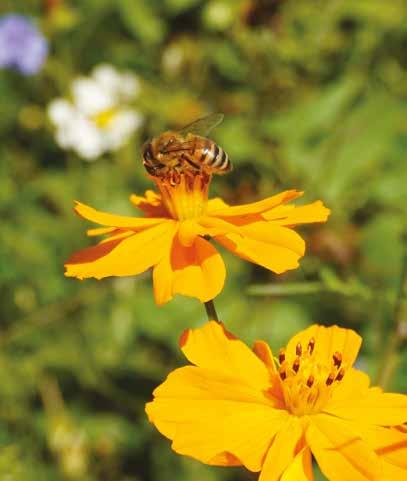
We are also building an integrated apiary near the Centre. This is a free-standing structure where we will have several hives with hundreds of thousands of bees. Visitors will be able to watch this gorgeous insect at work in complete safety and enjoy the benefits of aromatherapy, breathing in the sweet scent of honey, nectar, essential oils and resins that have a balsamic, disinfectant and fluidifying action. The buzzing sound produced by bees on the honeycomb is created by the rapid beating of their four wings at a resonance frequency of 432 Hertz. These vibrations are known as the ‘sound of nature’. The human body constantly resonates with these natural vibrations, creating harmony and balance. Known in apitherapy as beehumming, it improves sleep quality, reduces stress levels and can help improve cognitive function, increase energy and reduce pain.

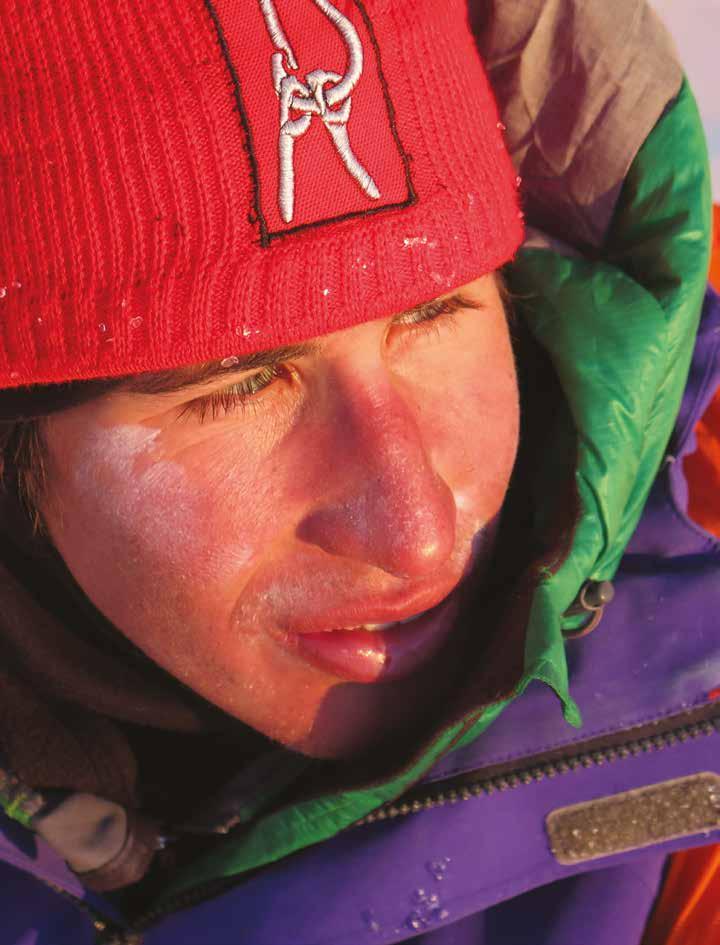
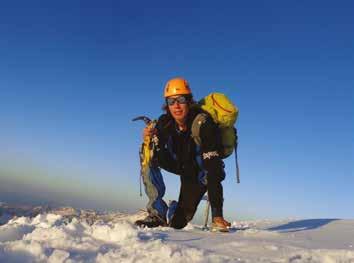
“Sei stato più di un grande alpinista. Tu eri la montagna, la roccia, la salita, la vetta. Ti cercheremo sui sentieri del tuo Brenta, in un raggio di sole che illumina il passo, in un soffio di vento che accarezza il volto, in un’emozione inattesa che scalda l’anima. Ciao Tomas”.
“You were more than a great climber. You were the mountain, the rock, the ascent, the top. We’ll keep an eye out for you on the Brenta trails, n a ray of sunshine on the pass, in a breath of wind on the face, and in an unexpected emotion that warms the soul. Goodbye for now, Tomas.”
Ogni storia ha un inizio. Quella di “CampiglIO” ha incontrato, nell’esordio del primo articolo del primo numero, la storia di Cesare Maestri, in quel momento voce della saggezza e dell’esperienza di un alpinismo d’altri tempi, insieme alla storia di Tomas Franchini e di Silvestro Franchini, voce dell’entusiasmo e della freschezza di un alpinismo giovane, con tante avventure ancora da vivere. L’intervista avvenne negli uffici di Apt a Madonna di Campiglio. Fu un bell’incontro, tra generazioni diverse e lontane, molto rispettose l’una dell’altra e con in comune una passione profonda per la montagna e per il Brenta, il primo e indimenticato amore. Da quel giorno sono passati quasi
dieci anni e la vita ha presentato le sue prove. Cesare ci ha lasciati nel 2021, a conclusione di una lunga esistenza.
Tomas se ne è andato anzitempo, all’inizio di giugno 2024, mentre saliva la sua ultima cima. La montagna era la vita di Tomas. All’inizio il Brenta, dove è nato alpinisticamente, poi le cime del mondo, dal Sud America con la Patagonia all’India fino alla Cina. Su una Terra scandagliata in lungo e in largo, dove tutto è conosciuto, fotografato, comunicato, era riuscito a trovare l’inesplorato nel già noto, aprendo nuove vie su pareti inviolate. A guidarlo, un originale spirito d’avventura, un legame con la natura istintivo e profondo e una passione per “ciò che sta
The mountains of home and around the world were his life.
Every story has a beginning. The story of ‘CampiglIO’ met, at the beginning of the first article in the first issue, the story of Cesare Maestri, then the voice of the wisdom and experience of a mountaineer of the past, together with the story of Tomas and Silvestro Franchini, the voice of the enthusiasm and freshness of young mountaineering, with many adventures yet to come. The interview was held in the Apt offices in Madonna di Campiglio. It was a great meeting between people of different generations who respected each other and shared a passion for the
mountains and the Brenta Dolomites, their first love. Nearly ten years have passed since that day, and life has brought its trials. Cesare passed away in 2021, at the end of a long life. Tomas left us too soon, in June 2024, as he was climbing his last peak. Mountains were Tomas’s passion. He started out climbing the Brenta Dolomites, where he was born alpinistically, and then moved on to the peaks of the world, from South America with Patagonia to India and China. In a vast and well-known landscape, where everything is documented, photographed
Per quanto fatto sulle pareti dell’Himalaya cinese, Tomas Franchini è stato candidato due volte al “Piolet d’Or”, il più noto riconoscimento alpinistico al mondo.
Tomas Franchini is twice been nominated for the “Piolet d’Or”, the world’s most prestigious mountaineering award.
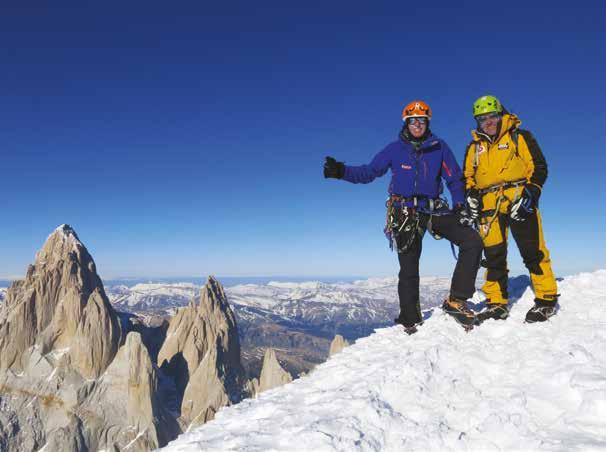
in alto”, verso il cielo, condivisa fin da piccolo con Silvestro, il fratello di due anni più grande.
Parliamo di Tomas Franchini, 35 anni, il forte alpinista di Madonna di Campiglio, anche guida alpina e maestro di sci, mancato all’inizio di giugno mentre era impegnato in una nuova impresa: la scalata, insieme all’alpinista cileno Cristobal Señoret, della parete Nord-Est del monte Cashan (5.716 m), sulla Cordigliera andina, in Perù. Precipitato domenica 2 giugno in seguito al cedimento di un cornicione di neve, è stato ritrovato senza vita due giorni dopo, martedì 4 giugno, a conclusione di una difficile operazione di ricerca e soccorso.
Sono tantissime le scalate, le spedizioni e le imprese alpinistiche compiute da Tomas Franchini. Per quanto fatto sulle pareti dell’Himalaya cinese è stato due volte candidato al “Piolet d’Or” (“Piccozza d’oro”), il più noto
riconoscimento alpinistico al mondo, assegnato alla migliore impresa dell’anno. La prima candidatura l’ha ricevuta nel 2018 per l’apertura di due nuove vie in Cina: “The moon’s power” sul Monte Edgar (6.618 m) e una via sulla cresta SudEst dello Jazi (6.540 m) con Matteo Faletti. La seconda, più recente, arrivata nel 2023, per la prima salita della parete nord dello Shaue Sar (6.653 m), in Pakistan. Per due volte gli è stato assegnato il premio “Paolo Consiglio” del Club alpino accademico italiano: nel 2014 per l’ascensione del Cerro Rincon e nel 2017 per la spedizione “Kishtwar Shivling” nel Kashmir Indiano, firmando la prima salita lungo la “Via dei Trentini” insieme al fratello Silvestro e agli alpinisti Nicola Binelli e Luca Cornella. Al 2014 risale la salita del Cerro Torre con Ermanno Salvaterra (Ermanno Salvaterra Patagonia il grande sogno. Io e il Cerro Torre: una passione ai
confini del mondo , Mondadori, 2021 ), il grande alpinista scomparso nell’estate 2023 per un altrettanto tragico incidente sul Campanile Alto nelle Dolomiti di Brenta. Poi, nel 2018, “Los Picos 6.500”, la spedizione con Franco Nicolini sulle Ande Sudamericane salendo 13 cime in 43 giorni. E molte altre.
Nel suo libro “Linee vergini tra le montagne del mondo” , pubblicato nel 2020 da Idea Montagna Edizioni, Tomas Franchini così di descrive: “Sono soddisfatto, lo dico con sincerità e piacere, se la mia carriera alpinistica dovesse finire oggi, potrei certamente dire che per tutto quello che ho fatto sono un montanaro definito alpinista, e un uomo soddisfatto”.
Tomas Franchini avrebbe avuto ancora tante salite da compiere e tante emozioni da provare, ma il destino lo ha portato oltre la vetta a soli 35 anni.

and shared, he had managed to find the unexplored in the already known, opening new routes on previously untouched walls. He was guided by an original spirit of adventure, an instinctive and profound bond with nature, and a passion for ‘what is up high’, towards the sky, which he shared since childhood with Silvestro, his brother two years older. I’m talking about Tomas Franchini, who was 35. He was a strong mountaineer from Madonna di Campiglio. He was also an alpine guide and ski instructor. He passed away at the beginning of June while he was engaged in a new undertaking. He was going to climb the North-East face of Mount Cashan (5,716 m) with the Chilean mountaineer Cristobal Señoret. The mountain is in the Andes Mountains, in Peru. He fell on Sunday 2nd June after a snow ledge collapsed, and was found two days later, on Tuesday 4th June, after
a difficult search and rescue operation.
Tomas Franchini has achieved so many climbs, expeditions and mountaineering feats. He’s twice been nominated for the “Piolet d’Or” (“Golden Ice Axe”), the world’s most prestigious mountaineering award for the best performance of the year, for his achievements on the walls of the Chinese Himalayas. He was first nominated in 2018 for opening two new routes in China: “The moon’s power” on Mount Edgar (6,618m) and a route on the south-east ridge of Jazi (6,540m) with Matteo Faletti. His second, more recent nomination came in 2023 for the first ascent of the North Face of Shaue Sar (6,653 m) in Pakistan. He’s also won the Paolo Consiglio prize from the Italian Academic Alpine Club twice: in 2014 for the ascent of Cerro Rincon and in 2017 for the Kishtwar Shivling expedition in Indian Kashmir. He made the first ascent along Via dei Trentini with his brother Silvestro and mountaineers Nicola Binelli and Luca Cornella. The ascent of Cerro Torre with Ermanno Salvaterra was in 2014 (you can read more about it in Patagonia il grande sogno. Io e il Cerro Torre: una passione ai confini del mondo by Ermanno Salvaterra, Mondadori, 2021, which is a great read) In the summer of 2023, the legendary mountaineer died in an equally tragic accident on Campanile Alto in the Brenta Dolomites. Then in 2018, there was the “Los Picos 6,500” expedition with Franco Nicolini to the South American Andes, where they climbed 13 peaks in 43 days. And many more.
Per conoscere meglio la personalità di Tomas Franchini, le imprese compiute, il suo senso dell’esplorazione e della ricerca, si può leggere il libro “Linee Vergini tra le montagne del mondo”, Idea Montagna, 2020 Tomas racconta di sé, delle spedizioni che l’hanno visto protagonista, dell’amore per la natura e della passione per le vette. Numerosi interventi affidati alla penna di amici e compagni di cordata completano il “ritratto” di questa straordinaria persona libera, buona e amata, che ha cercato il senso della vita misurandosi con le montagne del mondo.
If you want to know more about Tomas Franchini, his personality, his exploits, his sense of exploration and research, we suggest you read the book Linee vergini tra le montagne del mondo Idea Montagna, 2020 Tomas talks about himself, the expeditions he’s been on, his love of nature and his passion for summits. Many contributions from friends and climbing partners round out the picture of this amazingly free, good and loved man who found meaning in life by challenging himself against the mountains of the world.
In his book, Linee vergini tra le montagne del mondo published in 2020 by Idea Montagna Edizioni, Tomas Franchini describes himself as follows: “I am satisfied, I say this with sincerity and joy, if my mountaineering career were to end today, could certainly say that for all that I have done, I am a mountaineer by definition and a satisfied man.” Tomas Franchini would still have had to tackle many more ascents and experience many more emotions, but fate took him away at only 35 years of age.
di/by STEFANO ALBERGONI
Dall’inno alla libertà testimoniato dalla vita di Nasim Eshqi alla voce del territorio alpino interpretata dagli esperti del Muse. I podcast ci parlano del mondo attorno a noi.
From the hymn to freedom as witnessed by the life of Nasim Eshqi to the voice of the alpine territory as interpreted by Muse experts, podcasts give us an insight into the world around us.
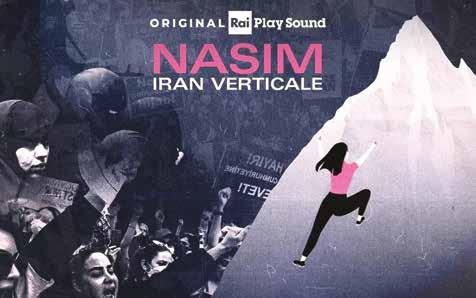
Francesca Borghetti NASIM IRAN VERTICALE raiplaysound.it
Nasim, Iran verticale
Già protagonista del documentario “Climbing Iran” (Rai Cinema, Premio del Pubblico al Trento Film Festival, disponibile su RaiPlay) la grande scalatrice iraniana Nasim Eshqi sceglie nuovamente la cura dell’autrice e regista Francesca Borghetti per raccontarsi nel podcast “Nasim, Iran verticale” di Raiplaysound, alla luce della protesta antigovernativa in corso contro gli ayatollah dal 16 settembre 2022,
quando il popolo iraniano è sceso nelle strade per protestare contro l’uccisione di Mahsa Amini. I cinque brevi episodi del podcast rappresentano un inno alla libertà di un’iconica voce iraniana, che ha fatto della sua vita un manifesto della lotta all’oscurantismo del regime iraniano. Nata nel 1982 a Teheran, Nasim si è ribellata sin da piccola alle imposizioni che subiscono le donne in Iran, rifiutando l’hijab e coltivando per anni la sua passione per le arti marziali in aperto contrasto con le ‘regole’ della società iraniana. Nasim diventa professionista di kickboxing e inizia a competere a livello internazionale,
fino a quando non le viene chiesto di gareggiare con il velo. Vira allora verso l’arrampicata, uno sport di cui si appassiona e che la porta a misurarsi con sé stessa, oltre che consentirle la libertà sempre anelata. Ha all’attivo diverse vie in Armenia, Georgia, Turchia e ha raggiunto il livello “8b” in parete. Nasim Eshqi ha da poco pubblicato il libro “Ero roccia. Ora sono montagna. La mia battaglia per la libertà delle donne in Iran e nel mondo” (Garzanti), mentre lo scorso settembre ha aperto una nuova via sul Catinaccio dedicata al movimento rivoluzionario «Women, life and freedom».
‘Nasim Eshqi, the celebrated Iranian climber and star of the documentary film Climbing Iran (produced by Rai Cinema, winner of the Audience Prize at the Trento Film Festival and available on RaiPlay), has once again teamed up with author and director Francesca Borghetti to share her experiences in Raiplaysound’s podcast “Nasim, Iran verticale ”(Nasim, vertical Iran), in the light of the anti-government protest underway against the ayatollahs since 16 September 2022, when the Iranian people took to the streets to protest against the killing of Mahsa Amini.
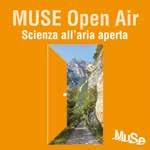
MUSE OPEN AIR – SCIENZA ALL’ARIA
APERTA
Muse-Museo delle Scienze Trento talkingnat.it
“MUSE Open Air – Scienza all’aria aperta” è un podcast in sei episodi prodotto da Talking Nat in collaborazione con il MUSE - Museo delle Scienze di Trento che racconta il territorio alpino attraverso gli occhi delle esperte e degli esperti del MUSE. Ogni episodio ha una sua ambientazione ideale ed è geolocalizzato grazie all’app di Talking Nat. Nel loro insieme, i sei episodi rappresentano un percorso di intrattenimento scientifico all’aperto, per il quale è suggerito l’ascolto in loco grazie a piccoli pannelli QR code. Il primo episodio, “Vivere in città”, collocato al Biotopo del MUSE, racconta di come gli animali e le piante si adattano all’ambiente urbano. Il secondo, “Paesaggi di pietra”, esplora la biodiversità dei muretti a secco
The five brief episodes of this podcast constitute a hymn to freedom delivered by an iconic Iranian figure, who has made her life a manifesto against the obscurantism of the Iranian regime. Nasim was born in Tehran in 1982. From an early age, she challenged the restrictions on women in Iran, rejecting the hijab and pursuing her interest in martial arts for years in opposition to the “rules” of Iranian society. Nasim began her career as a professional kickboxer, competing internationally until she was asked to take part in an event while wearing a headscarf. She then switched to climbing, a sport she
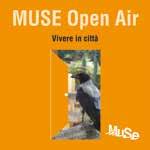
soon became keen on. This let her challenge herself and gave her the freedom she had been looking for. She has established numerous new climbing routes in Armenia, Georgia and Turkey, and has even reached the ‘8b’ level on the climbing wall.
Nasim Eshqi has recently published a book entitled (translated from Italian) “I was a rock, now I am a mountain: my fight for women’s rights in Iran” (Garzanti). Last September, she also inaugurated a new route on the Rosengarten massif dedicated to the revolutionary movement “Women, life and freedom.”

ed è ambientato sul Monte Ghello a Rovereto. Seguono “Una rondine non fa primavera”, ambientato nei prati alti di Romeno con QR code al parco della Pace; “Lupi alle porte”, ambientato sul Monte Bondone (QR code al giardino botanico alpino Viote del Monte Bondone); “Il ghiacciaio d’Agola”, nel cuore delle Dolomiti di Brenta e QR code disponibile alla Casa del Parco Geopark di Carisolo; e infine “Api in città”, ambientato negli Orti del MUSE a Trento.
““MUSE Open Air – Scienza all’aria aperta” (Science in the open air) is a six-episode podcast produced by Talking Nat in collaboration with MUSE – Science Museum of Trento. It presents a narrative of the Alpine region, as observed by experts from MUSE. Each episode is set in a specific location and can be geolocated using the Talking Nat application. Taken together, the six episodes form an open-air
science entertainment trail, which is recommended to be listened to on site thanks to the presence of small QR code panels. The first episode, entitled “Vivere in città”(Living in the city), is set in the MUSE biotope and explores the mechanisms by which animals and plants adapt to the urban environment. The second section, entitled “Paesaggi di pietra” (Stone landscapes), examines the biodiversity of dry-stone walls and is located on Monte Ghello in Rovereto. Then, in the high pastures of Romeno, there is “Una rondine non fa primavera” (A swallow doesn’t make a summer), with a QR code in Parco della Pace. ‘Lupi alle porte’(Wolves at the gates) is positioned on Monte Bondone, with a QR code situated at the Viote Alpine Botanical Garden on Monte Bondone. The exhibition also includes “Il ghiacciaio d’Agola” (Agola Glacier), located in the heart of the Brenta Dolomites, with a QR code available at Casa del Parco Geopark in Carisolo. Finally, “Api in città”(Bees in the city), set in the MUSE Gardens in Trento, completes the series.

MASO GRISUN: OSPITALITÀ E TRADIZIONE AL FEMMINILE.
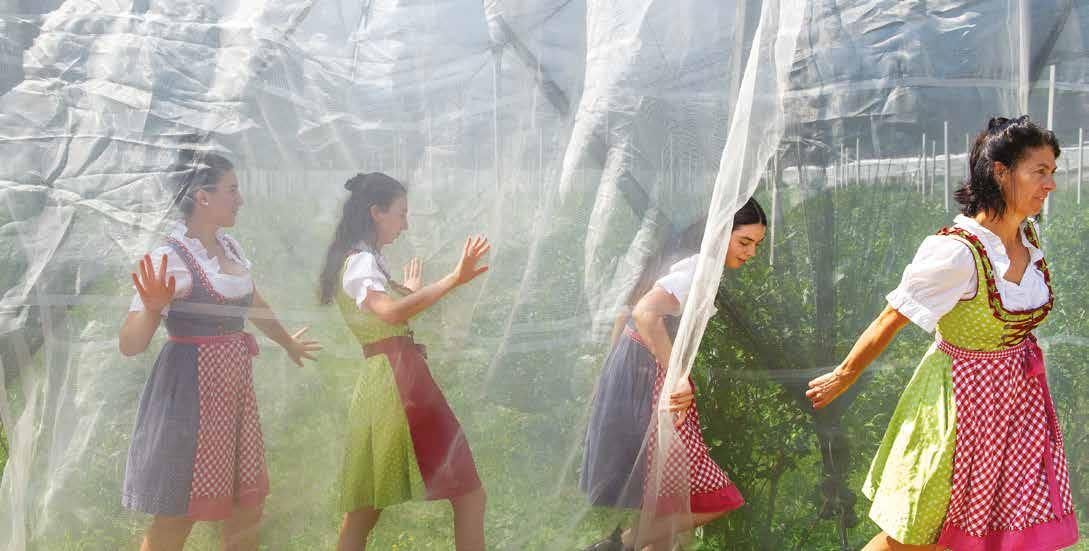
I teli che proteggono le coltivazioni dalla grandine creano un effetto scenografico. The tarpaulins protecting the crops from the hail create a scenic effect.
Étempo di raccolta quando visitiamo Maso Grisun, nella splendida piana di origine alluvionale che si distende tra Spiazzo e Pelugo, poco distante dall’imbocco della Val di Borzago che il Carè Alto (3.465 m slm), cima simbolo dell’anima adamellina della Val Rendena, sorveglia dall’alto. In questo luogo, dove la semplicità è sinonimo di qualità, incontriamo Rita, Vittoria, Gianna e Matilde: una mamma e tre figlie che, con amore, conducono un incantevole agriturismo.
Papà Vittorio, grande appassionato di cavalli e carrozze - sua è la bellissima carrozza che guida i cortei folcloristici più importanti del Trentino, dalla sfilata delle giovenche a Pinzolo passando per la Brava Part in Alpe Cimbra fino al Carnevale asburgico a Madonna di Campiglio - non è presente, sta viaggiando lontano da casa
perchè durante la settimana lavora come autotrasportatore.
Dal blu al nero screziato di viola passando per le sfumature di rosso, piccoli frutti brillano di colori intensi. Mirtilli, more, ribes e lamponi sono giunti a maturazione e non possono attendere. I teli antigrandine, che assomigliano a veli da sposa, ondeggiano leggeri sopra le coltivazioni, donando un particolare senso di armonia al campo. La raccolta è una festa di famiglia: mentre riempiono i cestini e controllano la qualità della produzione, Rita, Vittoria, Gianna e Matilde scherzano e si scambiano confidenze. È un’alleanza tra donne appassionate che ricorda la determinazione delle protagoniste di “Piccole donne”, il capolavoro di Louisa May Alcott, nel trovare il loro posto nel mondo.
Rita, originaria del lago di Tenno, ha lo spirito dell’imprenditrice. “È stata lei,

“LITTLE WOMEN”
Maso
Grisun: female hospitality and tradition.
che ama curare l’orto e il giardino e mettere le mani nella terra - affermano con gratitudine le figlie - a fare il grande passo e decidere di lasciare Caderzone Terme, il paese natale di papà Vittorio, per costruire l’agriturismo a Spiazzo”. “La nostra storia è iniziata come azienda agricola nel 2008”, raccontano. “Poi, nel 2012, abbiamo deciso di aprire ai turisti, seguendo una filosofia semplice e autentica, in armonia con la vita all’aria aperta e la natura. Maso Grisun è casa, nostra e dei nostri ospiti. Il tavolo di famiglia, dove pranziamo e ceniamo, è accanto ai tavoli per vacanzieri: uno spazio intimo, realizzato in larice e tonalite della Val Genova, materiali rappresentativi del territorio, che già al primo sguardo raccontano molto della Val Rendena”. Al centro, una preziosa stufa in maiolica, realizzata dal laboratorio Collizzolli di Bolbeno, riporta, incisi sulle
It’s harvest time when we visit Maso Grisun, in the gorgeous alluvial plain that stretches between Spiazzo and Pelugo, not far from the entrance to Val di Borzago. Carè Alto (3,465 m asl), the symbolic peak of the Adamellina soul of Val Rendena, watches over it all from on high. In this place, where simplicity is the hallmark of quality, we meet Rita, Vittoria, Gianna and Matilde: a mother and three daughters who run a lovely farmhouse with love.
Father Vittorio is a big fan of horses and carriages. His is the beautiful carriage that drives the most important folkloristic processions and historical re-enactments in Trentino. These include the heifer parade in Pinzolo, the Brava Part in Alpe Cimbra and the Hapsburg Carnival in Madonna di Campiglio. He’s not present because he’s travelling far from home. During the week he works as a haulage contractor. The small fruits come in a range of colours, from blue to black mottled with purple, and shades of red. They really stand out with their intense colours. The blueberries, blackberries, currants and raspberries are ready to be picked and cannot wait. The tarpaulins, which look a bit like bridal veils, flap gently over the crops, creating a special sense of
harmony in the field. The harvest is a family affair. As they fill the baskets and check the quality of the produce, Rita, Vittoria, Gianna and Matilde joke and exchange confidences. It’s a group of passionate women who remind me of the characters in Louisa May Alcott’s classic ‘Little Women’, who were determined to find their place in the world. Rita, who hails from Lake Tenno, has the spirit of an entrepreneur. “It was she who loves looking after the garden and putting her hands in the soil,” her daughters say, “who took the plunge and decided to leave Caderzone Terme, father Vittorio’s hometown, to build the farmhouse in Spiazzo.”
“Our story started back in 2008 when we first set up as a farm,” they explain. “Then, in 2012, we decided to open up to tourists. We wanted to keep things simple and authentic, and to be in harmony with the outdoors and nature. Maso Grisun is our home, and it’s also a home away from home for our guests. The family table, where we have lunch and dinner, is right next to the tables for holidaymakers. It’s a cozy space made of larch and tonalite from Val Genova. These materials represent the area well and give you a good idea of what Val Rendena is all about just from looking
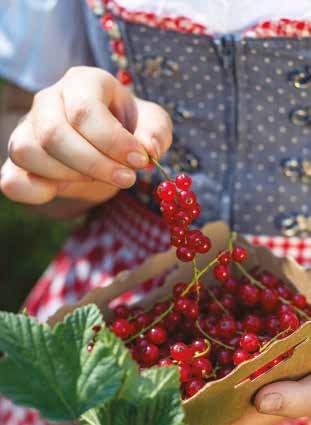
formelle, alcuni ricordi, come Cornicli, il “luogo del cuore”, alla fine della Val di Borzago, dove la famiglia Sartori taglia e raccoglie il fieno per cavalli, Haflinger e Noriker, e le pecore della fattoria. “Gli ospiti - proseguono - amano trascorrere il tempo all’aperto: scattare foto e accarezzare gli animali, stupiti di quanto siano docili. È un’oasi di pace e, quando lo si desidera, in pochi minuti si raggiunge Madonna di Campiglio”. La raccolta e la lavorazione del fresco avvengono in estate, principalmente a luglio, nelle vicinanze del maso e nel laboratorio dedicato. “I fruttispiegano le donne di Maso Grisun - li trasformiamo in confetture e succhi che vendiamo direttamente al consumatore oppure, in inverno, ai mercatini. Spesso accade che a Pinzolo, in occasione delle bancarelle natalizie, le persone assaggino i nostri prodotti, li apprezzino e poi vengano a trovarci per vedere come coltiviamo il campo. Curare il contatto con i clienti è un aspetto molto importante del nostro lavoro. Parliamo molto con loro - sottolinea Vittoria - gli dedichiamo tempo e attenzione, suggerendo i luoghi più belli da vedere e le escursioni più adatte da effettuare”.
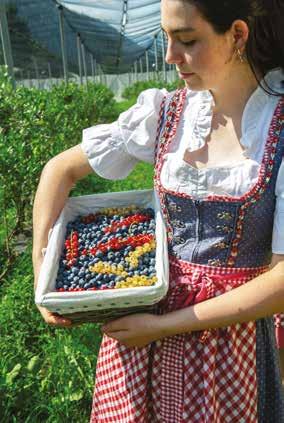
Rita mostra a ciascun ospite le fotografie di paesi, sentieri, laghi alpini, malghe e rifugi da poter raggiungere, e a fine pomeriggio, quando ci si ritrova, chi ha ricevuto i suoi preziosi consigli è orgoglioso di riportare cosa ha visto e vissuto durante la giornata. “Molti tornano più volte nel corso dell’anno e con alcuni si crea un legame speciale”, commenta Gianna.
Se Rita è la voce dell’esperienza, le figlie sono lo sguardo fresco sul presente e contribuiscono, ciascuna con il proprio talento, alla gestione dell’impresa di famiglia. Vittoria, 23 anni, prossima alla laurea in Management del turismo presso l’Università di Innsbruck, porta una visione globale di turismo applicato all’agricoltura. Gianna, 21 anni, studia Scienze forestali all’Università di Padova e ha un interesse spiccato per la lavorazione dei prodotti. La tavola della colazione è imbandita con le sue specialità, preparate “a occhio”, come si direbbe nelle cucine delle nonne, perché ogni ingrediente lo dosa e ricorda a memoria, senza il bisogno di seguire una ricetta. Matilde, la più giovane, ha invece 17 anni e frequenta ancora le scuole superiori, ma si occupa degli animali con
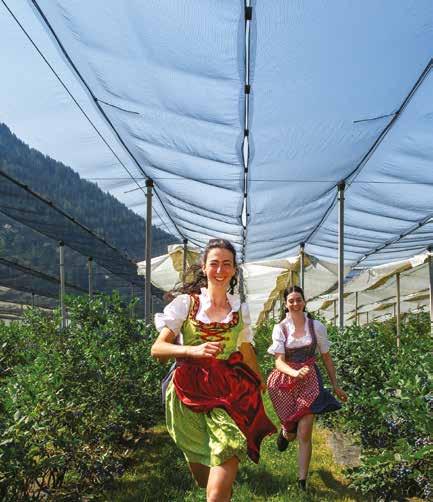
grande dedizione: come una pastora veterana, conosce tutte le sue pecore e le chiama per nome.
L’organizzazione di Maso Grisun è attenta alla sostenibilità e l’agriturismo fa parte delle strutture tipiche “CetsQualità Parco”, un’attestazione ambientale e di marketing territoriale promossa dal Parco Naturale Adamello Brenta Geopark per diffondere la filosofia della qualità ambientale. Al momento del check-in, e poi con materiale informativo all’interno delle sei camere, si comunica cos’è la certificazione, cosa comporta e che finalità ha, promuovendo l’importanza di alcune buone pratiche quotidiane, come la raccolta differenziata, per ridurre l’impatto delle attività umane sull’ambiente.
Rita e Vittorio sono orgogliosi di avere realizzato un gioiello della ruralità nel cuore verde della Val Rendena. “Un progetto - afferma la sua ideatrice - che esprime e trasmette ai turisti, italiani e in particolare stranieri, la bellezza del territorio in cui viviamo”. “E ancheconclude Vittoria - la nostra visione di montagna, quella che si raggiunge con la fatica”.
at them. At the centre of the room, there’s a lovely majolica stove made by the Collizzolli workshop in Bolbeno. There are some memories engraved on the tiles. Cornicli, for example, is the “place of the heart”. That’s at the end of Val di Borzago, where the Sartori family cuts and harvests hay for the horses, Haflingers and Norikers, and the farm’s sheep. “Guests really enjoy spending time outside taking photos and stroking the animals, which are amazingly docile. It’s a great place to relax, and you can be in Madonna di Campiglio in just a few minutes.”
The harvesting and processing of the fresh fruit is done in summer, mainly in July, near the farm and in the dedicated workshop. The women of Maso Grisun explain that they transform the fruit into jams and juices, which they sell directly to consumers or, in winter, at markets. “It’s not uncommon for folks in Pinzolo to taste our products at the Christmas stalls, they appreciate them and then come by to see how we cultivate the field. Keeping in touch with our customers is really important to us. “We chat to them a lot,” Vittoria says. “We give them our full attention,

telling them about the best places to see and the best trips to take.”
Rita shows each guest photos of the villages, paths, alpine lakes, mountain pastures and refuges they can visit. At the end of the afternoon, they meet again, and those who have followed her advice are proud to report what they have seen and experienced during the day. “A lot of them come back a few times during the year with some of them we create a special bond,” Gianna says.
Rita may be the voice of experience, but her daughters are the fresh eyes on the present, contributing their own talents to the running of the family business.
Vittoria, who is 23 and about to graduate in Tourism Management from the University of Innsbruck, has a global vision of tourism that she applies to agriculture. Gianna, who is 21, is studying forestry at the University of Padua and is really interested in processing products. The breakfast table is set with her specialities, prepared “by eye”, as you’d say in grandmothers’ kitchens, because she doses each ingredient and remembers it from memory, without the need to follow a recipe. Matilde, the youngest, is 17 and still in high school,
but she looks after the animals with great dedication. She’s like a veteran shepherdess, she knows all her sheep and calls them by name.
The Maso Grisun organisation is all about sustainability, and the farmhouse is one of the typical “CetsQualità Parco” structures, which is an environmental and territorial marketing certification promoted by the Adamello Brenta Geopark to spread the philosophy of environmental quality. At check-in, and then with information material in the six rooms, we explain what certification is, what it entails and what it is for, promoting the importance of some good everyday practices, such as separate waste collection, to reduce the impact of human activity on the environment.
Rita and Vittorio are proud to have created a rural gem in the heart of Val Rendena. “It’s a project that shows tourists, Italians and especially foreigners the beauty of our area,” says its creator. “It also shows our vision of the mountain, which we’ve achieved through hard work.”

L’ESEMPIO DI ILLE HAUS, L’ABITAZIONE IN LEGNO INNOVATIVA, SOSTENIBILE, TECNOLOGICA E CONFORTEVOLE.
Sostenibile, innovativa, tecnologica, a basso consumo energetico, confortevole, antisismica, durevole, sicura e certificata. Costruita in legno, materia rinnovabile proveniente da foreste certificate, nell’aspetto può essere tradizionalmente alpina o audacemente contemporanea. Rappresenta, potremmo dire, uno degli impieghi più all’avanguardia di un materiale conosciuto e adoperato da millenni: il legno. Stiamo parlando della casa ideata e costruita da Ille, l’azienda di lunga esperienza nella realizzazione di edifici in legno prefabbricati, oggi leader del settore in Italia - con numerosi progetti abitativi conclusi e in corso sulle Alpi, da Madonna di Campiglio alla Svizzera - e presente anche in alcuni paesi esteri. Nata a Spiazzo, come segheria e falegnameria all’inizio degli anni ‘50, su iniziativa del nonno Leopoldo Terzi, ha realizzato le prime case prefabbricate in legno alla fine degli anni ‘60. Oggi, con quartier generale, sede produttiva e spazio espositivo a Pieve di Bono, è operativa in Valle del Chiese, territorio che si distingue, in Trentino, per vocazione artigianale e specializzazione industriale di alta qualità.
A guidare Ille, forte di uno staff motivato
e dinamico, ieri come oggi, c’è la famiglia Terzi, giunta alla terza generazione di “innovatori del legno”, mentre la quarta sta crescendo e troverà le porte aperte per un futuro ingresso in azienda.
“Quando presento la nostra impresa a chi non la conosce - spiega Elia Terzi direttore tecnico di Ille Haus - mostro la sezione di un larice secolare. Negli anelli concentrici che ne indicano l’età inserisco gli anni di esperienza della nostra realtà, che superano i settanta, e punti di forza del nostro prodotto, cresciuti e migliorati nel corso del tempo: la funzionalità e il comfort, l’emozione e la sostenibilità, la natura e le risorse energetiche rinnovabili, infine la bioarchitettura.
Realizziamo case in legno “chiavi in mano”, dal progetto preliminare alla consegna, attingendo ai modelli, personalizzabili secondo le richieste del cliente, della nostra linea “Design d’autore” oppure eseguendo progetti esclusivi studiati da professionisti, architetti e designer. Spesso interveniamo su edifici che hanno fatto ormai la loro storia sostituendoli con nuovi più performanti. Ci piace recuperare il vecchio, prestando attenzione alla tradizione, ma anche interpretare un’abitazione dall’aspetto più moderno e contemporaneo.
In alcuni progetti abbiamo riutilizzato
The example of ille haus, the innovative, sustainable, technological and comfortable wooden house.
Sustainable, innovative, technological, low-energy, comfortable, earthquakeproof, durable, safe and certified. It’s made from wood, a renewable material from certified forests, its appearance can be traditional Alpine or boldly contemporary. It’s one of the most cutting-edge ways to use a material that has been known and used for thousands of years: wood. We are talking about a house designed and built by Ille, a company with plenty of experience in building prefabricated wooden buildings. They are currently the top company in Italy in this field, with numerous completed and ongoing housing projects in the Alps, from Madonna di Campiglio to Switzerland. They’re also present in some other countries abroad. Founded in Spiazzo at the beginning of the 1950s as a sawmill and carpentry workshop on the initiative of grandfather Leopoldo Terzi, the first prefabricated wooden houses were produced at the end of the 1960s.
Today, with its headquarters, production plant and showroom in Pieve di Bono, the company operates in Valle del Chiese, an area in Trentino that stands out for its artisan vocation and high quality industrial specialisation.
“La relazione virtuosa tra natura e uomo dà vita a una vera e propria cultura, del legno e della foresta. Una cultura che portiamo, da sessant’anni, oltre i confini, su tutto il territorio italiano”.
“The virtuous relationship between man and nature gives life to a true culture of wood and forest. A culture that we’ve been sharing for sixty years, across borders, throughout Italy.”
Elia Terzi
“La
legno antico, destinato ad essere buttato, recuperandolo da vecchi masi e dandogli nuova vita”. Il risultato ce lo abbiamo davanti agli occhi, nelle numerose realizzazioni che si stanno diffondendo sul territorio dell’ambito turistico Madonna di Campiglio. “È importante dire - aggiunge il direttore tecnico - che il legno utilizzato appartiene alla filiera locale ed è certificato con il marchio PEFC che garantisce la sostenibilità della gestione forestale da cui proviene. Alla materia prima applichiamo il massimo della tecnologia disponibile per costruire case intelligenti, antisismiche e salubri, che possono produrre più energia di quanta ne consumano e che sono esteticamente apprezzabili”.
Ille, anche attraverso la collaborazione con importanti realtà esterne appartenenti al settore legno, investe costantemente in ricerca e sviluppo per mantenere alto il livello di innovazione che caratterizza suoi prodotti. Sempre al passo con il nuovo che avanza, il sistema costruttivo proposto è dunque in continua evoluzione e costantemente aggiornamento.
Oltre le ville e le case in legno per privati in bioedilizia, l’azienda con sede a Pieve di Bono realizza anche grandi edifici in legno e strutture pubbliche prefabbricate. Inoltre è di lungo corso l’esperienza maturata nella produzione di prefabbricati per villaggi cantiere, moduli trasportabili, opere di edilizia
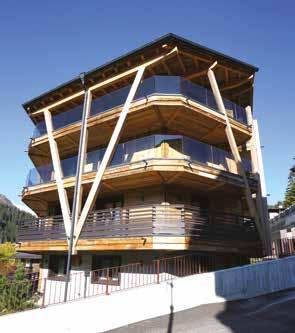
temporanea di soccorso e carpenteria in legno in generale.
Tra le ultime tendenze del mercato, sulle quali Ille Haus ha cominciato a lavorare con successo, sono da segnalare anche i lussuosi moduli che si stanno affermando in sostituzione delle casette in materiale sintetico che per lungo tempo hanno popolato campeggi e villaggi turistici. Un nuovo concetto di ospitalità all’aria aperta e diffusa che si innalza in qualità.
Tradizione e innovazione sono entrambe funzionali ad una visione dell’abitare in sintonia con l’ambiente. “Sì - conferma il dirigente di Ille Haus - il materiale sul quale si base il nostro sistema costruttivo è il legno locale massiccio di larice, come lo lavoravano un tempo
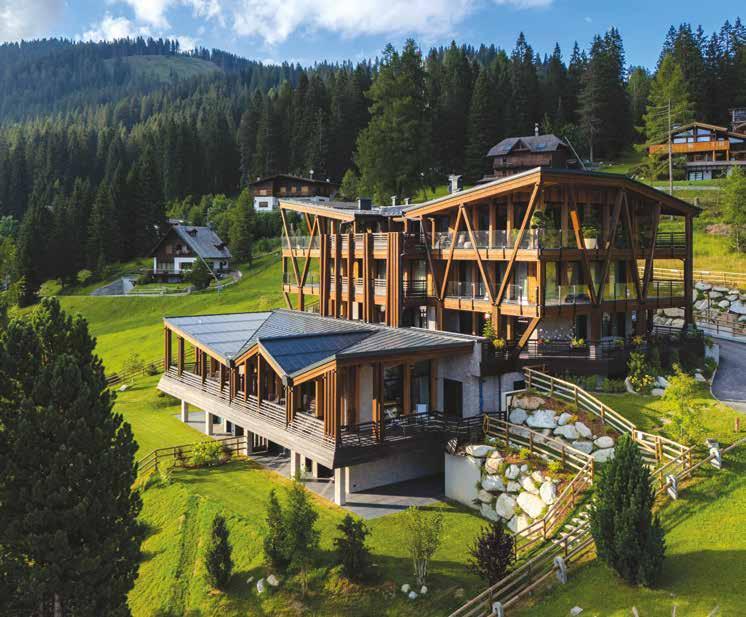
maestri carpentieri, ma in più ci sono le tecnologie più all’avanguardia attualmente disponibili. In generale le abitazioni in legno consumano meno suolo e si inseriscono molto bene nel paesaggio circostante”.
“A cosa serve una casa se non hai un pianeta decente in cui metterla?”. Alla domanda provocatoria che lo scrittore americano Henry David Thoreau poneva già a metà ‘800, Ille risponde con le sue case ecologiche e con una gestione aziendale attenta alla sostenibilità.
“Possiamo concludere - afferma Elia Terzi - che costruire case in bioedilizia è un obbligo per il futuro del nostro pianeta”.
Ille is run by the Terzi family, which is now in its third generation of “wood innovators”, with a motivated and dynamic workforce, while the fourth generation is growing and will find the doors open to join the company in the future.
“When I introduce our company to new people - explains Elia Terzi, technical director of Ille Haus – I show them a section of a centuries-old larch tree. I put the years of experience we have, which are over seventy, in the concentric rings, and then I put the strengths of our product in there too. These strengths have grown and improved over time: functionality and comfort, emotion and sustainability, nature and renewable energy resources, and finally bio-architecture. We build turnkey wooden houses from start to
Complesso residenziale
“Masi del Belvedere”, progetto di ArchiDolomitiStudio architetti
Gino ed Emiliana Pisoni.
“Masi del Belvedere” residential complex, project by ArchiDolomitiStudio architetti Gino ed Emiliana Pisoni.
Il progetto più lontano
Negli anni ‘90 Ille lo ha realizzato al Polo Sud su commissione di Enea (Agenzia nazionale per le nuove tecnologie, l’energia e lo sviluppo economico sostenibile) per l’Unità tecnica di ricerca presente in Antartide.
The farthest project
In the 1990s, Ille built it at the South Pole on behalf of Enea (National Agency for New Technologies, Energy and Sustainable Economic Development) for the Technical Research Unit in Antarctica.
finish, from the preliminary design to delivery. We use models that we can customise according to customer requirements, from our “Design d’autore” line, or we work on exclusive projects designed by professionals, architects and designers. We often work on buildings that have made their history by replacing them with new, better performing ones. We like to bring old things back to life, keeping with tradition while also giving a home a more modern and contemporary look. In some projects, we’ve reused old wood that was destined for the dump, salvaging it from old farmhouses and giving it a new lease of life.” You can see the result for yourself in the many projects that are springing up all over the Madonna di Campiglio tourist area.
“It is important to say - adds the technical director - that the wood used comes from the local supply chain and is PEFC-certified, which guarantees the sustainability of the forest management from which it comes. We apply the best available technology to the raw material in order to build smart, earthquake-proof, healthy homes that produce more energy than they consume and are aesthetically pleasing.”Ille constantly invests in research and development, also in collaboration with important external companies in the wood sector, in order to maintain the high level of innovation that characterises its products. Always at the forefront of new developments, the proposed construction system is therefore constantly evolving and updated.
Abitazione in stile contemporaneo, progetto di Marzoli Architetti Associati. Contemporary style house, project by Marzoli Architetti Associati.
As well as wooden private homes and villas in the Green Building sector, the Pieve di Bono-based company also manufactures large wooden buildings and prefabricated public buildings. The company also has extensive experience in the production of prefabricated buildings for building sites, transportable modules, temporary emergency buildings and general carpentry.
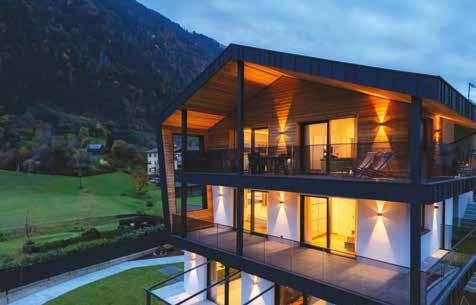
L’impegno per la sostenibilità.
Nel 2024 Ille ha ottenuto il Rating di Sostenibilità ESG (Environmental, Social, Governance) e intrapreso il percorso per la redazione del Bilancio di sostenibilità tenendo conto degli aspetti ambientali, sociali e di gestione aziendale.
The farthest project
In the 1990s, Ille built it at the South Pole on behalf of Enea (National Agency for New Technologies, Energy and Sustainable Economic Development) for the Technical Research Unit in Antarctica.
Il premio ARCA
Nel 2021, il progetto di casa
“Alpine mood” ideato da Ille Haus ha vinto il Premio ARCA (primo sistema di certificazione per le costruzioni in legno) nella categoria edifici residenziali unifamiliari.
The ARCA Award
In 2021, the “Alpine mood” house project designed by Ille Haus won the ARCA Award (the first quality certification for timber buildings) in the single-family house category.
One of the latest market trends that Ille Haus has started to work on successfully is the luxury modules that are emerging to replace the synthetic huts which have long populated campsites and holiday villages. A new concept of open-air and multi-building hospitality offering increasing quality.
Tradition and innovation both help us to live in harmony with the environment.
“Yes - says the manager of Ille Hausour construction system is based on solid local larch wood, as the master carpenters used to work it in the past, but we also use the most advanced technologies currently available. In general, wooden houses use less land and fit very well into the surrounding landscape.”
“What is the use of a house if you haven’t got a tolerable planet to put it on?” This is the question that American writer Henry David Thoreau asked back in the mid-19th century. Ille is answering it with its ecological houses and sustainabilityconscious company management. “We can conclude - says Elia Terzi - that building green houses is an obligation for the future of our planet.”

Per saperne di più: Find out more:

Ille Haus
Case in bioedilizia Fraz. Strada, Polo produttivo 38085 Pieve di Bono-Prezzo (Tn) T. +39 0465 670058 info@ille.haus www.ille.haus
Alcune realizzazioni di Ille, con vari stili, progettate da vari architetti nel territorio dell’ambito turistico Madonna di Campiglio.
In the tourist area of Madonna di Campiglio, some Ille buildings in various styles designed by different architects.
Abitazione in stile tradizionale, progetto dello Studio Tecnico Cereghini. Traditional style house, project by Studio Tecnico Cereghini.

LA STAGIONE INVERNALE 2024/2025
SEGNA L’INIZIO DI UNA NUOVA ERA PER IL CERANA: L’HOTEL È
ARRICCHITO DA DUE NUOVI PIANI CHE
OSPITANO ELEGANTI SUITE E UNA RAFFINATA SKY SPA PANORAMICA, OFFRENDO UNA VISTA MOZZAFIATO SULLA CELEBRE PISTA 3TRE DI MADONNA DI CAMPIGLIO.
Fin dall’inizio, l’obiettivo della
Famiglia Cerana è stato quello di creare nuovi spazi in grado di arricchire e completare l’esperienza dell’ospite, sviluppando un concept di relax contemporaneo e lusso con nuove suite e una spa posizionata nel punto più panoramico della struttura. Tra sopraelevazioni, perizie acustiche e strutturali volte a gestire la complessità degli impianti e ridurre la rumorosità, i nuovi spazi sono stati progettati e dotati di soluzioni avanzate per assicurare il massimo comfort sia nella spa che nelle camere. Ecco che, la stessa spa nasconde, sotto una forma attraente, un cuore altamente tecnologico.
Un esempio è la vasca in acciaio inox, capace di assicurare bellezza e risparmio: lo studio attento nello sviluppo di questa vasca, con parete angolare vetrata, ha reso possibile realizzare un’infinity pool particolarmente suggestiva, con trasparenze e bordo a sfioro.
Oltre al controllo del rumore, grazie a un sistema a sfioro notturno anche consumi per il mantenimento in temperatura dell’acqua sono stati ottimizzati, garantendo efficienza energetica. L’attenzione alla personalizzazione degli ambienti wellness è stata particolarmente curata e, oltre al corretto dimensionamento degli spazi, sono stati scelti rivestimenti specifici per la sauna e il bagno turco:
rovere goffrato e gres si integrano perfettamente con l’interior design, offrendo in ogni momento uno spazio avvolgente e un’esperienza equilibrata tra calore, reazioni fredde e riposo.
“Abbiamo sempre desiderato offrire il meglio ai nostri ospiti, ed è da questa esigenza che è nata l’idea di ampliare l’hotel. Questo intervento, seppur complesso, si è rivelato azzeccato e ci ha permesso di diversificare la nostra offerta,” spiega Margherita Cerana, proprietaria del Cerana Relax Hotel
“Fondamentale è stato l’intervento dell’Ing. Valter Paoli dello Studio MPS Engineering SRL che, mantenendo la direzione dei lavori e collaborando con lo studio AB di Alberto Buffolino e l’azienda SANAE Wellness
d’Autore—responsabile anche della nostra prima spa al piano interrato—ha riqualificato la nostra struttura in modo eccellente.
Grazie alla loro capacità di coadiuvarsi con tutte le maestranze, siamo riusciti a potenziare non solo il numero delle stanze, con l’inserimento delle nuove suite, ma anche servizi offerti ai nostri ospiti. Ora disponiamo di tutte le forme di benessere, dalla spa per famiglie al piano interrato alla nuova sky spa riservata solo agli adulti, fino al concetto più intimo di benessere con le nuove suite wellness, alcune delle quali dotate di vasca freestanding, sauna a infrarossi o bagno turco direttamente in camera.”
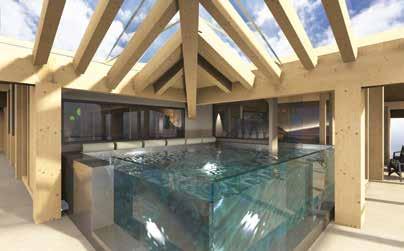
Al Cerana Relax Hotel, la nuova spa progettata dagli Autori del Wellness di SANAE è caratterizzata da una forte personalizzazione delle finiture.
At Cerana Relax Hotel, the new spa designed by SANAE’s Wellness Authors features highly personalised finishes.
SANAE PRESENTS WELLNESS INNOVATIONS AT CERANA RELAX HOTEL
The 2024/2025 winter season marks the beginning of a new era for Cerana: the hotel will be enriched by two new floors with elegant suites and a refined panoramic sky spa, offering a breathtaking view of the famous Madonna di Campiglio 3Tre ski run.
From the outset, Cerana family’s aim has been to create new
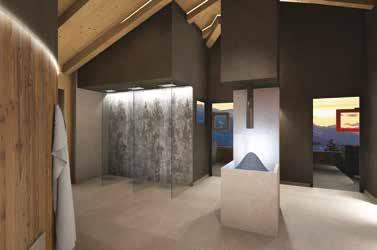
spaces that enrich and complete the guest experience, developing a concept of contemporary relaxation and luxury with new suites and a spa located in the most scenic spot of the building.
The new spaces have been designed and equipped with advanced solutions to ensure maximum comfort, both in the spa and in the rooms, using elevations, acoustic and structural studies to manage the complexity of the systems and reduce noise.
Here, the spa itself hides behind an attractive form a highly technological heart.
One example is the stainless steel pool, which is both beautiful and economical: careful study in the design of this pool, with a glazed corner wall, has made it possible to create a particularly impressive infinity pool with transparency and an infinity edge.
In addition to noise reduction, a night overflow system has also been installed. This optimises the consumption required to maintain the water temperature, thus ensuring energy efficiency.
Particular attention has been paid to the personalisation of the wellness environments, and, in addition to the correct dimensioning of the rooms, specific finishes have been chosen for the sauna and Turkish bath: embossed oak and porcelain stoneware blend in perfectly with the interior design, offering an enveloping space at all times and a balanced experience between heat, cold reactions and rest.
“We’ve always aimed to give our guests the best experience, and this led to the idea of expanding the hotel. This intervention, while complex, proved to be successful and allowed us to diversify our
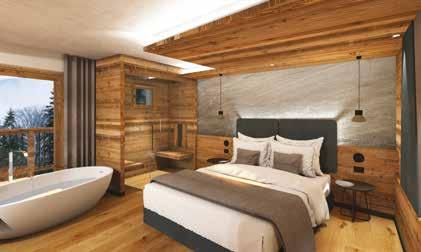
offerings,” explains Margherita Cerana, owner of Cerana Relax Hotel “We couldn’t have done it without Engineer Valter Paoli of
Studio MPS Engineering S.R.L. He was in charge of the works and worked with Alberto Buffolino’s AB Studio and the company SANAE Wellness d’Autore — also in charge of our first spa on the basement floor—They did a fantastic job of redeveloping our structure. Thanks to their ability to work well with all the other staff, we were able to not only add more rooms with the new suites, but also to improve the services we offer our guests. We’ve got all kinds of wellness now, from the family spa on the basement floor to the new adultsonly sky spa, to the more intimate wellness suites, some of which have a freestanding bathtub, infrared sauna or Turkish bath right in the room.”
Cerana Relax Hotel Riqualificazione Redevelopment:
& ARCHITECTURE
SPA
di/by SABRINA FRIZZI
TRE DONNE RACCONTANO IN TRE VIDEO, LA LORO VITA IN RIFUGIO.
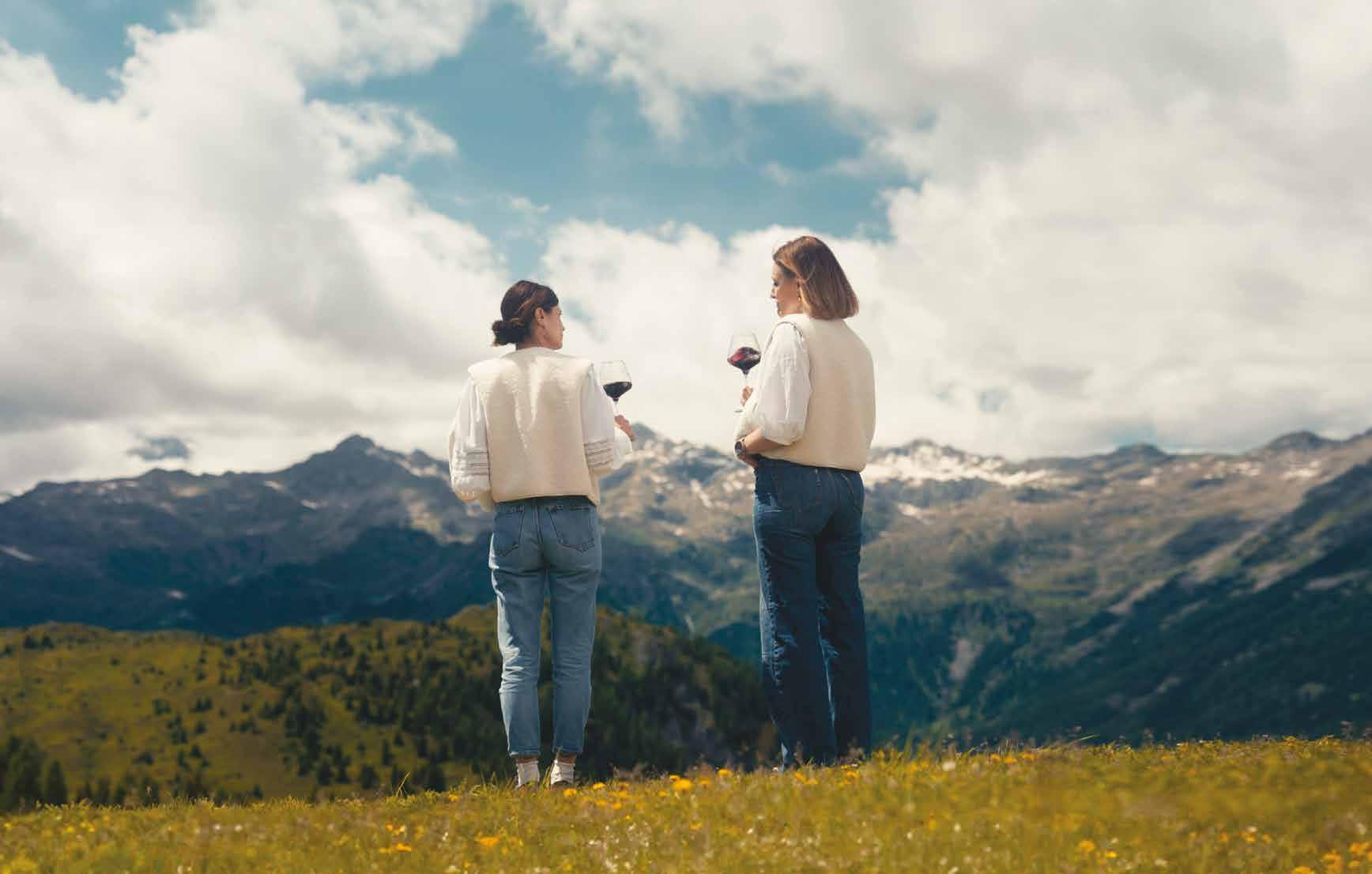
Unnuovo progetto per raccontare le storie delle “Donne dei 2000 metri”. Donne che gestiscono con passione, ma anche con tanto impegno e fatica, rifugi e ristoranti in quota e che ogni giorno accolgono gli ospiti trasmettendo la loro dimensione di “casa”. Una narrazione al femminile realizzata attraverso alcuni video di storytelling in cui le parole delle protagoniste si sono fuse con i loro gesti, le loro emozioni, loro sorrisi, creando un nuovo racconto. Autentico, sentito, spesso commosso.
In three videos, three women share their experiences of living in a mountain hut.
A new project to tell the stories of the ‘ Women at 2000 metres ’. Women who manage mountain huts and restaurants at high altitude with passion, commitment and effort. They welcome guests every day, making sure they feel at home. A female narrative realised through storytelling videos, in which the words of the protagonists are combined with their gestures, emotions and smiles. The result is a new tale. Genuine, emotional, often moved.
Laprima storia che abbiamo raccontato è quella di Martina, di Baita Natalia. Una baita che è stata casa della famiglia Vidi per più generazioni e ora è storia di donna, di figlia, di famiglia. Martina ci racconta che se fosse cresciuta in un altro luogo non sarebbe la donna che è oggi.
La seconda è quella di Manuela del Rifugio Viviani Pradalago. La genuinità di Manuela arriva dritta al cuore quando ci confida che tutti suoi ricordi sono proprio lì. Come il ricordo di quando aiutava il papà a tenere in ordine i sentieri e questo era motivo di orgoglio.
La terza storia ci parla invece di Chiara, che gestisce insieme alla sua famiglia il Ristorante Boch. Chiara ci racconta che quando vede il suo rifugio da fuori vede casa. E dove c’è casa, si sa, c’è sempre il cuore.
È arrivato il momento di conoscerle meglio.
The first story we shared is about Martina from Baita Natalia. A mountain hut that has been the home of the Vidi family for several generations and is now the story of a woman, a daughter, a whole family. Martina says that if she’d grown up somewhere else, she wouldn’t be the person she is today.
The second story is about Manuela from Rifugio Viviani Pradalago. Manuela’s sincerity goes straight to the heart when she confides that all her memories are right there. She talks about helping her father keep the trails tidy when she was younger, and how proud she was of that.
The third story is about Chiara, who runs the Boch Restaurant with her family. Chiara says that when she looks at her mountain hut from the outside, it looks like home. And home is where the heart is. Now let’s get to know them better.
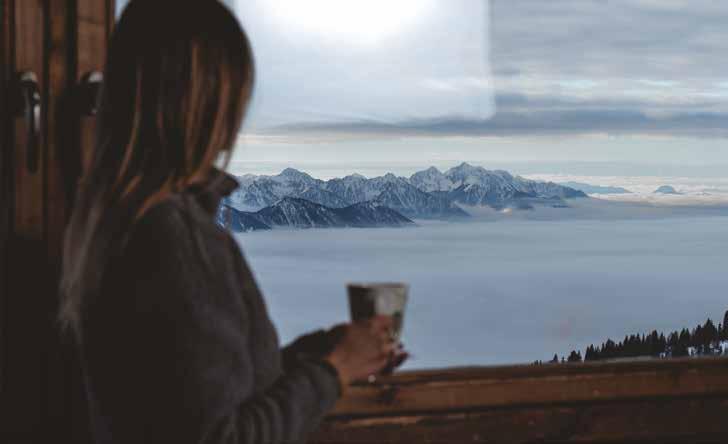
Quando guardo Baita Natalia da lontano e vedo la baita che mi aspetta penso alla frase “klein aber mein, piccolo ma mio”.
When I look at Baita Natalia from afar and see the hut waiting for me, I think of the phrase “klein aber mein, small but mine”.
Nome Name
Martina Marcora
Struttura Structure
Baita Natalia
Quota Altitude 2052 m
Pillole di storia
Struttura di proprietà della famiglia
Vidi dal 1954. Nel 2023 diventa
“Baita Natalia” prendendo il nome di Natalia, la mamma di Martina, che ha gestito il rifugio per 30 anni.
Bits of History
The Vidi family have owned the hut since 1954. In 2023 it became ‘Baita Natalia’, named after Natalia, Martina’s mother, who ran the hut for 30 years.
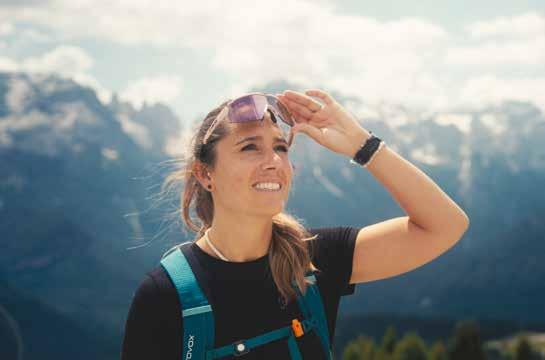
Baita Natalia raccontata da Martina
“È una struttura che ha dentro di sé la storia di una famiglia. C’è sempre stata un’attenzione particolare per le ricette del territorio unite alla storia e alle tradizioni familiari”.
“Qui l’ospite si sente accolto come a casa di un amico”.
“Baita Natalia è semplicità, familiarità, un luogo dove trovare conforto”.
Baita Natalia as told by Martina
“It’s a building with a history that’s inextricably linked to a family.
We’ve always made sure to combine local recipes with family history and traditions”.
“Guests feel right at home here, like they’re in a friend’s place”.
“Baita Natalia is all about simplicity and homeliness, a place where you can find comfort”.

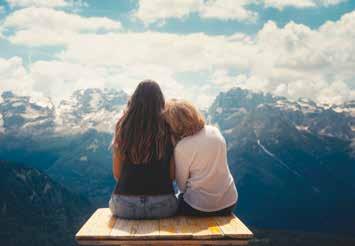
Il rifugio ha cresciuto una donna forte: la fatica di raggiungere una cima è la fatica che si ha nella vita; il non mollare è il non mollare che ho nella vita. Se potessi dire qualcosa al mio rifugio, direi “grazie”.

Nome Name
Manuela Viviani
Struttura Structure
Rifugio Viviani Pradalago Quota Altitude 2082 m
Pillole di storia
Rifugio di proprietà della famiglia Viviani dal 1969.
Bits of History
Owned by the Viviani family since 1969.
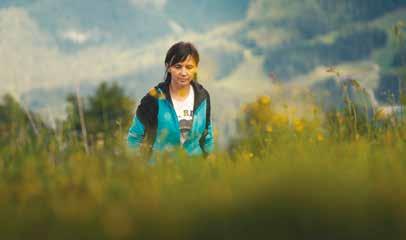
CIAK, SI GIRA! di JOE BARBA
Il punto di vista di Joe Barba, art Director di Videonaria, che ha sviluppato e realizzato insieme ad Azienda per il
Turismo Madonna di Campiglio il progetto
“Le Donne dei 2000 metri”.
Non so bene come inizino gli articoli.
Di solito nei video si battezza un punto macchina, si dice: ”Motore”, si batte un ciak che porta all’azione. Ma in uno scritto,
come diavolo si inizia? Quale deve essere l’incipit giusto, quello capace di catturare l’attenzione del lettore?
Vabbè, non mi sembra ci sia più questo problema. Perché in un articolo di un magazine, come nella creazione di video sulle Donne dei 2000 metri, primi 7 secondi sono fondamentali: direi tutto, col senno di poi.
Ma come inizia un video?
Nella realizzazione di questi tre minidoc, in cui cerco di fondere la tecnica del reportage alle esigenze di promozione
territoriale, i primi 7 secondi corrispondono esattamente al momento in cui scendo dalla cabinovia e mi avvicino al loro presidio. Appena le intravedo in lontananza mi accorgo subito che con lo sguardo mi studiano: mi osservano, analizzano la mia camminata per capire se sono mai stato in montagna. Negli anni, sapendo di questa loro particolare abilità (ci beccano sempre in pieno), ho capito cosa sicuramente non devo fare in queste occasioni: non devo presentarmi in infradito, non devo presentarmi come IL
regista, non devo rifiutare un caffè. Queste tre semplici regole mi hanno permesso di essere visto come “l’è uno dei nostri” ed avere la giusta propensione al dialogo. Altra cosa fondamentale per la riuscita di un documentario (chiamerò questi video in mille modi diversi, perché io per primo devo ancora capire bene cosa siano), è dimenticarsi lo scopo della visita. Il mantra che ripeto dentro di me, soffocando il cervello in subbuglio che mi dice “Gira, gira, gira, hai visto che spettacolo?” è esattamente
Our mountain hut has raised a strong woman. The fatigue of reaching a summit is a reflection of the fatigue I experience in life in general. Similarly, the not giving up is a reflection of my own personal resilience. If I could say anything to my hut, I’d say a big thank you.
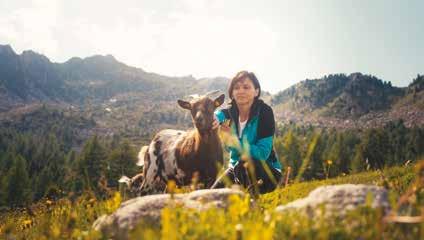
l’opposto: “Non sei qui per fare video, aspetta ad accendere la videocamera, stai zitto e ascolta. Qual è il loro punto di vista?”. Il dimenticarmi io per primo di dover realizzare un video e concentrarmi sul creare un’atmosfera di fiducia e apertura, fa dimenticare anche alle rifugiste la presenza della videocamera, la nemica più grande in queste occasioni. Spogliarmi del mio ruolo di regista scegliendo semplicemente di farmi trasportare dall’esperienza umana è il ringraziamento velato che leggo negli occhi delle rifugiste,
Il Rifugio Viviani Pradalago raccontato da Manuela
”Un aggettivo che descrive il Rifugio Viviani è genuino. È genuino il cibo proposto ai clienti, è genuina la nostra famiglia e, soprattutto, è genuino il rapporto con gli ospiti”.
“Lavorare a 2000 metri vuol dire fatica, ma vuol dire anche alzarsi ogni mattina in paradiso”.
“Il nostro cuore è in ogni cosa che facciamo”.
Rifugio Viviani Pradalago as told by Manuela
“An adjective that describes Rifugio Viviani is genuine. The food offered to our guests is genuine, our family is genuine and above all the relationship with our guests is genuine”.
“Working at 2000 metres is tiring, but it also means waking up every morning in paradise”.
“We put our heart in everything we do”.
che solo ora si sentono pronte per essere riprese. Da quando smetto di voler fare il regista, anche i miei video ringraziano. Quando le persone si sentono libere di essere sé stesse, senza filtri o aspettative, emergono le storie più vere. E questa autenticità si riflette inevitabilmente sullo schermo. Comunque, preparate le due telecamere per l’intervista (una terza sta girando dei dettagli, così come un drone sta facendo le coperture aeree) ecco che si battezza un punto macchina, si esclama: ”Motore”, si batte il primo ciak che porta all’azione. Ma la vera intervista è iniziata molto prima. E anche silenzi delle rifugiste, tra una risposta e l’altra, diventano importanti: sono uno specchio della loro solitudine, che non è mai assenza, ma la prova tangibile dell’esistenza stessa della montagna. Incredibile che per arrivare a questa conclusione io ci abbia messo solo un po’ di propensione e sette secondi del mio tempo. Quanto potrebbe essere più bello il mondo se tutti ci impegnassimo, non dico a creare un dialogo, ma semplicemente a essere aperti a farlo? A dedicarci
vicendevolmente sette secondi. I miei video lo dimostrano: tutto è più facile dopo. Forse sì, il motivo per cui sono al mondo è proprio questo. Avere la scusa di raccontare storie per imparare a essere, ogni volta, una persona migliore. Un rifugio alla volta. Sette secondi alla volta.
Per esigenze narrative questo racconto è stato scritto in prima persona. Joe Barba però non esisterebbe senza Videonaria, fatta di anime che vivono di luce propria: Valentina, Filippo, Marco, Riccardo, Federica, Michele.
Se guardo il mio rifugio da fuori, vedo casa.
When I look at my mountain hut from the outside, I see home.

Nome Nome
Chiara Scalfi
Struttura Structure
Boch
Quota Altitude 2085 m
Pillole di storia
Da 17 anni Chiara gestisce il Boch insieme alla sorella Roberta, la mamma Elda e il papà Roberto.
Bits of History
Chiara has been running Boch for 17 years, together with her sister Roberta, her mother Elda and her father Roberto.
WE’RE ROLLING!
by JOE BARBA
The point of view of Joe Barba, Art Director of Videonaria, who developed and realised the Le Donne dei 2000 metri (Women at 2000 metres) project in collaboration with Azienda per il Turismo Madonna di Campiglio.
I’m not really sure how articles get started. In videos, you usually find a camera angle, say ‘camera’ and the clapperboard sound leads to
action. But how do you even start with writing? What’s the right way to kick things off and grab the reader’s attention?
I don’t think there’s any problem with that anymore. With a magazine article, or a video like Women at 2000 Metres, the first seven seconds are super important. I’d say everything, in retrospect.
But how does a video actually get started?
In making these three short films, I tried to combine the techniques of reportage with the needs of
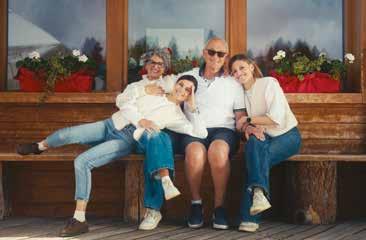
territorial promotion. The first seven seconds of each film show me getting off the cable car and approaching their garrison. As soon as I catch a glimpse of them in the distance, realise that they are studying me: they are watching me, analysing my walk to see if I have ever been in the mountains. Over the years, I’ve come to understand what I definitely shouldn’t do on these occasions, given their particular ability to catch us in the act. I’ve learned not to show up in flipflops, not to present myself as
the director, and not to refuse a coffee.
Following these three simple rules has meant that I’m now seen as ‘one of our own’ and have the right inclination towards dialogue. Another key ingredient for a successful documentary (I’ll call these videos by different names because I’m still trying to figure out what they are) is to forget about the purpose of the visit. I repeat a mantra to myself to stop my brain from churning with thoughts like, “Start filming! Did you see that? That’s amazing!”,

Il Boch raccontato da Chiara
”Il nostro punto di forza è essere tutti e quattro uniti”.
“La cura del dettaglio è fondamentale, dalla ricerca dei fiori alla cura del piatto”.
“Se c’è una cosa sulla quale punteremo sempre è l’accoglienza e il trasmettere “casa” anche ai nostri ospiti”.
Boch as told by Chiara
“ Our strength is that the four of us are united”.
“Attention to detail is essential, from finding the flowers to caring for the food”.
“If there is one thing we will always focus on, it is hospitality and making our guests feel at home”.
Puoi ascoltare e vedere le storie complete di Martina, di Manuela e di Chiara qui:
You can watch and listen to the full stories of Martina, Manuela and Chiara here:

repeat the opposite: ‘You’re not here to make videos. Wait until you’re ready to start filming, keep quiet and listen.’ What’s their take on it?”.
Forgetting that I have to make a video myself and concentrating on creating an atmosphere of trust and openness, even the women in the mountain huts forget about the presence of the camera, their worst enemy on these occasions. I think the mountain hut ladies can see that I’m not trying to be a director, and that I’m just letting the moment happen naturally. That’s the
thanks I read in their eyes – they feel ready to be filmed now. Since I’ve stopped wanting to be a director, my videos are also more relaxed and better.
When people feel free to be themselves, without worrying about what others think, the most honest stories come out. And this honesty is reflected on camera. Anyway, the two cameras are set up for the interview (a third is filming the details, just as a drone is doing aerial coverage), a camera angle is marked, we say ‘camera’ and the clapperboard sound leads to action. But the real interview started a lot earlier. Even the silences between answers from the mountain hut women are significant. They reflect their solitude, which is never absence but tangible proof of the very existence of the mountain.
that it works: everything is easier after that.
Maybe that’s what I’m here for: to have the excuse to tell stories in order to learn how to be, each time, a better person. One mountain hut at a time. Seven seconds at a time.
can’t believe it only took me a little bit of inclination and seven seconds to come to this conclusion. How much better could the world be if we all made a commitment, I don’t want to say to create a dialogue, but just to be open to it? To give each other seven seconds. My videos show
This story was written in the first person to meet the narrative needs. But Joe Barba wouldn’t exist without Videonaria, which is made up of souls who live by their own light. Valentina, Filippo, Marco, Riccardo, Federica and Michele.
IL NUOVO RICONOSCIMENTO PER L’OSPITALITÀ FIRMATO GUIDA
MICHELIN HA PREMIATO DUE HOTEL DEL TERRITORIO. AL LEFAY RESORT & SPA DOLOMITI SONO STATE ASSEGNATE 2 CHIAVI, AL BIO HOTEL HERMITAGE 1 CHIAVE.
La famosa Guida rossa Michelin che premia, con le celebri Stelle, migliori ristoranti al mondo, ha ampliato il suo raggio di interesse. Lo fa fatto, nel mese di maggio 2024, ufficializzando la prima selezione di Chiavi Michelin per l’Italia, un nuovo riconoscimento introdotto per celebrare le eccellenze tra hotel e strutture ricettive di altissimo livello. Si tratta di un’evoluzione rispetto alla tradizionale Guida Michelin che, fino a poco tempo fa, si concentrava esclusivamente sulla qualità della cucina, premiando ristoranti anche se, in realtà, le prime selezioni alberghiere sono apparse nelle guide sull’Europa e l’Asia a partire dagli anni Venti del Novecento.
Poi, quattro anni fa, l’obiettivo di fornire a chi utilizza la Guida Michelin un’esperienza di viaggio completa ha guidato un ripensamento generale che ha portato ad una lista di oltre 5.000 hotel selezionati in tutto il mondo. All’interno di questa, infine, è stata stilata un’ulteriore selezione, ancora più stringente, di eccellenze che si possono fregiare di una, due o tre Chiavi simbolo di design, architettura, servizio e personalità. Cinque criteri universali per la selezione degli hotel e l’assegnazione delle Chiavi che Michelin ha stabilito: eccellenza nell’architettura e nel design; qualità e solidità del servizio; personalità e carattere; rilevanza della struttura nell’ambito della località in cui si trova; coerenza
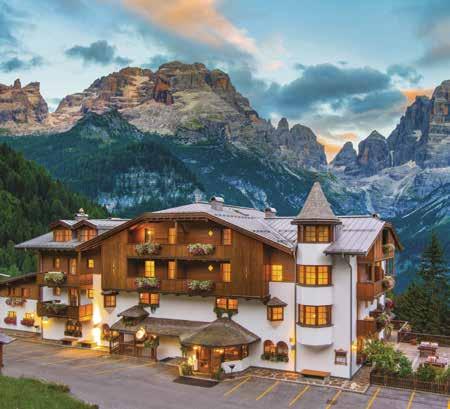
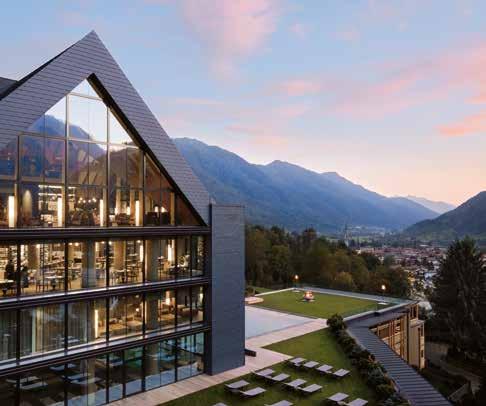
tra il prezzo e l’esperienza offerta. Soggiorni e visite anonime da parte del team di selezionatori, come da prassi Michelin, sono state effettuate anche in Val Rendena dove le prestigiose Chiavi sono state rispettivamente assegnate al Bio Hotel Hermitage di Madonna di Campiglio (1 Chiave) e al Lefay Resort & SPA Dolomiti di Pinzolo (2 Chiavi). Il primo, hotel di lunga tradizione fatto crescere dalla famiglia Maffei che lo ha trasformato in uno dei primi hotel delle Alpi costruito in bioarchitettura, può ora vantare, accanto alla Stella Michelin per il ristorante Stube Hermitage, anche la Chiave Michelin che indica “un soggiorno speciale in strutture con carattere e personalità propri. Può rompere gli schemi, offrire qualcosa di diverso o semplicemente essere uno dei migliori del suo genere. Il servizio è sempre all’altezza e offre molto di più rispetto a strutture di prezzo simile”. Il secondo, hotel 5 stelle lusso molto attento alla sostenibilità e
dotato di una SPA di oltre 5.000 mq, ha ricevuto 2 Chiavi Michelin che indicano “un soggiorno eccezionale in un luogo straordinario sotto ogni punto di vista, che regala un’esperienza memorabile. Un hotel di carattere, personalità e fascino, gestito con passione e notevole cura. Il design o l’architettura di pregio e un legame forte con il territorio in cui si trova sono gli ingredienti per un soggiorno eccezionale”.
Prima dell’Italia le Chiavi sono state annunciate in Francia, Stati Uniti e Spagna. Dopo il Bel Paese giungeranno in Giappone e via via in altri paesi.
Che le Chiavi Michelin, simbolo di eccellenza, siano arrivate nell’ambito turistico Madonna di Campiglio, affiancando le quattro Stelle che attualmente brillano sui ristoranti Il Gallo Cedrone, Stube Hermitage, Dolomieu e Grual, è un buon segnale, anzi un ottimo segnale, indicativo dell’alta qualità presente nell’ospitalità del territorio.

LE CHIAVI MICHELIN 2024 IN ITALIA THE MICHELIN KEYS 2024 IN ITALY
146 STRUTTURE RICETTIVE ACCOMMODATION FACILITIES
8 TRE CHIAVI MICHELIN THREE MICHELIN KEYS
31 DUE CHIAVI MICHELIN TWO MICHELIN KEYS
107 UNA CHIAVE MICHELIN ONE MICHELIN KEYS
5.000 GLI HOTEL CONSIGLIATI IN TUTTO IL MONDO HOTELS RECOMMENDED WORLDWIDE
The new Michelin guide hospitality award has honoured two hotels in the area. The Lefay Resort & SPA Dolomiti received 2 Keys and the Bio Hotel Hermitage 1 Key.
The renowned Michelin Red Guide, which awards the world’s best restaurants with its famous Stars, has expanded its range of awards.
In May 2024, it made the first selection of Michelin Keys for Italy, a new award to celebrate excellence among the country’s top hotels and accommodation facilities.This is a further development of the traditional Michelin Guide, which until recently focused only on the quality of the cuisine. Restaurants were actually rewarded, even though the first hotel selections appeared in European and Asian guides from the 1920s onwards. Then, four years ago, the aim of offering users of the Michelin
Guide a complete travel experience led to a general rethink, resulting in a list of over 5,000 selected hotels worldwide. Within this, an even more rigorous selection of excellences was drawn up, which can be awarded one, two or three Keys, symbolising design, architecture, service and personality. There are five universal criteria for selecting hotels and awarding Michelin Keys: excellence in architecture and design; quality and reliability of service; personality and character; relevance of the establishment to the locality in which it is situated; a good match between the price and the experience offered.
In line with Michelin’s practice, anonymous stays and visits by the selection team were also carried out in Val Rendena, where the prestigious Keys were awarded to the Bio Hotel Hermitage in Madonna di Campiglio (1 Key) and the Lefay Resort & SPA Dolomiti in Pinzolo (2 Keys). The former, a hotel with a long tradition, has been developed by the Maffei family into one of the first hotels in the Alps to be built using bio-architecture, and can now boast not only the Michelin Star for its Stube Hermitage restaurant, but also the Michelin Key, which indicates “a special stay in establishments with their own character and personality. It can break the mould, offer something new or simply be one of the best in its field. The service is always up to the mark and offers a lot more than other accomodation facilities of a similar price range.” The latter is a 5-star luxury hotel with a strong focus on sustainability and a 5,000+ square metre SPA. It
received two Michelin Keys, indicating an “amazing stay in a place that is extraordinary in every respect and offers a memorable experience. A hotel with character, personality and charm, run with passion and remarkable care. Fine design and architecture, along with a strong link with the area in which it is located are the ingredients for an exceptional stay.”
Before Italy, the Keys were announced in France, the United States and Spain. After the Bel Paese, they will be heading to Japan and then gradually to other countries. It’s a great sign that the Michelin Keys, a symbol of excellence, have arrived in the Madonna di Campiglio tourist area, right alongside the three Stars currently shining on the Il Gallo Cedrone, Stube Hermitage and Dolomieu restaurants. It shows that the area’s hospitality is of the highest quality.

Erano gli anni ‘60, il visionario principe Karim Aga Khan aveva avviato il processo di costruzione di Porto Cervo e progressivamente la lottizzazione dei terreni acquistati da lui e dai suoi partner nell’impresa di creare una nuova destinazione turistica per alcune migliaia di fortunati che avrebbero potuto permettersi l’acquisto delle lussuose ville del suo progetto denominato Costa Smeralda®. Un nome, questo, che definiva appunto il progetto, non il luogo, ma che è stato poi erroneamente utilizzato in maniera sommaria per indicare l’area privata in cui sarebbero sorte le proprietà da edificare. A quell’epoca, intorno a Porto Cervo, non esisteva praticamente nulla, se non qualche casa rurale rimasta invenduta e quindi non si rischiavano fraintendimenti nel definire Costa Smeralda® il comprensorio costruito
ALTAGAMMA: INSIEME A MADONNA DI CAMPIGLIO, E AD ALTRI PRESTIGIOSI BRAND.
dall’Aga Khan e suoi soci, poiché erano le uniche nuove costruzioni visibili e riconoscibili nel raggio di decine e decine di chilometri. Nella realtà dei fatti il nome e l’icona del logo Costa Smeralda® sono diritti di marchio d’impresa registrati dal Consorzio Costa Smeralda nel 1963 e poi passati in capo alla sua società operativa, la Servizi
Consortili Costa Smeralda, che gestisce anche le eventuali concessioni di licensing del marchio. Il testo descrittivo dell’ambito di competenza dei marchi recava la seguente didascalia: “attività consistenti in prestazioni a favore o in conto terzi, nel campo delle costruzioni di impianti, strade, edifici, ponti e simili”, perché inizialmente il
Consorzio Costa Smeralda e il suo marchio avevano la funzione di rappresentare, costruire, gestire e commercializzare ogni aspetto che riguardasse il progetto. Dopo aver completato

le costruzioni, Il Consorzio Costa Smeralda rimodulò il suo ruolo con l’erogazione di servizi di alta qualità dedicati esclusivamente ai suoi consorziati e alla preservazione del territorio da loro abitato. E il marchio Costa Smeralda® rappresenta il simbolo di questa esclusività, non un’area geografica. Nei decenni successivi le zone limitrofe alle proprietà associate al Consorzio Costa Smeralda si sono sviluppate proprio grazie all’indotto generato dalle strutture ricettive di lusso Costa Smeralda® fino a diventare anch’esse destinazioni turistiche ma rimanendo sempre al di fuori dall’area consortile. diversi tentativi di uso non autorizzato del marchio, punibile per legge, per millantare l’esclusività Costa Smeralda®, da parte di strutture e servizi non appartenenti al Consorzio, hanno reso necessario ribadire e chiarire, anche attraverso azioni
legali, non solo che quest’ultimo sia un marchio registrato e non un toponimo liberamente utilizzabile ma anche che esso qualifichi unicamente gli associati al Consorzio Costa Smeralda identificabili per lo stile architettonico, per l’alta qualità dei servizi dei consorziati privati e per quelli erogati dal Consorzio Costa Smeralda. Non esistendo dei precisi confini territoriali, ma solo delle unità abitative definite, non è possibile affermare che una determinata villa si trovi “in” Costa Smeralda® ma si può attestare che quella villa sia una struttura Costa Smeralda® riferendosi ai suoi canoni estetici e all’appartenenza al Consorzio Costa Smeralda.
It was the 1960s, and Prince Karim Aga Khan had started building Porto Cervo and gradually dividing up the land he and his partners had bought to create a new tourist destination for a few thousand lucky people who could afford to buy the luxurious villas in his project, called Costa Smeralda®. A name that defined the project, not the place, but which was then mistakenly used to refer to the private area where the properties to be built would be located. At that time there was practically nothing around Porto Cervo, except for a few unsold country houses, so there was no risk of misunderstanding the Costa Smeralda® as the area
built by the Aga Khan and his associates, since they were the only new buildings visible and recognisable for dozens and dozens of kilometres. In fact, the name Costa Smeralda® and the Costa Smeralda® logo are trademarks registered by the Costa Smeralda Consortium in 1963 and then transferred to its operating company, Servizi Consortili Costa Smeralda, which also manages any licensing of the trademark. The text describing what the trademarks could do said: ‘services for or on behalf of third parties, in the field of the construction of plants, roads, buildings, bridges and the like’. This was because initially the
Costa Smeralda Consortium and its trademarks were meant to represent, construct, manage and market every part of the project. Once construction was done, the Costa Smeralda Consortium changed its focus to providing top-quality services for its members and helping to look after the area they live in.
The Costa Smeralda® brand represents exclusivity, not a geographical area. Over the next few decades, the areas around the properties linked to the Costa Smeralda® Consortium really started to develop. This was thanks to the Costa Smeralda® luxury accommodation facilities, which created a lot of business for the local area. In fact, these areas became tourist destinations in their own right, but they stayed outside the consortium area. The various attempts by structures and services not belonging to the Consortium to use the


Travelling among the excellence of Fondazione Altagamma: along with Madonna di Campiglio and other prestigious brands, there is also Costa Smeralda®.
Costa Smeralda® trademark without authorisation, which is punishable by law, to boast Costa Smeralda® exclusivity, have made it necessary to reiterate and clarify, also through legal action, that the Costa Smeralda® trademark is a registered trademark and not a freely usable toponym, and that it only qualifies the members of the Costa Smeralda Consortium, who are identifiable by the architectural style, the high quality of the services provided by the private members of the Consortium and those provided by the Costa Smeralda Consortium. As there are no exact borders, but only defined areas, we cannot say that a villa is ‘in’ Costa Smeralda®. What we can say is that it is a Costa Smeralda® property because of its style and because it is part of the Costa Smeralda Consortium.
di/by VALENTINA BELLOTTI
APT GARDA DOLOMITI
LA LUNGA STAGIONE SUL GARDA TRENTINO PROPONE NUMEROSE ATTIVITÀ SPORTIVE ALL’ARIA APERTA UNENDO TRADIZIONE MONTANA E SPIRITO LATINO.
C’è un angolo di Trentino diverso da tutti gli altri. Più mite, meno “montano”, dove la bella stagione inizia presto e sembra non voler finire mai. Qui il Lago di Garda, il più grande specchio d’acqua dolce italiano, s’incunea tra monti e dà vita a un paesaggio senza pari, a metà tra un fiordo nordico e un golfo mediterraneo. E questa sintesi inedita di carattere montano e dolcezza del sud caratterizza ogni aspetto del Garda Trentino. Qui il vivere all’aria aperta praticando sport è un mantra condiviso da locals e dai tanti ospiti che scelgono suoi sentieri, le sue pareti rocciose, i suoi specchi d’acqua per mantenersi attivi e, perché no, mettersi alla prova con discipline diversissime tra loro. Per esempio, al mattino via di SUP o kayak sul grande lago e, nel pomeriggio, una via ferrata o qualche tiro in parete. Oppure un trekking panoramico in giornata e, verso sera, una pedalata in ciclabile. O, ancora, un canyoning super adrenalinico seguito da un’uscita in barca a vela al tramonto.
Senza dimenticare le pause rilassanti in spiaggia, una gita alla scoperta dei borghi e dei castelli
che punteggiano il territorio e, naturalmente, le soste golose. Del resto, in una regione di contrasti che s’incontrano, anche la gastronomia non può essere che un mix originale di prodotti montani e profumi da riviera. Siamo nella zona tradizionale di coltivazione degli olivi e della produzione di olio extravergine d’oliva più a nord del mondo, ma alle spalle c’è una storia con radici mitteleuropee. Per questo, nel piatto si trovano pietanze a base di pesce che ricordano la cucina veneziana (per esempio, trota en saor e bigoi con le sarde), ma anche carne salada, canederli, selvaggina, polenta… e perfino gnocchi boemi. È proprio questa attitudine che mescola piglio sportivo e anima mediterranea, tradizione montana e spirito latino a fare del Garda Trentino una regione tutta da esplorare e da scoprire, lasciandosi sorprendere in ogni stagione. È questo l’Italian Outdoor, da vivere in ogni sua declinazione dalle sponde del Lago di Garda alle Dolomiti di Brenta, passando per Ledro, Comano, Valle dei Laghi e Val di Gresta.
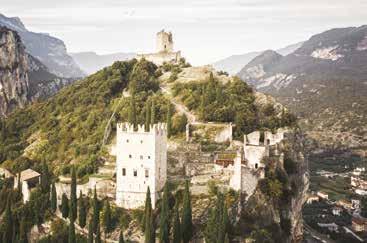
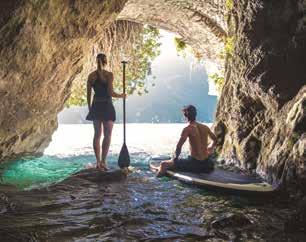
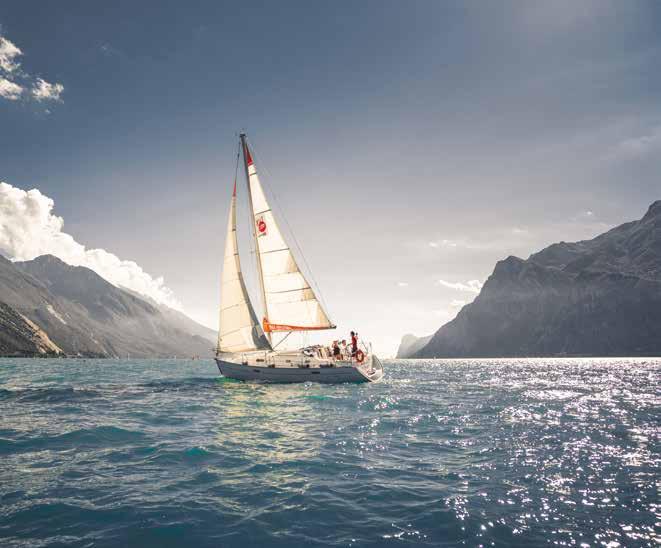
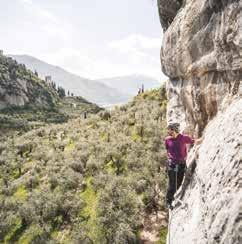
There is a corner of Trentino that is different from all the others. It is milder, less “mountainous”, where the summer season begins early and never seems to end. Here, Lake Garda - the largest body of freshwater in Italy - is wedged between the mountains, creating a unique landscape halfway between a Nordic fjord and a Mediterranean gulf.
And it is this unprecedented synthesis of mountain character and southern gentleness that characterises every aspect of Garda Trentino. Here, living in the open air and practising sport is a mantra shared by the locals and the many visitors who choose its paths, cliffs and waters to keep active and, why not,
SCEGLI L’ITALIAN OUTDOOR
AL PREZZO MIGLIORE DEL WEB!
Prenota subito la tua vacanza nel Garda Trentino con la Best Price Guarantee su: gardatrentino.it ti offriamo il prezzo migliore disponibile online. E in più:
• Puoi scegliere tra +400 strutture verificate
• hai la Garda Guest Card inclusa (con +100 vantaggi esclusivi)
• risparmi: zero commissioni
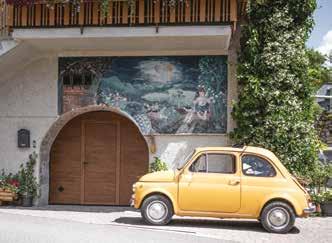
test themselves in a variety of disciplines. For instance, you could go SUP or kayaking on the lake in the morning and then try a via ferrata or some wall climbing in the afternoon.
Or alternatively, plan a scenic day hike followed by an evening bike ride. Or again, an adrenaline-pumping canyoning trip followed by a sunset sail.
Not to mention relaxing breaks on the beach, trips to discover the villages and castles that dot the area and, of course, delicious gourmet stops.
After all, in a region dominated by contrasts, even local food is a unique blend of mountain produce and riviera flavours.
We are in the northernmost traditional olive growing and extra virgin olive oil producing area in the world, but our
history also boasts Central European roots. This means you will find fish dishes reminiscent of Venetian cuisine (such as trout en saor and bigoli with sardines), as well as carne salada (salted meat), canederli (local dumplings), game, polenta... and even Bohemian dumplings.
It’s this attitude that makes Garda Trentino such a great place to explore and discover. It has got a bit of sporting flair, a touch of Mediterranean soul, mountain tradition and Latin spirit. You can experience it all year round. This is Italian Outdoor at its best, with something for everyone, from the shores of Lake Garda to the Brenta Dolomites, with stops in Ledro, Comano, Valle dei Laghi and Val di Gresta along the way.
Book your holiday in Garda Trentino with the Best Price Guarantee on gardatrentino.it We’ll find you the best price available online. Plus:
• You can choose from +400 approved facilities
• The Garda Guest Card is included (with +100 exclusive benefits)
• You save: zero commissions
• Prenota subito la tua vacanza nel Garda Trentino a un prezzo imbattibile CHOOSE ITALIAN OUTDOOR AT THE BEST PRICE ONLINE!

• Book now your holiday in Garda Trentino at the best price gardatrentino.it/accomodation
di/by PAOLO MARZOLA
IL FILM
VERMIGLIO, AMBIENTATO NEL PAESE
DELLA VAL DI SOLE, HA
VINTO IL LEONE
D’ARGENTOGRAN PREMIO
DELLA GIURIA A VENEZIA.
THE FILM VERMIGLIO, SET IN THE VILLAGE OF VAL DI SOLE, WON THE SILVER LION - GRAND
JURY PRIZE IN VENICE.
Vincitore del Leone d’argento alla 81a Mostra internazionale d’arte cinematografica di Venezia, scritto e diretto dalla regista bolzanina Maura Delpero, “Vermiglio” racconta la vita di un paese di montagna trentino, Vermiglio, appunto, nelle quattro stagioni dell’ultimo anno della seconda guerra mondiale. Le vicende sono quelle della famiglia Graziadei ritratta nella fissità delle consuetudini codificate dalla tradizione ma anche nella singolarità di ciascun personaggio. Lucia, Ada e Flavia sono le tre figlie femmine della famiglia nella

quale ci sono state dieci nascite, alcune delle quali conclusesi anzitempo, come accadeva nell’Italia povera di allora. Il capofamiglia è maestro elementare e la cultura, per pochi, appare come un rifugio dalla durezza della quotidianità. Con l’arrivo di un soldato siciliano, disertore dell’esercito, ospitato dalla famiglia Graziadei, inizia una serie di drammi che i personaggi affrontano scoprendo se stessi lungo il travagliato percorso verso la maturità. “Vermiglio - scrive la critica cinematografica Paola Casella - è l’opera seconda di Maura Delpero, dopo il suo notevole debutto con Maternal, e dà già prova di una sorprendente maturità espressiva che affonda le sue radici nel cinema di Ermanno Olmi, ma ancor di più in una realtà osservata con grande attenzione e restituita con commovente naturalezza”. Il film rappresenterà l’Italia ai premi Oscar 2025 nella corsa alla statuetta per il miglior film internazionale.
regia director Maura Delpero
Vermiglio
Tommaso Ragno, abitanti inhabitants di Vermiglio paese country Italia, Francia, Belgio 120 minuti minutes
Winner of the Silver Lion at the 81st Venice International Film Festival, Vermiglio, written and directed by Bolzano-born director Maura Delpero, depicts the life in the Trentino mountain village Vermiglio during the four seasons of the last year of World War II. The story centres on the Graziadei family, portrayed both in the stillness of traditions and in the unique traits of each character. Lucia, Ada, and Flavia are the three daughters in a family that experienced ten births, some ending prematurely, as was common in Italy’s poverty-stricken era. The head of the family is a primary school teacher, and education, a privilege for the few, becomes a refuge from the hardships of daily life. The arrival of a Sicilian soldier, a deserter taken in by the Graziadei family, sets off a series of personal dramas through which the characters discover themselves in their troubled journey to maturity. “Vermiglio”, writes film critic Paola Casella, “is Maura Delpero’s second work, following her notable debut with Maternal, and it already demonstrates a remarkable expressive maturity rooted in the cinema of Ermanno Olmi, but even more so in a reality observed attentively and portrayed with moving naturalness”. The film will represent Italy at the 2025 Academy Awards in the race for Best International Feature Film.
paese country Italia, Germania 90 minuti minutes
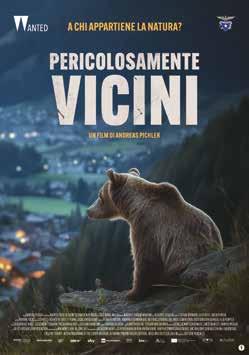
Nel documentario di Andreas Pichler ci sono le informazioni del reportage e le emozioni del film. Indagando in modo molto approfondito il fragile equilibrio tra uomo e natura, il documentario dà voce a tutte le parti coinvolte nella sempre più complessa possibilità di co-esistenza tra persone e orsi, presenti in Trentino dall’inizio degli anni Duemila. C’è la famiglia Papi, che apre e chiude il film, ci sono forestali e ci sono i veterinari della Provincia autonoma di Trento, ai quali appartiene una straordinaria conoscenza degli orsi e dei loro comportamenti, c’è la comunità locale e ci sono gli allevatori, ci sono rappresentanti della parte politica e ci sono portavoce delle associazioni animaliste. Il film, che restituisce una versione attuale e dettagliata della vicenda orso, è stato trasmesso nelle sale cinematografiche e su Rai3. È ora visibile su www.raiplay.it.
In Andreas Pichler’s documentary, the information of reportage meets the emotions of cinema. By thoroughly investigating the fragile balance between humans and nature, the documentary gives voice to all parties involved in the increasingly complex possibility of co-existence between people and bears, present in Trentino since the early 2000s. There’s the Papi family, who opens and closes the film. Then there are forest rangers and veterinarians from the Autonomous Province of Trento, who have an extraordinary understanding of bears and their behaviour.
The local community, farmers, political representatives, and animal rights advocates all appear. The film, which offers an up-to-date and detailed perspective on the bear issue, has been shown in cinemas and broadcast on Rai3. It is now available on www.raiplay.it.”

“Free Solo”, prodotto dal National Geographic, non è solamente un film di sport, ma offre uno sguardo intimo sulla vita di Alex Honnold, arrampicatore e alpinista statunitense, le sue motivazioni e le sue paure. La pellicola esplora il rischio estremo che affronta e come le sue scelte influenzano anche le persone a lui vicine.
In particolare, il documentario ripercorre la storica scalata in free solo sulla parete di El Capitan, nel Parco nazionale dello Yosemite.
Le immagini mozzafiato della scalata, riprese con tecnologie all’avanguardia, rendono il film visivamente sbalorditivo, portando gli spettatori in un viaggio emozionante e teso. Il mix di adrenalina, bellezza naturale e vulnerabilità umana rende “Free Solo” un’esperienza imperdibile per chi ama racconti di sfide personali e conquista.
“Free Solo”, produced by National Geographic, is not just a sports film; it offers an intimate look into the life of American climber and mountaineer Alex Honnold, his motivations, and his fears. The film explores the extreme risks he faces and how his choices also impact those close to him. Specifically, the documentary retraces his historic free solo climb of El Capitan in Yosemite National Park. The breathtaking images of the climb, captured with cutting-edge technology, make the film visually stunning, taking viewers on a thrilling and tense journey. The blend of adrenaline, natural beauty, and human vulnerability makes “Free Solo” an unmissable experience for those who love stories of personal challenges and triumphs. regia
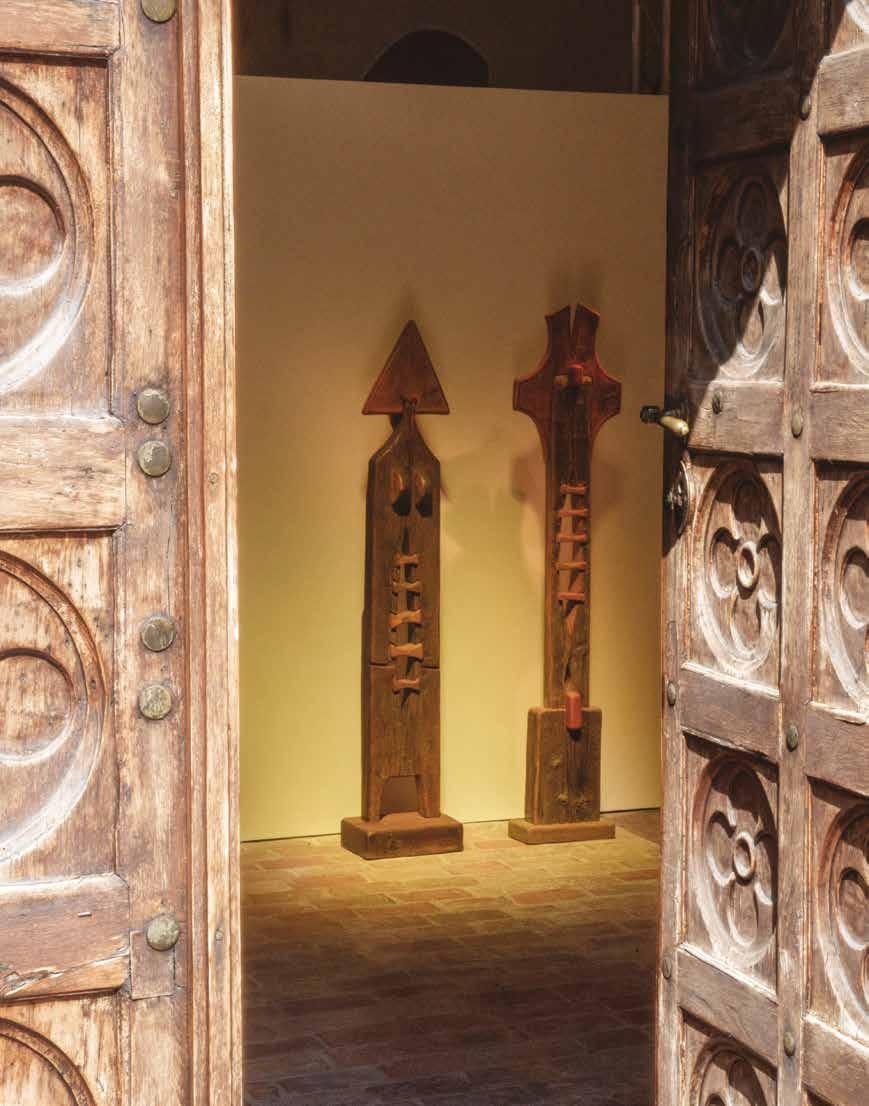
IL MONDO SIMBOLICO DI ADOLF VALLAZZA IN MOSTRA PRESSO LA CHIESA BAROCCA DI SAN BARNABA, SEMPRE DI PIÙ LUOGO D’INCONTRO TRA ARTE E TERRITORIO.
THE BAROQUE CHURCH OF SAN BARNABA, INCREASINGLY A MEETING POINT BETWEEN ART AND TERRITORY, HOUSES THE SYMBOLIC WORLD OF ADOLF VALLAZZA.
a cura della REDAZIONE /by the EDITORIAL STAFF
Lachiesa di San Barnaba a Bondo, nel Comune di Sella Giudicarie, ha confermato la sua proposta culturale estiva sottolineando, nel segno dell’arte, la sua crescente importanza quale polo culturale e spazio di riferimento per la valorizzazione di artisti di primo piano. L’ultimo, in ordine di tempo, ad essere ospitato nella chiesa barocca, è stato lo scultore di Ortisei, in Val Gardena, Adolf Vallazza, con la mostra “Sacro, profano” inaugurata il 20 luglio 2024 e visitabile fino all’ultimo fine settimana di settembre. L’iniziativa, voluta dal Comune di Sella Giudicarie, è stata realizzata in collaborazione con l’Archivio Vallazza e Galassia Mart che, attraverso questa alleanza con il territorio, ha dato concretezza alla funzione pubblica del Mart quale ente di conservazione e valorizzazione di un patrimonio comune.
The Church of San Barnaba in Bondo, in the municipality of Sella Giudicarie, has confirmed its summer cultural programme underlining, in the name of art, its growing importance as a cultural hub and reference space for the valorization of leading artists. The most recent artist to be hosted in the Baroque church was Adolf Vallazza, a sculptor from Ortisei in Val Gardena. His exhibition, entitled “Sacro, profano”, opened on 20th July 2024 until the last weekend of September. The initiative, which was desired by the municipality of Sella Giudicarie, was realised in collaboration with the Archivio Vallazza and Galassia Mart. This alliance with the territory gave concrete form to the public function of the Mart as an institution for the conservation and enhancement of a shared heritage.
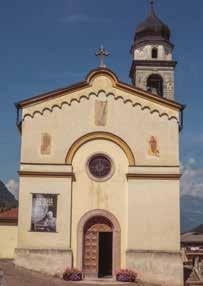

Conclusa la trilogia dedicata ai settecento anni dalla morte di Dante Alighieri con le mostre di Fabio Bucciarelli (2021), Willy Verginer (2022) e Mauro Cappelletti (2023), Roberta Bonazza, curatrice delle esposizioni proposte a San Barnaba, è tornata a lasciarsi ispirare dai misteri della montagna e del bosco, accendendo l’attenzione sul mondo ancestrale e simbolico dell’artista di Ortisei. In Val Gardena, dove la scultura con il legno appartiene alla gente del posto da secoli, Adolf Vallazza ha tracciato una sua via facendo incontrare tradizione e contemporaneità: totem, menhir e troni scolpiti nel legno vecchio di anni o secoli, spesso recuperato dalle antiche case contadine dell’Alto Adige, hanno le forme dell’arte contemporanea e allo stesso tempo richiamano gli antichi miti e simboli delle
tradizioni . Il legno, materia della natura, racconta, ancora prima di assumere la forma che gli dà l’artista, la storia del luogo al quale appartiene attraverso le venature, nodi, cerchi e il colore che gli conferiscono le essenze dal quale proviene e il tempo.
“Il tema sacro, profano scelto per la mostra allestita nella seicentesca chiesa di Bondospiega la curatrice della mostra Roberta Bonazza - si realizza all’unisono tenendo insieme, nel gioco delle posture e degli incastri, forme di un arcaismo montanaro e di una sacralità raffinata. È il dipanarsi di un linguaggio che nel percorso dalla navata all’altare si fa grammatica senza cesure, sacroprofano in un’unica parola che campeggia sul fondale delle nostre esistenze.”
“Tutto ha inizio dal ciclo vitale dell’albero - prosegue Bonazza - che mette a disposizione il suo duraturo apparato scheletrico
per essere reso di nuovo morbido alle carezze e significativo allo sguardo. Il rinnovato ciclo del legno è tradotto in realtà di forma dall’arte scultorea di Adolf Vallazza nel tentativo di eternare ciò che l’umano crea per lasciare traccia del proprio sentire. Lo scultore gardenese onora le diverse stagioni degli alberi aggiungendo, nella sua coraggiosa esplorazione del materiale ligneo, la stagione a noi più vicina, più intima, più domestica, ovvero quella del legno vecchio recuperato da masi o da fienili dismessi.”
Lo scultore di Ortisei ha compiuto 100 anni il 22 settembre mentre era in corso la mostra di Bondo. Un traguardo invidiabile, lo scoccare del secolo di vita, e un’occasione per confermare l’immutato interesse per un percorso ancora prolifico.
“La voglia di fare arte - ha dichiarato Adolf Vallazza - è viva perché sta dentro di me, mentre le idee, i temi e le motivazioni nascono negli anni, con il tempo, osservando il mondo che è un posto meraviglioso”. Tantissime le mostre che lo hanno portato, nel corso della sua vita, in giro per il mondo. Non chiuso tra le mura verdi della valle, ma aperto con numerosissime mostre proposte che lo portano a conoscere, ad esempio, il regista Ermanno Olmi, il direttore artistico dell’Olivetti (e futuro direttore di Palazzo Grassi) Paolo Viti, lo scrittore, poeta e scenografo Tonino Guerra
La seconda monografia su Adolf Vallazza esce nel 1984 con la copertina curata da Bruno Munari
Le sue opere sono oggi presenti in numerose collezioni tra le quali il Tiroler Landesmuseum Ferdinandeum a Innsbruck, il Museo Civico e il MuseionMuseo provinciale d’arte moderna e contemporanea a Bolzano, la GAM-Galleria civica d’arte moderna e contemporanea
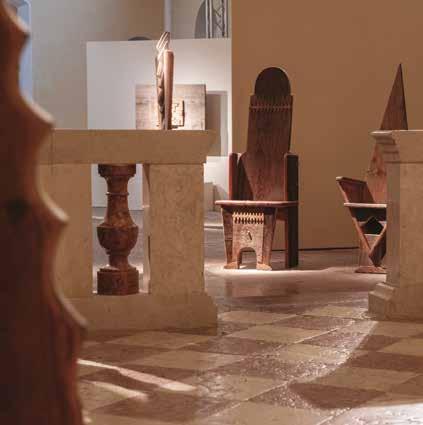
a Torino, Arte Sella-The Contemporary Mountain in Valle di Sella (Trentino), il Museo del Novecento a Milano e il MART-Museo di arte moderna e contemporanea di Trento e Rovereto.
Per chi desiderasse conoscere qualcosa di più su questo scultore, si possono leggere numerosi cataloghi e monografie: da “I legni di Vallazza” con testo di Giuseppe Marchiori e foto di Gianni Berengo Gardin (Venezia, 1974) passando per il testo di Aldo Gorfer “Adolf Vallazza: una storia dell’anima gardenese” (Quaderno di cultura alpina, Priuli & Verlucca editore, Ivrea 1996) fino al più recente catalogo “Adolf Vallazza. Sacro, profano” curato da Roberta Bonazza in occasione della recente esposizione in Trentino. Numerose informazioni sono disponibili anche sul sito web dell’artista: www.adolfvallazza.com.
Adolf Vallazza ha tracciato una sua via facendo incontrare tradizione e contemporaneità.
Adolf Vallazza has forged his own path by combining tradition an contemporary influences.
After completing the trilogy dedicated to the seven hundredth anniversary of the death of Dante Alighieri with the exhibitions of Fabio Bucciarelli (2021), Willy Verginer (2022) and Mauro Cappelletti (2023), Roberta Bonazza, curator of the exhibitions proposed at San Barnaba, has returned to be inspired by the mysteries of the mountain and the forest, turning her attention to the ancestral and symbolic world of the artist from Ortisei. In Val Gardena, where the craft of wood sculpture has been practised by the local population for centuries, Adolf Vallazza has forged his own path by combining tradition and contemporary influences: the totem poles, menhirs and thrones carved from
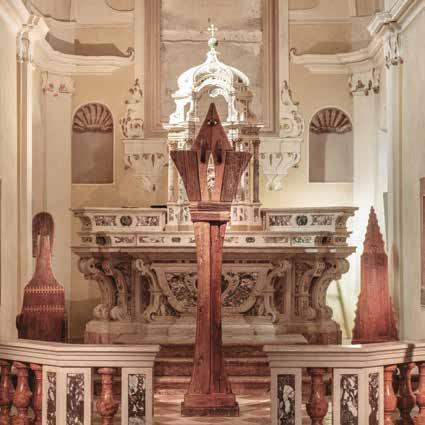
wood that is years or centuries old, often salvaged from old South Tyrolean farmhouses, have the forms of contemporary art while simultaneously evoking ancient myths and symbols of the imagination. Wood, the material of nature, even before it takes the form given to it by the artist, tells the story of the place to which it belongs through the grains, knots, circles and colours given to it by the essence from which it comes and by time.
“The Sacred, profane theme chosen for the exhibition set up in the 17th-century church of Bondo - explains exhibition curator Roberta Bonazza - is realised in unison, holding together forms of a mountain archaism and a refined sacredness in the play of postures and joints. It is the unravelling of a language that, in the path from the nave to the altar, becomes a grammar without pauses, sacredprofane in a single word that is particularly noteworthy in the context of our existences.
“Everything begins with the life cycle of the tree - Bonazza continueswhich makes its sturdy skeleton available to be caressed again and made meaningful to the eye. The renewed cycle of wood is translated into reality of form by the sculptural art of Adolf Vallazza, in an attempt to perpetuate what man creates in order to leave a trace of his feelings. The Val Gardenabased artist pays homage to the changing seasons of trees through his bold exploration of wooden materials, focusing on the season closest to us, more intimate, more domestic: old wood recovered from farms or disused barns.”
On 22nd September, during the Bondo exhibition, the Ortisei sculptor turned 100. An enviable goal, the turn of the century, and an opportunity to confirm the unbroken interest in a still prolific career. The desire to make art” - says Adolf Vallazza - is alive because it is inside me, while the ideas, themes and motivations come over the years, with time, observing the world, which is a wonderful place”.
So many exhibitions have taken him all over the world throughout his life. Not closed within the green walls of the valley, but open to the world with numerous exhibitions that allowed him to meet, for example, film director Ermanno Olmi Olivetti’s artistic director (and future director of Palazzo Grassi) Paolo Viti writer, poet and stage designer Tonino Guerra. The second monograph on Adolf Vallazza was published in 1984, with a cover by Bruno Munari His work is now featured in many collections, including the Tiroler Landesmuseum Ferdinandeum in Innsbruck, the Civic Museum and Museion - Museum of Modern and Contemporary Art in Bolzano, the GAM- Civic Gallery of Modern and Contemporary Art in Turin, Arte Sella - The Contemporary Mountain in Valle di Sella (Trentino), the Museo del Novecento in Milan and the MART (Museum of Modern and Contemporary Art of Trento and Rovereto). If you want to know more about this sculptor, you can read lots of catalogues and monographs. These include “I legni di Vallazza” with text by Giuseppe Marchiori and photos by Gianni Berengo Gardin (Venice, 1974), Aldo Gorfer’s “Adolf Vallazza: una storia dell’anima gardenese” (Quaderno di cultura alpina, Priuli & Verlucca editore, Ivrea 1996) and the more recent catalogue “Adolf Vallazza. Sacro, profano”, edited by Roberta Bonazza for the recent exhibition in Trentino. A lot of information is also available on the artist’s website www.adolfvallazza.com.
La 3Tre continua ad emozionare e a far sognare. The 3Tre continues to thrill people and make them dream.
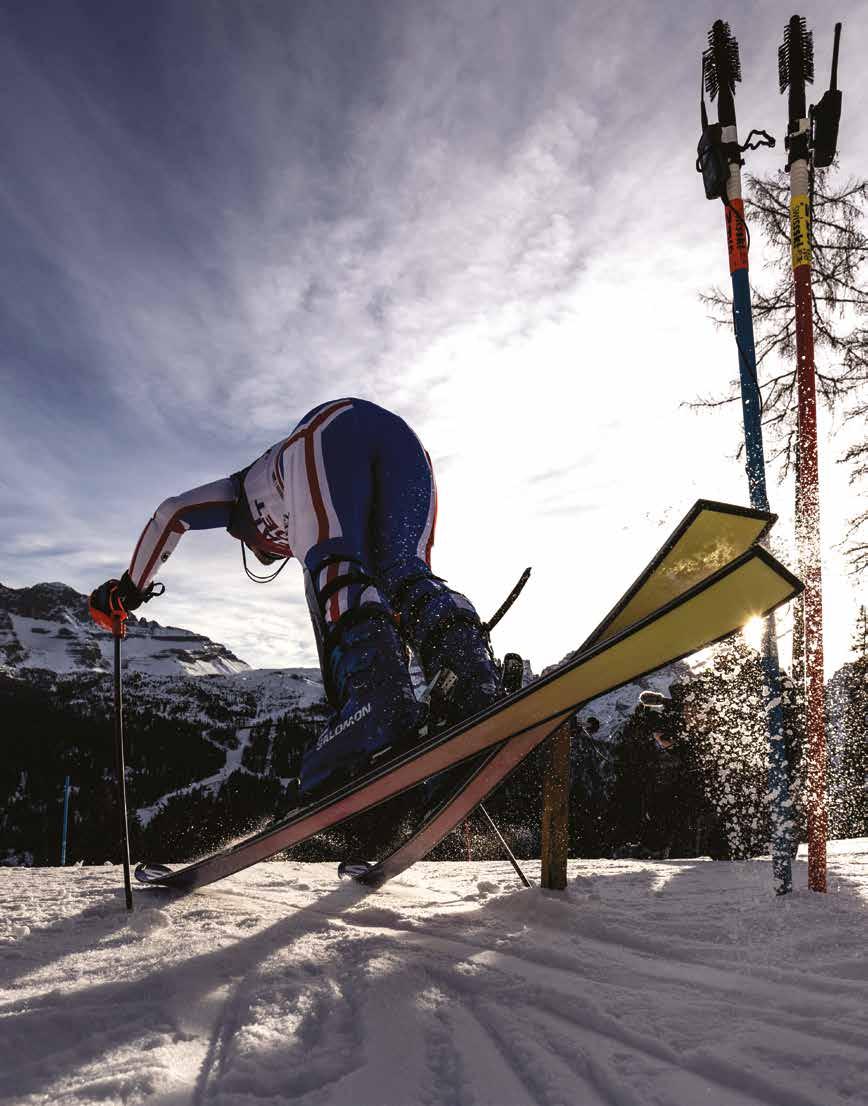
L’ATTESISSIMO SLALOM NOTTURNO DI MADONNA DI CAMPIGLIO RITORNA L’8 GENNAIO 2025, INAUGURANDO IL NUOVO ANNO COME PRIMA GARA MASCHILE DI COPPA DEL MONDO.
Questa data rappresenta un appuntamento chiave nella stagione, con la 3Tre che chiude il ricco calendario di competizioni italiane e anticipa altre grandi classiche come Adelboden, Wengen, Kitzbühel e Schladming.
La scorsa edizione, la settantesima, ha regalato momenti indimenticabili, celebrando un importante traguardo e accogliendo tanti protagonisti che hanno contribuito a fare la storia dell’evento.
Con la partecipazione di 15.200 spettatori, l’atmosfera è stata davvero elettrizzante: il pubblico ha trasformato la gara in una vera festa, animando non solo il teatro di gara del Canalone Miramonti, ma anche l’intera località di Madonna di Campiglio. L’evento ha offerto un programma ricco di intrattenimenti, tra cui il villaggio spettatori, sessioni di autografi e selfie con campioni, la prestigiosa Champions Dinner, ed il 3Tre Party, che ha coronato la magica notte di gara.
Anche quest’anno, la 3Tre promette nuove emozioni e spettacolo per tutti gli appassionati che vorranno vivere dal vivo
The eagerly awaited night slalom at Madonna di Campiglio is back on 8th January 2025 as the first men’s World Cup race of the new year.
This date is a key date in the season, with 3Tre closing the rich calendar of Italian competitions and anticipating other great classics such as Adelboden, Wengen, Kitzbühel and Schladming.
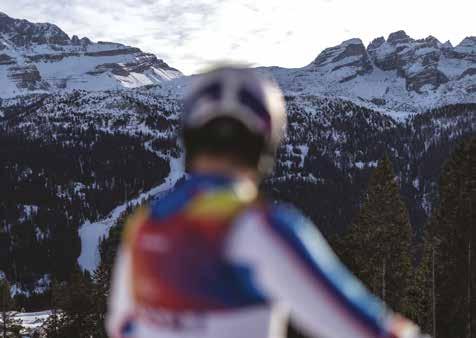
questa manifestazione unica, che riunisce migliori sciatori al mondo. Gli atleti saranno a disposizione del pubblico già dalla presentazione ufficiale che si terrà il giorno prima della gara, nella suggestiva cornice di Piazza Sissi, nel cuore della località. L’intera area sarà animata da musica, intrattenimenti e sorprese che contribuiranno a rendere l’evento ancora più speciale.
L’entusiasmo del pubblico sarà certamente condiviso anche dagli atleti in pista. Lo conferma il britannico Dave Ryding, terzo classificato nell’ultima edizione: “Sono un atleta che si nutre della passione del pubblico, per questo rendo sempre meglio nelle grandi classiche, negli slalom notturni: qui è tutto molto più speciale.”
Un pensiero condiviso anche da Marco Schwarz, vincitore dell’ultima edizione, che ricorda: “Amo l’atmosfera delle gare notturne e vincere una classica come Madonna di Campiglio per me è stato incredibile. “Fu proprio in quella spettacolare serata sulle nostre Dolomiti di Brenta che l’austriaco conquistò il comando provvisorio della classifica di Coppa del Mondo, oltre che la Maglia Fulmine, simbolo del primato alla 3Tre. Quest’anno farà di tutto per essere nuovamente protagonista, nonostante la tempistica del suo rientro dall’infortunio resti incerta.
Anche il campione olimpico Clément Noël ha un conto aperto con la 3Tre. Lo scorso anno era in testa a metà gara, ma ha perso una posizione. Dal secondo gradino del podio, ha confessato: “Questa pista e questi luoghi mi piacciono davvero tanto, ma finora non mi hanno sorriso. La volta precedente in cui ero in testa a Madonna di Campiglio, sono uscito di pista sul finale. Stavolta non posso lamentarmi della seconda piazza, ma posso fare meglio, posso essere più veloce.” Una sfida lanciata che rende ancora più attesa la sua partecipazione quest’anno. Tra protagonisti attesi a sfidarsi nel Night Slalom ci sono anche gli specialisti italiani, guidati da Alex Vinatzer, Tommaso Sala, Tobias Kastlunger e dal trentino Stefano Gross, pronti a dare il
massimo per conquistare l’ambito podio. A dare battaglia ci saranno con loro anche Manuel Feller, Linus Strasser, Timon Haugan e Loïc Meillard, ai primi quattro posti della classifica di specialità 2024, senza dimenticare due campioni che dopo una pausa sono tornati in gara quest’anno, Marcel Hirscher e Lucas Pinheiro Braathen.

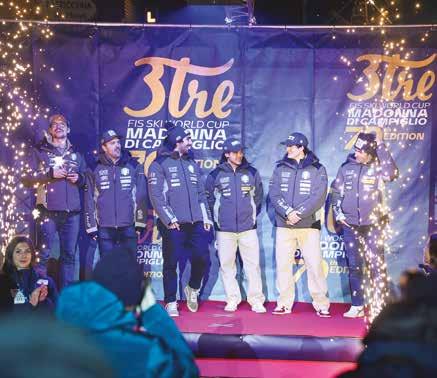
La sfida per il record di vittorie nello slalom della 3Tre rimane aperta. Nonostante quest’anno manterrà il primato di cinque vittorie il leggendario Ingemar Stenmark, tra gli invitati d’onore a questa edizione c’è spazio per nuovi eroi. Lo straordinario eroe di casa, Alberto Tomba, con le sue tre vittorie, potrebbe essere superato da Daniel Yule o Henrik Kristoffersen, entrambi in corsa per ottenere una quarta affermazione nel Night Slalom.
Ma il record che la 3Tre e Madonna di Campiglio vogliono battere è quello di rendere sempre più unica ed indimenticabile l’esperienza di tutti coloro che si troveranno l’8 gennaio a festeggiare questo evento.
The last edition, the 70th, was a real celebration, marking an important milestone and welcoming many of the people who have contributed to the event’s history.
With 15,200 spectators taking part, the atmosphere was amazing: the public made the race a real party, making the Canalone Miramonti race theatre and the whole resort of Madonna di Campiglio buzz. There was a great programme of entertainment, including the spectator village, autograph and selfie sessions with the champions, the prestigious Champions Dinner, and the 3Tre Party, which finished off the magical night of the race.
Once again this year, 3Tre is set to be a

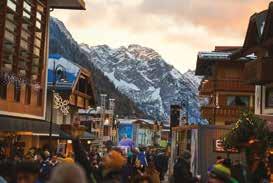
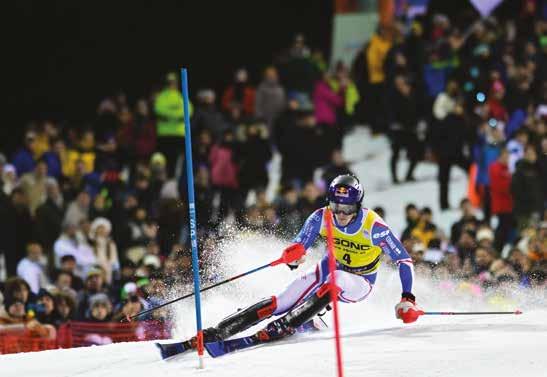
great, emotional and spectacular event for all fans who want to experience this unique event live, which brings together the best skiers in the world.
The athletes will be available to the public from the official presentation the day before the race in the picturesque setting of Piazza Sissi, in the heart of the resort. There will be music, entertainment and surprises all around, making the event even more special.
The athletes on the ski slopes will undoubtedly share the public’s enthusiasm. Dave Ryding, who came third in the last edition, is a great example of this. He says, “I’m an athlete who feeds off the passion of the public, which is
why I always perform better in the big classics, in the night slaloms: everything is much more special here.”
A thought shared by Marco Schwarz, winner of the last edition, who recalls:
“I love the atmosphere of night races and winning a classic like Madonna di Campiglio was incredible for me.”
That spectacular evening in our Brenta Dolomites was when the Austrian took the provisional lead in the World Cup standings, as well as the Maglia Fulmine, which is the symbol of supremacy at 3Tre. He’ll be trying to be a star again this year, but we’re not sure when he’ll be back from injury.
Olympic champion Clément Noël has a score to settle with 3Tre. He was leading after the first run, but ended up losing one position.
From the second step of the podium, he said, “I really like this track and these places, but so far they haven’t been kind to me. The last time I was in the lead at Madonna di Campiglio, I went off the track at the end. This time I can’t complain about second place, but I know I can do better and be faster.” A challenge thrown down that makes his participation this year even more eagerly awaited. We are expecting some strong competition in the Night Slalom, with Italian specialists Alex Vinatzer, Tommaso Sala, Tobias Kastlunger and Stefano Gross from Trentino leading the charge. They’re ready to give it their all to conquer the podium. Also going for the win will be Manuel Feller, Linus Strasser, Timon Haugan and Loïc Meillard, who ended at the top four spots in the 2024 slalom ranking. We can’t forget two champions who have returned to competition this year after a break: Marcel Hirscher and Lucas Pinheiro Braathen.
The challenge for the 3Tre slalom record remains open. Although the legendary Ingemar Stenmark will retain the record of five victories this year, there is room for new heroes among the guests of honour at this edition. The extraordinary Italian home hero, Alberto Tomba, with three victories, could be overtaken by Daniel Yule or Henrik Kristoffersen, both in the running for a fourth victory in the night slalom. But the goal for 3Tre and Madonna di Campiglio is to make the experience of all those celebrating on 8th January even more special and unforgettable.

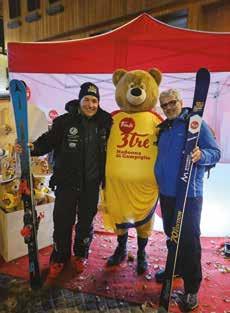

WEDNESDAY 8 MERCOLEDÌ TH
17.45 / Canalone Miramonti PRIMA MANCHE
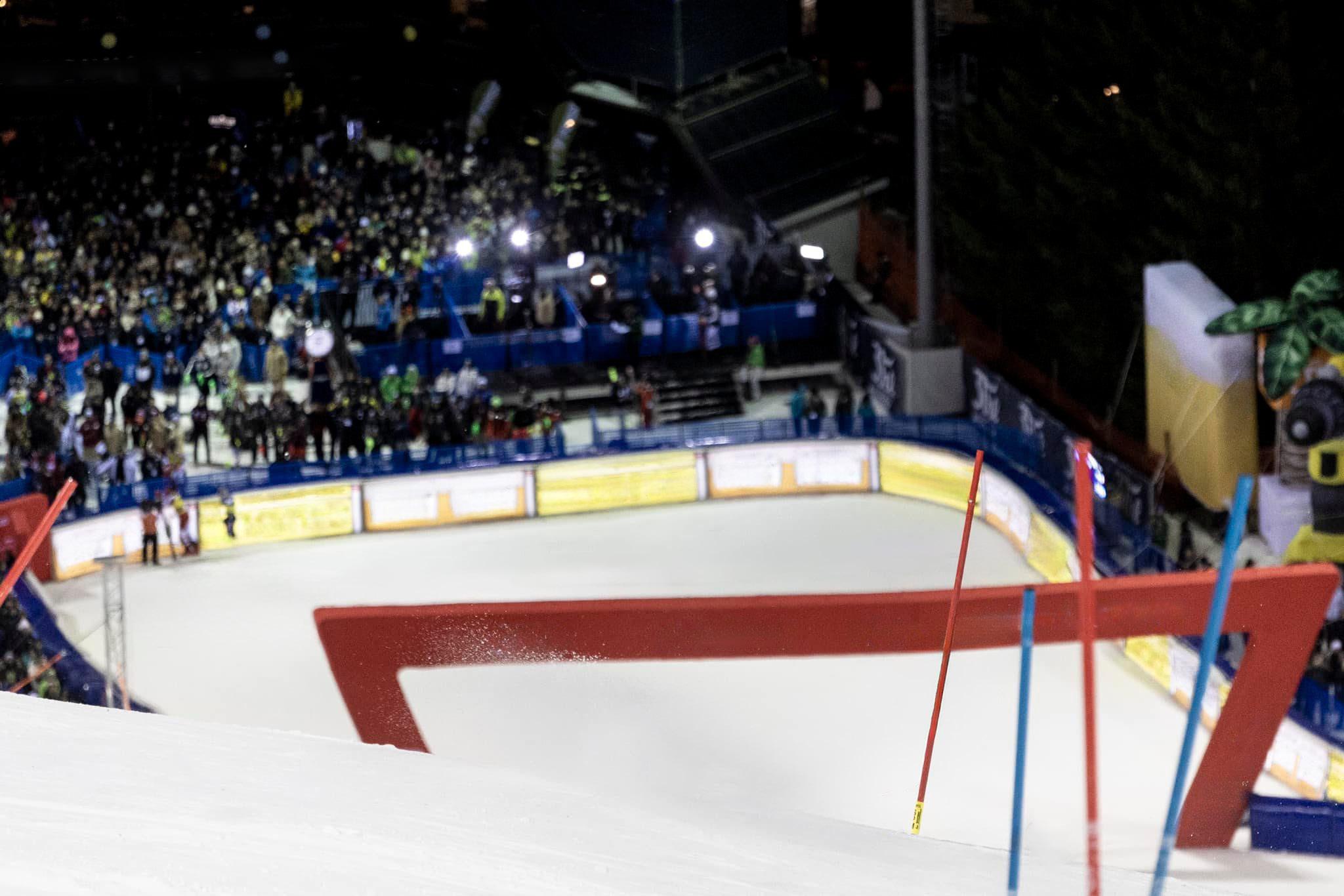
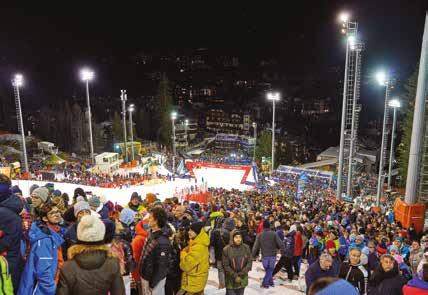
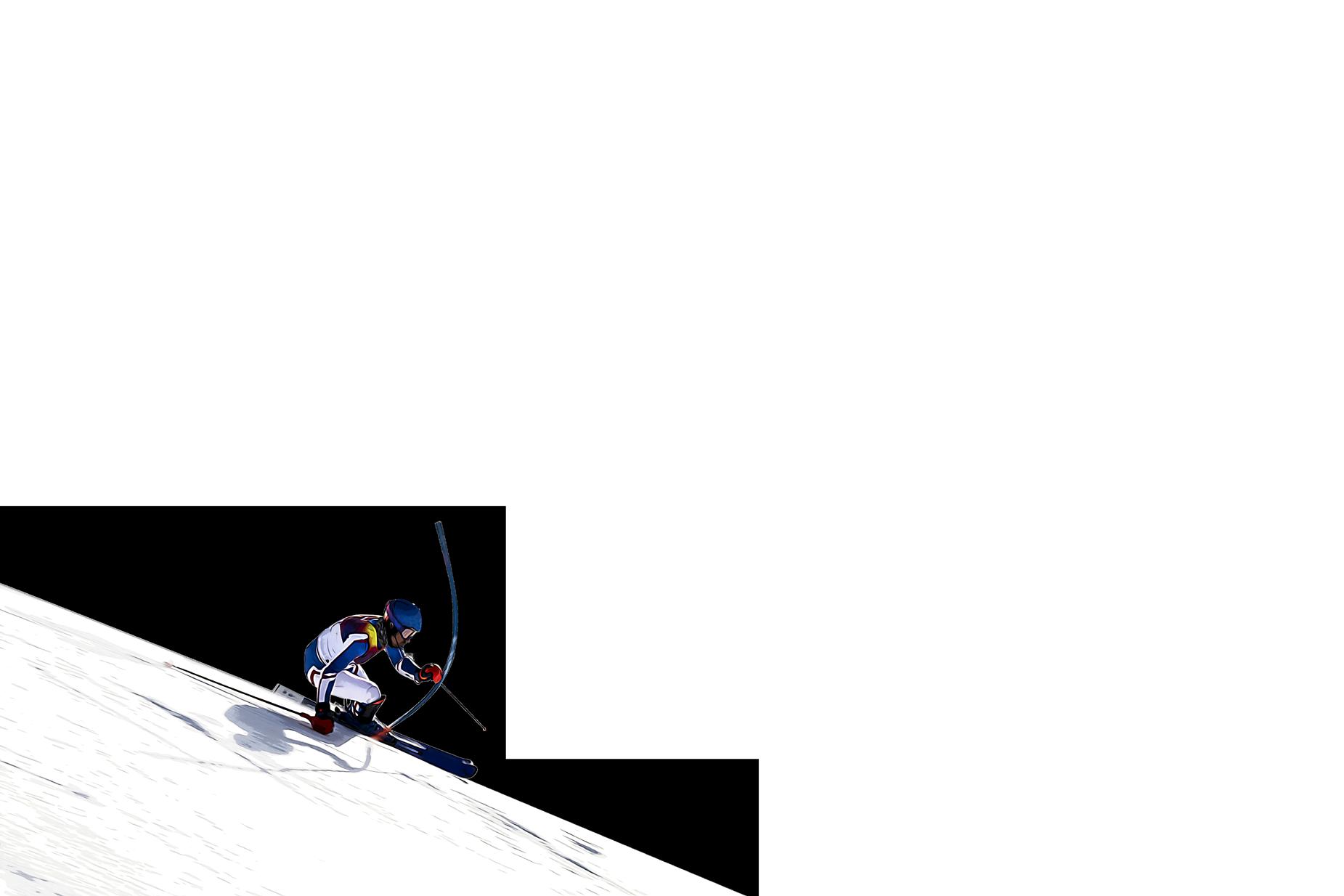
THURSDAY 7
MARTEDÌ TH
18.30 / Piazza Sissi ESTRAZIONE PETTORALI BIB DRAW


Dario Bertè, CEO dell’azienda di giocattoli di peluche Trudi, è un grande amante della montagna, e appassionato sciatore. “Scio da sempre, ed ho trasmesso questa passione anche ai miei due figli, uno dei quali è addirittura diventato maestro di sci”, racconta Dario. Frequentatore assiduo di diverse località alpine, Dario condivide la sua esperienza alla 3Tre. “La mia prima partecipazione dal vivo è avvenuta grazie a un invito dell’amico Giorgio Rocca, grande campione di slalom, una persona davvero gradevole, ed un ottimo maestro di sci.”Accompagnato dal vincitore dell’edizione 2005 della 3Tre, Dario ha potuto esplorare il comprensorio sciistico e vivere esperienze uniche. “La mia prima volta qui risale a diversi anni fa. Ricordo che arrivare a Madonna di Campiglio è stato emozionante, trovarsi di fronte il paese innevato ed il Canalone Miramonti illuminato, tirato a lucido. Da allora, tornare ogni anno è diventata per me una tradizione. Ho partecipato a quattro 3Tre Experience, l’iniziativa proposta nei giorni di gara. Ho scoperto piste strepitose, pranzato in rifugi suggestivi, ed anche percorso il tracciato a fianco degli atleti, durante la ricognizione della gara. Mi ha colpito che nonostante fossero molto focalizzati, si intrattenessero a parlare tra di loro. È una cosa che non avevo percepito dalla televisione, nonostante segua spesso le gare.” Dario ricorda con emozione l’accesso alla zona di partenza. Poter stare nella zona di partenza, poi, è stato davvero entusiasmante, immersi nel silenzio della fase di riscaldamento, in contrasto con il calore del pubblico, sempre numeroso, lungo la pista.”
L’esperienza di Dario non è stata solo personale, ma spesso condivisa. “Ho portato con me parenti e amici, e in occasione della gara stretto anche nuove amicizie e conosciuto persone interessanti, tutte affascinate dall’atmosfera elettrizzante che si crea ogni anno, tra la celebrazione della tradizione e le continue novità. È un evento che non smette mai di sorprendere.”
Dario Bertè, the CEO of the soft toy company Trudi, is a big fan of the mountains and a keen skier. “I’ve been skiing since was young, and I’ve also passed on this passion to my two sons. One of them has even become a ski instructor,” says Dario. Dario is a regular visitor to various Alpine resorts and is happy to share his experience at 3Tre. “I was lucky enough to get involved thanks to an invitation from my friend Giorgio Rocca, who’s a great slalom champion, a really nice person and an excellent ski instructor.” Dario got to explore the ski resort and live some unique experiences with the winner of the 2005 edition of 3Tre. “I first came here a few years ago. I remember the moment I arrived in Madonna di Campiglio was pretty special. I was greeted by a snow-covered village and the illuminated Canalone Miramonti, which looked absolutely stunning. Since then, I’ve made it a point to
come back every year. I’ve taken part in four 3Tre Experiences, which are held on race days. found some great slopes, had lunch in some lovely mountain huts, and even skied the slope during the course insepction. I was struck by how focused they were, but they still found time to chat with each other. I must admit that I hadn’t picked up on this from watching the races on TV, even though I’ve been following them quite closely”. Dario recalls entering the starting zone with a sense of emotion. “It was really exciting to be able to stand in the starting zone, immersed in the silence of the warm-up phase, in contrast to the warmth of the always numerous spectators along the track.” Dario’s experience wasn’t just personal, it was often shared too. “I’ve brought family and friends with me, and at the race I’ve also made new friends and met interesting people, all of whom are fascinated by the amazing atmosphere that is created every year, between celebrating tradition and introducing new things. It’s an event that never fails to amaze me”.

di/by PAOLO LUCONI BISTI
DALLA PRIMA MANOVIA DEL 1961
AL RADDOPPIO DELLA PISTA CON L’ADDIO ALLO SKILIFT E L’ARRIVO DELLA NUOVA SEGGIOVIA.
Éla storia di una passione, quella dell’impianto sciistico di Bolbeno Borgo Lares. Una passione che ha unito tante generazioni partendo da lontano, quando ancora negli anni Trenta del secolo scorso l’area attorno a Bolbeno cominciò a essere animata nei lunghi mesi invernali da un nuovo gruppo di appassionati sciatori, che in breve scoprirono e condivisero l’amore verso questo nuovo sport. Le vecchie immagini custodite nei cassetti di tante famiglie ci parlano di questo, di vecchi e lunghi sci di legno, maglioni di lana, lunghe e faticose salite alternate da brevi ma inebrianti discese.
From the first rope tow in 1961 to the doubling of the slope with the farewell to the old ski lift and the arrival of the new chairlift.
That of the Bolbeno Borgo Lares ski centre is the story of a true passion. It’s a passion which has brought together people from different generations, even as far back as the 1930s. At that time, the Bolbeno area was already buzzing with a new group of keen skiers during the long winter months. They quickly discovered and shared their love of this new sport. Old photos in many families’ attics show us what it was like: pictures of old wooden skis, woolly jumpers and long, tiring ascents, with short but thrilling descents in between.
Bolbeno: partenza di una gara negli anni Trenta.
La “Busa” di Tione in una cartolina nel 1936 con sciatori in primo piano.
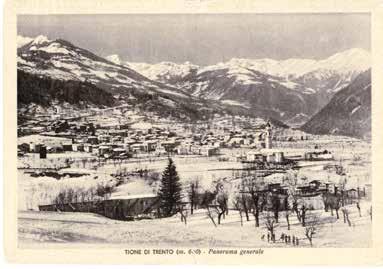
La passione di Bolbeno si concretizza nel 1961 quando, nel novembre di quel lontano anno, il locale Comune accoglie la domanda ricevuta pochi mesi prima dalla Pro loco di Tione di Trento e delibera la concessione di un mutuo di 100.000 lire per la realizzazione di un nuovo impianto di risalita sul proprio territorio. Si tratta di una manovia, ovvero di un cavo metallico al quale agganciarsi con una manovra “un po’ così” per la risalita. In breve questo primo rudimentale impianto si rivela troppo limitato, e nel 1967 fa la sua comparsa un nuovo fiammante skilift, dalla portata oraria di 360 persone e al servizio di una pista allungata. La tariffa al pubblico è assai conveniente: 50 lire per una corsa, 450 lire per dieci. Bolbeno diventa il centro di numerose competizioni. A sorreggere il lavoro organizzativo sono le Pro loco, lo Sci Club Soreghina e quello locale che, con l’aiuto di tanti volontari, propongono una lunga serie di gare soprattutto, ma non solo, giovanili che richiamano centinaia di piccoli campioni. Al Trofeo Franchini del 1970 partecipano quasi duecento piccoli campioni, che solo un anno dopo diventano

250. Nella memoria di tanti è rimasta l’immagine del primo piccolo gatto delle nevi, un “Prinoth P15” composto da due unità indipendenti e dotato di due motori Fiat 650 da 30 cavalli ciascuno. Nell’ottobre 1979 il bilancio ufficiale della sciovia “Coste di Bolbeno” parla di 10 milioni di lire di entrate e 7 di uscite.
Gli anni passano veloci, e nel 1987 lo skilift si rinnova, il vecchio impianto è sostituito da uno nuovo realizzato dalla Graffer Seggiovie di Trento che consente il raddoppio della portata oraria, che passa da 360 a 720 persone. Nel 1990 viene realizzato –tra lo scetticismo di molti – il primo impianto di innevamento artificiale, e al 1998 risalgono le prime convenzioni con i comuni limitrofi, a partire da quelli della “Busa” e della bassa Val Rendena. Oggi la lista dei comuni che usufruiscono dei servizi di Bolbeno supera quota 50. Il nuovo millennio si apre con il botto: nel dicembre 2001 il piccolo paese trentino finisce sulle pagine di tutti i giornali per una circostanza ancora oggi ben ricordata. All’inizio dell’inverno la neve a Campiglio latita, e Bolbeno si ritrova a
vendere alla rinomata località venti camion di neve, stesa sui prati ancora a secco di Campo Carlo Magno. Nel 2003 entra in funzione il campo “primi passi” servito da un tapis roulant, e nasce “Bolbenolandia”, parco giochi invernale pensato per più piccini, da sempre al centro dell’attività di Bolbeno. Nel 2008 lo Sci Club Bolbeno è insignito di un prestigioso riconoscimento, inserito tra i dieci migliori sci club d’Italia nel lavoro di avvicinamento dei bambini alla neve. Al contempo l’impianto sportivo offre per la prima volta un nuovo importante servizio, lo “speciale materne” pensato per le scuole materne dei comuni convenzionati, comprendente una giornata gratuita a “Bolbenolandia” con tutti servizi e il trasporto con pullman. Nel 2010 apre la Contea, imprescindibile servizio di ristorante-bar in fianco alla pista, e cinque anni dopo, per la prima volta, si accendono le luci del nuovo impianto di illuminazione. Il servizio di manutenzione e noleggio, altro fiore all’occhiello dell’impianto, oggi offre 1.500 paia di sci e scarponi, un deposito riscaldato e un angolo “shop”. La cronaca attuale riguarda le
Bolbeno: start of a race in the 1930s.
The ‘Busa’ of Tione in a postcard from 1936, with skiers in the foreground.
prossime novità: il raddoppio della lunghezza della pista, e la realizzazione di una nuova fiammante seggiovia “BolbenoPianezze” che servirà due nuovi tracciati, uno a utilizzo turistico e l’altro con vocazione sportiva, omologato per le competizioni Fisi di slalom gigante allievi e ragazzi. Bolbeno è oggi il centro di numerose iniziative, dallo sci d’erba ai campionati studenteschi passando per i memorial Cazzolli e Marchetti e numerose altre gare. Il calendario si chiude con il Trofeo Giovanissimi. L’impianto sciistico di Bolbeno, quindi, è tante cose. È la storia di generazioni di “bolbenati”, è un luogo di sport ma anche di aggregazione e lavoro, un servizio fiore all’occhiello di una comunità, alla portata geografica ed economica di tanti sciatori che possono intraprendere qui le loro prime curve sulla neve.
Bolbeno’s passion became real in 1961 when, in November of that distant year, the local municipality accepted the application from the Pro Loco office of Tione di Trento that had been received a few months earlier and decided to grant a loan of 100,000 Lire for the construction of a new ski lift on its territory. It was a rope tow, basically a metal cable that you could attach yourself to for the ascent up the ski slope. After a while, this first rudimentary system didn’t quite do the job and in 1967 a new, shiny ski lift appeared, with a capacity of 360 people per hour and serving an extended slope. The price for the public was very reasonable: 50 Lire for one ride, 450 Lire for ten. Bolbeno became the centre of many competitions. The organisational work was supported by the Pro Loco offices, the Soreghina Ski Club and the local ski club. With the help of many volunteers, these groups offered a long series of ski races, especially - but not only - for young people, attracting hundreds of young champions. There were almost two hundred young champions taking part in the 1970 Franchini Trophy and just a year later, that number had grown to 250.
Many people remember the first little snowcat, a ‘Prinoth P15’ made up of two separate units with two Fiat 650 engines of 30 horsepower each. The official balance sheet for the ‘Coste di Bolbeno’ ski lift in October 1979 showed income of 10 million Lire and expenditure of 7 million Lire. The years just flew by, and in 1987 the ski lift got a makeover. The old system was replaced
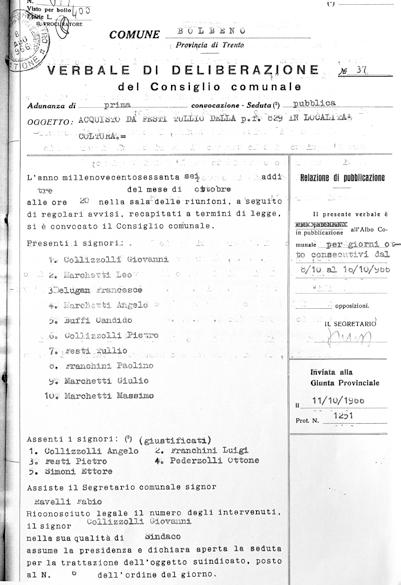
by a new one built by Graffer Seggiovie di Trento, which doubled the hourly capacity from 360 to 720 people. In 1990, many were sceptical when the first artificial snow system was built. But it was a success! The first agreements with neighbouring municipalities, starting with those of Busa and the lower Val Rendena, date back to 1998. Today, the list of municipalities using Bolbeno’s services exceeds 50.
The new millennium got off to a flying start: in December 2001, the small town in Trentino hit the headlines for an event that is still remembered today. At the start of winter, there was hardly any snow in Campiglio, so Bolbeno had to sell the resort twenty lorries of snow, which they spread on the still dry meadows of Campo Carlo Magno. In 2003, the “primi passi” ski camp, equipped with a treadmill, was opened and “Bolbenolandia” was
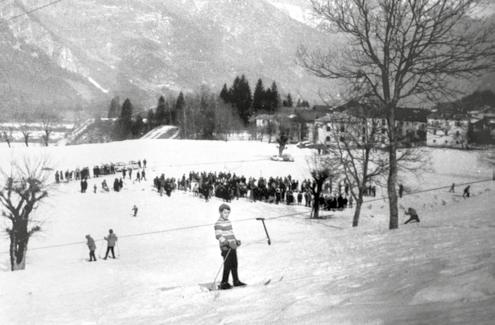
1966, delibera
la realizzazione dell’impianto
risalita. Bolbeno Town Council resolution from October 1966 for the construction of the ski lift.
born. This winter playground was designed for the youngest children, who have always been at the centre of Bolbeno’s activities. In 2008, the Bolbeno Ski Club received a prestigious award, being listed among the ten best ski clubs in Italy for its work in bringing children closer to the snow. Meanwhile, for the first time, the resort started offering an important new service, the “Nursery School Special”, for the nursery schools of the municipalities that have an agreement with the resort, which includes a free day at Bolbenolandia with all the services and bus transport. In 2010, the Contea, a great restaurant-bar right next to the slope, opened its doors. Five years later, the new lighting system was switched on for the first time. The maintenance and rental service is another great addition to the facility. It now offers 1,500 pairs of skis

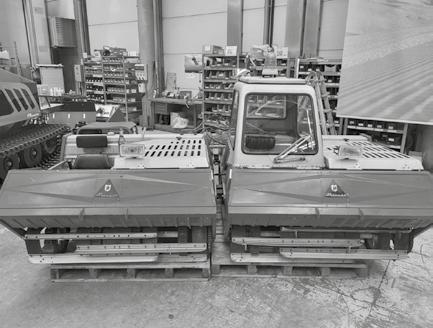
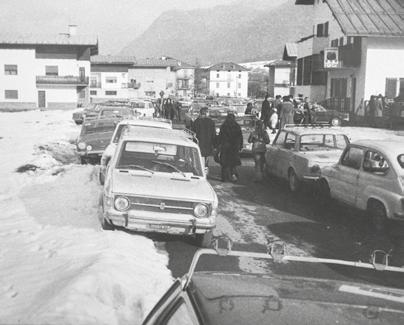
Pagina a fianco: Inverno 1965, foto ricordo di una gara di sci. Il mitico “Prinoth”, primo gatto delle nevi in quel di Bolbeno.
Winter 1965: souvenir photo of a ski race. The legendary “Prinoth”, the first snowcat in Bolbeno.
and boots, a heated depot and a shop corner. The latest news is about the upcoming news: the slope is getting twice as long, and there is a new ‘BolbenoPianezze’ chairlift being built. It will serve two new tracks: one for tourists and the other for sports. It will be used for Fisi giant slalom competitions for pupils and juniors. Bolbeno is now the centre of lots of different initiatives, from grass skiing to the student championships, with the Cazzolli and Marchetti memorial and numerous other competitions in between. The season ends with the Giovanissimi Trophy. The ski resort of Bolbeno is many things. It is the story of generations of “Bolbenati”, it is a place of sport but also of gathering and work, an emblem of a community, within geographical and economic reach of many skiers who can make their first turns on the snow here.

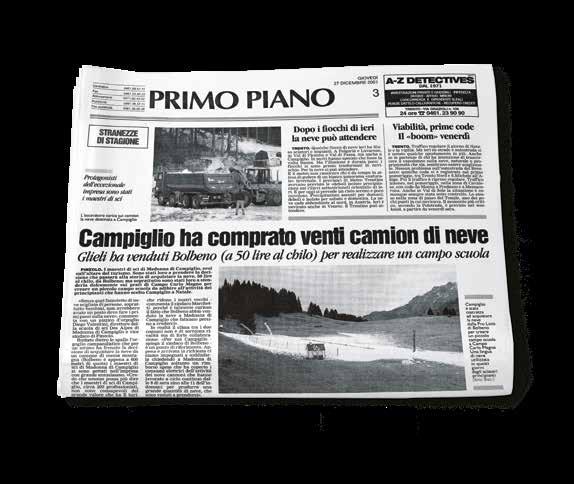
Dicembre 2001, Bolbeno vende la neve a Campiglio.
December 2001, Bolbeno sells snow to Campiglio.
Sotto: da oltre vent’anni la brochure racconta i programmi e la vita dell’impianto sciistico. Under: for more than twenty years, the brochure has told of the programmes and life of the ski resort.
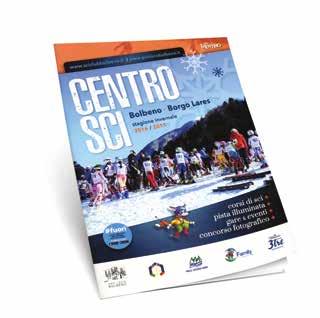
Sotto: il nuovo libro dedicato alla storia del Centro sciistico di Bolbeno Borgo Lares, in uscita a dicembre 2024.
Under: the cover of the new book about the history of the Bolbeno Borgo Lares Ski Centre, coming out in December 2024.
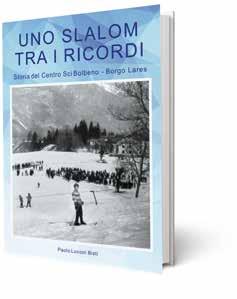
GLI APPUNTAMENTI PIÙ ATTESI DELL’INVERNO.
THE MOST EAGERLY AWAITED WINTER EVENTS.
1.12.2024-19.01.2025
Bondone e Baitoni
Decorazioni e addobbi collegano in un percorso unico le caratteristiche natività visitabili tra le vie di Baitoni, dove i presepi sono allestiti nelle barche collocate negli angoli più suggestivi del paese (“La via delle barche”, dal primo dicembre al 19 gennaio) e nei suggestivi vicoli di Bondone (“La via dei presepi”, dall’8 dicembre al 19 gennaio).
Pomeriggio speciale con il mondo incantato di “Bubble on circus” in occasione di “Baitoni in strada” (1 dicembre, ore 17.30). Magia, trampolieri, ballerine e giocolieri con costumi luminosi in concomitanza con “Bondone in strada” ( 8 dicembre, ore 17.30).
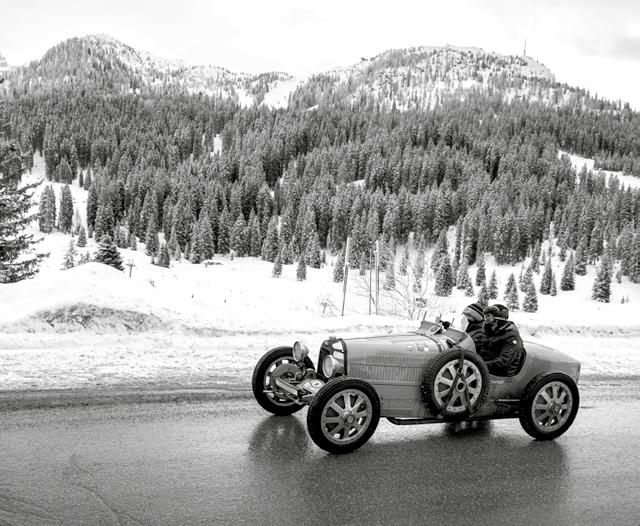
8.01.2025
Madonna di Campiglio
A gennaio si accendono le luci sul Canalone Miramonti per ospitare, in notturna, la 71esima edizione dello slalom maschile con i migliori specialisti al mondo. Nella successiva stagione agonistica l’appuntamento campigliano con lo slalom di Coppa del Mondo di sci sarà in calendario il 7 gennaio 2026.
WINTER MARATHON
23-26.01.2025
Madonna di Campiglio Questo evento iconico, uno dei più attesi nel calendario delle gare di regolarità per auto storiche, presenta ancora una volta una straordinaria combinazione di competizione e paesaggi mozzafiato, attirando appassionati da tutto il mondo nella suggestiva cornice dei passi delle Dolomiti e di Madonna di Campiglio.
CARNEVALE ASBURGICO
2-7.03.2025
Madonna di Campiglio
La tradizionale rievocazione storica per ricordare i soggiorni della principessa Sissi e dell’imperatore
Franz Josef a fine ‘800, tra carrozze, musiche e balli. Un salto indietro nel tempo per rivivere la magia della Corte Asburgica a Madonna di Campiglio.
13.04.2025
Storo
Scopri il calendario campigliodolomiti.it/it/eventi-top
View the calendar campigliodolomiti.it/en/top-events

Decorations and ornaments create a unique itinerary for the characteristic nativity scenes that can be visited along the streets of Baitoni, where the cribs are set up in boats placed in the most evocative corners of the village (“La via delle barche”, from 1st December to 19th January) and in the picturesque alleys of Bondone (“La via dei presepi”, from 8th December to 19th January).
A special afternoon with the enchanted world of ‘Bubble on Circus’ at ‘Baitoni in strada’ (1st December, 5.30 p.m). Magic, stilt-walkers, dancers and jugglers in sparkling costumes on the occasion of ‘Bondone in strada’ (8th December, 5.30 p.m.).
IL
MERCATINO
30.11.2024 - 1, 7, 8, 14, 15.12.2024
Quartinago di Cimego
Nell’antico borgo della Valle del Chiese, il Natale si accompagna a musica, luci, colori e sapori tipici della cucina locale che danno vita a singolari mercatini. Il primo sabato di ogni mese e durante mercatini, apertura del Museo Casa Marascalchi.
In Quartinago di Cimego, an ancient village in Valle del Chiese, Christmas is accompanied by music, lights, colours and typical flavours of local cuisine, which give life to unique markets. The Casa Marascalchi Museum is open every first Saturday of the month and during the markets.
26.12.2024 - 6.01.2025
Madonna di Campiglio
Radio Deejay torna in diretta live animando ed entusiasmando il pubblico di piazza Sissi con ospiti speciali, concerti con noti artisti e l’attesa festa di Capodanno.
Radio Deejay is back live to entertain the crowds in Piazza Sissi with special guests, concerts by famous artists and the eagerly awaited New Year’s Eve party.
20-21.12.2024
Pinzolo
Tornano a Pinzolo due tappe di Coppa del Mondo di Telemark. Le migliori atlete e migliori atleti di questa affascinante disciplina si sfidano sulle nevi del Doss del Sabion con due gare Sprint. All’evento sportivo si affianca “Telemark & Food experience”: due giorni dedicati al Telemark con diversi e sfiziosi appuntamenti culinari tra prodotti Slow Food, Qualità Trentino, km zero e vini Trentodoc.
The Telemark World Cup is coming back to Pinzolo for two stages. The best athletes in this fascinating discipline will compete in two sprint races on the snow of Doss del Sabion. The sporting event will be accompanied by the “Telemark & Food Experience”: two days dedicated to telemarking, with a variety of tasty culinary events, including products from Slow Food, Qualità Trentino, zero km and Trentodoc wines.
In January, the Canalone Miramonti will be lit up to host the 71st edition of the Men’s Slalom with the world’s best specialists. In the following racing season, the World Cup slalom in Campiglio will take place on 7th January 2026.
DUCATI- CAMPIONI IN PISTA
20.01.2025
Madonna di Campiglio
Per la terza volta consecutiva Ducati torna sulle nevi di Madonna di Campiglio presentando i suoi team ufficiali, le nuove moto e le novità della stagione 2025. Ducati is back in Madonna di Campiglio for the third year running, showcasing its teams, new bikes and 2025 season innovations.
This iconic event, one of the most highly anticipated in the vintage racing calendar, will once again offer an unbeatable combination of competition and stunning scenery, drawing fans from all over the globe to the picturesque setting of the Dolomite passes and Madonna di Campiglio.
Amid carriages, music and dancing, the traditional historical re-enactment commemorates the stay of Princess Sissi and Emperor Franz Joseph at the end of the 19th century. A step back in time to relive the magic of the Hapsburg court in Madonna di Campiglio.
WORLD ROOKIE TOUR
29.03-3.04.2025
Madonna di Campiglio L’Ursus Snowpark di Madonna di Campiglio, uno dei migliori park d’Europa, accoglie giovani freeskier provenienti da tutto il mondo, pronti a competere in entusiasmanti contest. The Ursus Snowpark in Madonna di Campiglio, one of the best parks in Europe, will welcome young freeskiers from all over the world to compete in exciting contests.
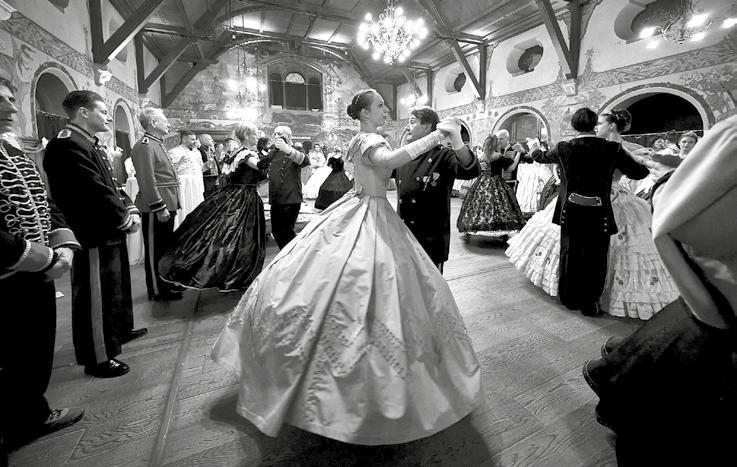
L’evento presenta e valorizza i prodotti da forno trentini realizzati con la farina gialla e bianca di Storo: oltre al famoso “Marano” c’è anche la farina bianca di Storo, una farina di grano tenero tipo 1 ottenuta dalla macinazione a pietra del frumento tenero. Il chicco di grano è utilizzato in tutte le sue componenti compresi il germe e la crusca, le parti più ricche di sostanze nutritive. The event showcases and promotes Trentino bakery products made with Storo yellow and white flours: in addition to the famous “Marano”, there is also Storo white flour, a type 1 wheat flour obtained by stone milling soft wheat. The wheat grain is used in all its components, including the germ and the bran, the most nutritious parts.
URSUS SPRING BREAK
19-20.04.2025
Madonna di Campiglio
Un weekend leggendario con tanto sport e una lineup di party epici. La festa per chiudere la stagione in bellezza, con snowboarder, freeskier, amici e dj pronti a portare musica e divertimento tra le cime innevate. A legendary weekend packed with sport and epic partying. The party to end the season on a high, with snowboarders, freeskiers, friends and DJs ready to bring music and fun to the snowy peaks.
LE ESPERIENZE INVERNALI PIÙ SUGGESTIVE.
THE MOST EVOCATIVE WINTER EXPERIENCES.
AL CHIARO DI LUNA
15.12.2024
13.01.2025
12.02.2025
Madonna di Campiglio
In tre serate invernali di luna piena, ci si lascia guidare dal chiarore che rende meno buia la notte. Un’esperta guida alpina accompagna i partecipanti in un’escursione caratterizzata dal silenzio del bosco e dalla magia della luce argentea della luna. All’arrivo, una piacevole calda sorpresa.
On three winter evenings with a full moon, we will be guided by the light that makes the night less dark. An experienced mountain guide accompanies the participants on a walk characterised by the silence of the forest and the magic of the silvery moonlight. On arrival, a warm and pleasant surprise awaits you.
TRENTINO SKI SUNRISE
25.01.2025
1.02.2025
8.02.2025
15.02.2025
Madonna di Campiglio e Pinzolo
CAMPIGLIO SUNSET SKI
22.02.2025
28.02.2025
13.03.2025
Madonna di Campiglio
A chiusura impianti, una corsa speciale in telecabina porta in quota. Poi si degusta un aperitivo accompagnato da sfiziosi finger food nei rifugi più panoramici e, all’imbrunire, si ridiscende, sci ai piedi e fiaccola in mano, accompagnati dai maestri di sci.
When the lifts close, a special cable car will take you up to altitude. Afterwards, an aperitif with delicious finger food is served in the most picturesque mountain huts, and at dusk you descend with skis on your feet and a torch in your hand, accompanied by ski instructors.
DOLOMITI NATURAL WELLNESS
6.12.2024- 4.04.2025, tutti i lunedì e i venerdì every Monday and Friday
Madonna di Campiglio e Carisolo
of winter, focusing on four themes: life under the snow, the cold friend, the silence of snow and land art.
5.03.2025
Madonna di Campiglio Mentre si sorseggia un tè con Sissi, nel meraviglioso
Salone Hofer dell’Hotel
7.03.2025
Madonna di Campiglio Il momento più atteso del Carnevale asburgico: il Gran ballo dell’Imperatore presso lo storico Salone Hofer che ritorna ai fasti di fine ‘800 ospitando un emozionante ballo in costume tradizionale con dame a cavalieri che danzano valzer, quadriglie, marce e polke in un’atmosfera che ricorda i balli presso la Corte di Vienna.
4.12.2024-26.03.2025, tutti i mercoledì every Wednesday Pinzolo-Doss del Sabion Volo in parapendio in tandem con istruttore Wings2Fly per ammirare valli e vette al tramonto del sole. Per chi è alla ricerca di forti emozioni, un tuffo nella bellezza più pura.
Tandem paragliding with a Wings2Fly instructor to admire the valleys and peaks at sunset. For thrill-seekers, a plunge into pure beauty.
APERIFONDO
21.01.2025
18.02.2025
11.03.2025
Campo Carlo Magno Escursione al tramonto con gli sci da fondo intercalata da gustose tappe con assaggio di prodotti tipici locali e alcuni classici che contraddistinguono un aperitivo inimitabile.
Cross-country skiing at sunset, with stops to taste typical local products and some classics for an inimitable aperitif.
SNOWGA
6.12.2024-25.04.2025, tutti i venerdì every Friday Lago di Nambino Sessione di yoga circondata dalla magia della neve e dalla suggestiva cornice del lago di Nambino. Momento di connessione tra respiro e natura dove ogni asana è arricchita dall’energia pura delle montagne innevate. A seguire merenda dolce e salata presso l’omonimo rifugio.
Scopri il calendario e prenota la tua esperienza su campigliodolomiti.it/it/esperienze View the calendar and book your experience at campigliodolomiti.it/en/experiences

Una deliziosa colazione presso uno dei rifugi in quota mentre si ammirano i colori dell’alba e il sorgere del sole. Poi si tracciano le prime curve sulle immacolate piste da sci della Skiarea, ancora chiuse agli sciatori.
Enjoy a delicious breakfast in one of the high mountain huts and admire the colours of dawn and sunrise. Then it’s time to trace the first turns on the immaculate ski slopes of the Skiarea, still closed to skiers.
I lunedì al lago di Nambino a Campiglio e i venerdì al Castagneto di Carisolo, escursione con trainer del benessere per sperimentare attività sensoriali con gli elementi naturali dell’inverno, ponendo l’attenzione su quattro temi: la vita sotto la neve, amico freddo, il silenzio della neve, land art.
On Mondays at Lake Nambino in Campiglio and on Fridays at Castagneto di Carisolo, excursions with wellness trainers to experience sensory activities with the natural elements
Des Alpes, lo storico Paolo Luconi Bisti e Giordana Luchesa, esperta di costumi storici e componente del Corist (Coordinamento rievocatori storici trentini), narrano alcuni aneddoti e curiosità sui soggiorni di Elisabetta di Baviera a Madonna di Campiglio. While sipping tea with Sissi in the splendid Salone Hofer of Hotel Des Alpes, local historian Paolo Luconi Bisti and Giordana Luchesa, an expert in historical costumes and a member of Corist (Coordinamento rievocatori storici trentini - Trento Coordination of Historical Reenactors), recount some anecdotes and curiosities about Elisabeth of Bavaria’s stays in Madonna di Campiglio.
SCIATA ASBURGICA
6.03.2025
Madonna di Campiglio Sciata in costume d’epoca insieme alla coppia imperiale sulle piste della Skiarea
Madonna di Campiglio Dolomiti di Brenta. Skiing in period costume with the imperial couple on the slopes of the Madonna di Campiglio Dolomiti di Brenta Skiarea.
The most eagerly awaited moment of the Habsburg Carnival: the Emperor’s Grand Ball in the historic Salone Hofer, which returns to the splendour of the late 19th century with an exciting ball in traditional costume. The ladies with their cavaliers dance waltzes, quadrilles, marches and polkas in an atmosphere reminiscent of the dances at the Viennese court.
BIRRA E SAPORI DELLE DOLOMITI
30.11.2024-26.04.2025, tutti i sabati every Saturday Madonna di Campiglio Visita al birrificio alpino 1550 per conoscere il processo di produzione della birra guidati dai mastri birrai. Mentre si degustano le birre si scoprono i segreti dell’arte birraia artigianale e l’utilizzo di ingredienti coltivati presso aziende agricole del territorio. Visit the 1550 Alpine Brewery and learn about the brewing process from Visit the 1550 Alpine Brewery and learn about the brewing process from master brewers. While tasting the beers, discover the secrets of craft brewing and the use of ingredients grown on local farms.
9.01-3.04.2025, tutti i giovedì every Thursday Madonna di Campiglio Escursione in notturna, accompagnati dalle Guide alpine di Madonna di Campiglio, con gli sci d’alpinismo salendo lungo pendii innevati, sosta in rifugio e ritorno a valle lungo le piste.
A night excursion accompanied by the Madonna di Campiglio Alpine Guides on skis up snow-covered slopes, with a stop at a mountain refuge and a return to the valley along the slopes.
17.12.2024-15.04.2025, tutti i martedì every Tuesday Caderzone Terme Relax con sauna, bagnoturco e idromassaggio presso le Terme Val Rendena-Borgo della salute. A seguire cena a lume di candela presso l’albergo Palazzo Lodron Bertelli - Dimora storica. Salute e cultura si fondono offrendo un connubio che profuma di benessere e quiete.
Relaxation with sauna, Turkish bath and hydromassage at Terme Val Rendena - Borgo della Salute. Followed by a candlelight dinner at Hotel Palazzo Lodron BertelliHistorical Residence. Health and culture come together to offer a combination that smells of wellbeing and tranquillity.
A yoga session surrounded by the magic of snow and the picturesque setting of Lake Nambino. A moment of connection between breath and nature, where each asana is enriched by the pure energy of snow-covered mountains. Followed by a sweet and savoury snack in the refuge of the same name.
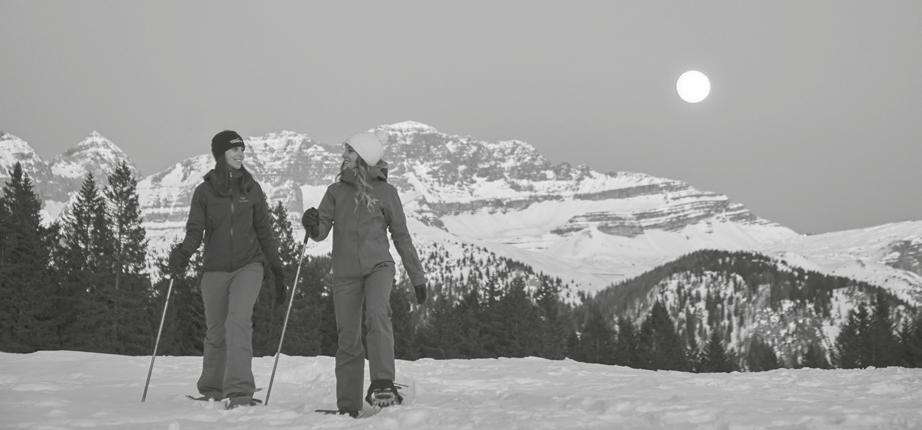
OUTDOOR FESTIVAL
7-8.06.2025
Pinzolo
Un’avventura unica con la Granfondo (117 km) per agonisti e appassionati delle due ruote che da Pinzolo arriva al Lago di Garda e ritorno. Ci sono anche la Mediofondo lunga 75 km e la Brenta Bike Experience di 140 km, pedalata libera aperta a tutti i tipi di bicicletta ed e-bike abbinata ad un’esperienza gastronomica. Gli appassionati della corsa in montagna possono scegliere tra l’Ultra trail (49 km che porta da Pinzolo fino ai piedi del Grostè), il percorso Medio (22 km) e il percorso Short (10 km). The Granfondo (117 km) is a unique adventure for agonists and two-wheel enthusiasts from Pinzolo to Lake Garda and back. There is also the 75 km Mediofondo and the 140 km Brenta Bike Experience, a free ride open to all types of bicycles and e-bikes, combined with a gastronomic experience. Mountain runners can choose between the Ultra trail (49 km from Pinzolo to the foot of Grostè), the Medium trail (22 km) and the Short trail (10 km).
20-21.06.2025
Roncone, Sella Giudicarie
Fa tappa a Roncone la 21esima edizione della gara di ciclismo su strada più affascinante d’Europa. Percorsi spettacolari attraverso passi di montagna e famose località con partecipanti provenienti da oltre 35 paesi. The 21st edition of the most fascinating road race in Europe will be held in Roncone. Spectacular routes through mountain passes and famous towns with participants from over 35 countries.
21-29.06.2025
Pinzolo
Terza edizione dell’evento di inizio estate a Pinzolo con vibrazioni ad alta frequenza, che vedono protagonisti concerti e la musica, e a bassa frequenza dedicati alle esperienze e a un più intimo contatto con la natura.
The third edition of the early summer event in Pinzolo, with high-frequency vibrations, with concerts and music, and low-frequency vibrations, dedicated to experiences and a more intimate contact with nature.
28-29.06.2025
Pinzolo
Entusiasmante gara di mountain bike che ha superato le dieci edizioni. Due le formule proposte: la Marathon di 67 km con passaggi tanto spettacolari quanto tecnici che sfiorano le Dolomiti di Brenta, la Race da 41 km con percorso nei dintorni di Madonna di Campiglio e la E-Dolomitica, randonnée di 43 km in sella alla e-bike abbinata alla degustazione di prodotti tipici locali.
An exciting mountain bike race that has already been held ten times. Two formulas are proposed: the 67 km Marathon, with spectacular and technical passages that skirt the Brenta Dolomites, the 41 km Race, with a route around Madonna di Campiglio, and the E-Dolomitica, a 43 km randonnee in the saddle of an e-bike combined with the tasting of typical local products.
30.06-6.07.2025
Pinzolo
Una settimana in cui coltivare la propria salute psicofisica attraverso un concetto di wellness multidimensionale e apprendere una nuova consapevolezza verso la scelta di sani stili di vita. Un evento adatto a tutti, in un contesto naturalmente terapeutico.
A week to cultivate your psychophysical health through a multidimensional wellness concept and to learn a new awareness of a healthy lifestyle. An event suitable for everyone, in a natural therapeutic context.
5-12.07.2025
Madonna di Campiglio Sono migliaia, provenienti da tutto il mondo, gli atleti che si cimentano, ad inizio luglio, con questo sport. Muniti di una carta topografica e di una bussola, partecipanti devono completare il percorso nel minor tempo possibile raggiungendo tutti i posti di controllo lungo il tragitto.

Thousands of orienteers from all over the world, equipped with a topographical map and a compass, have to complete the course in the shortest possible time, reaching all the lanterns, i.e. checkpoints, marked on the map and positioned along the route.



